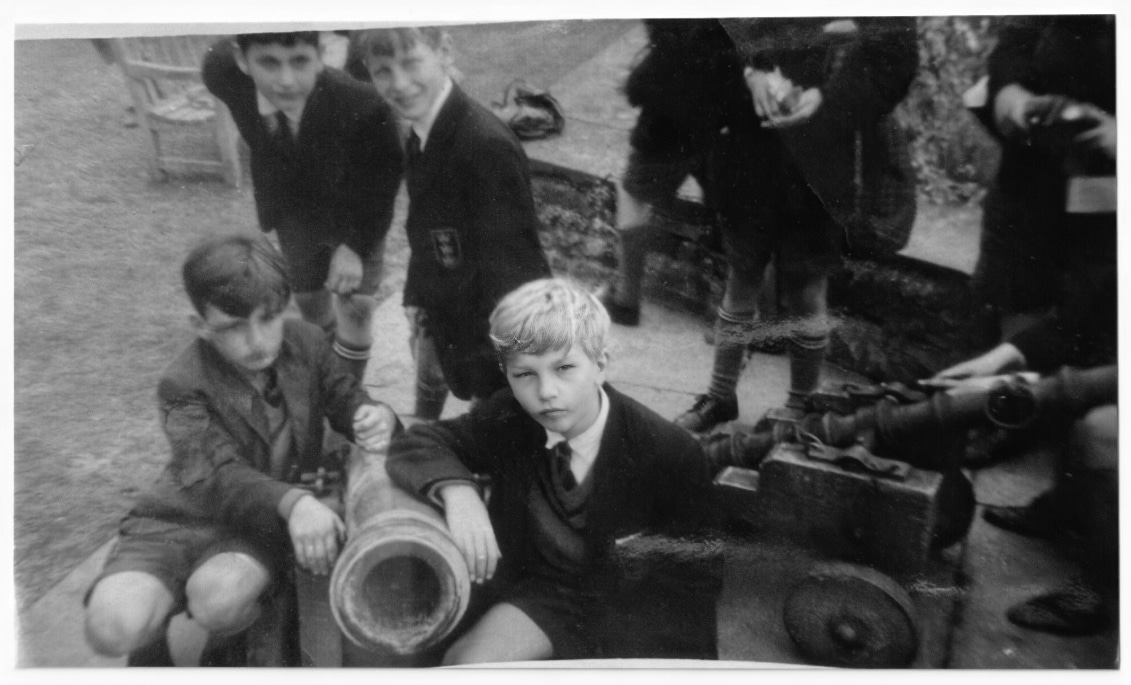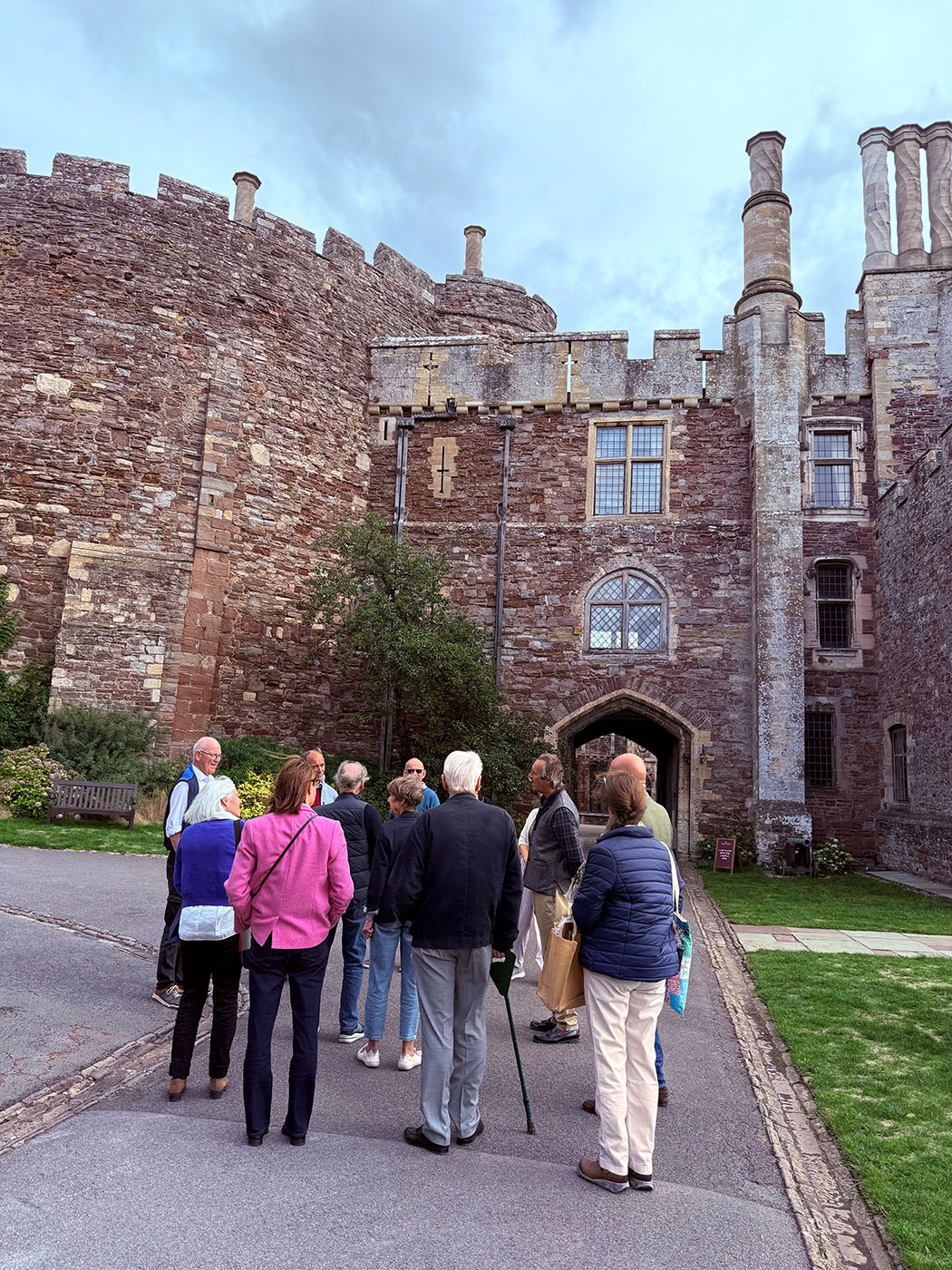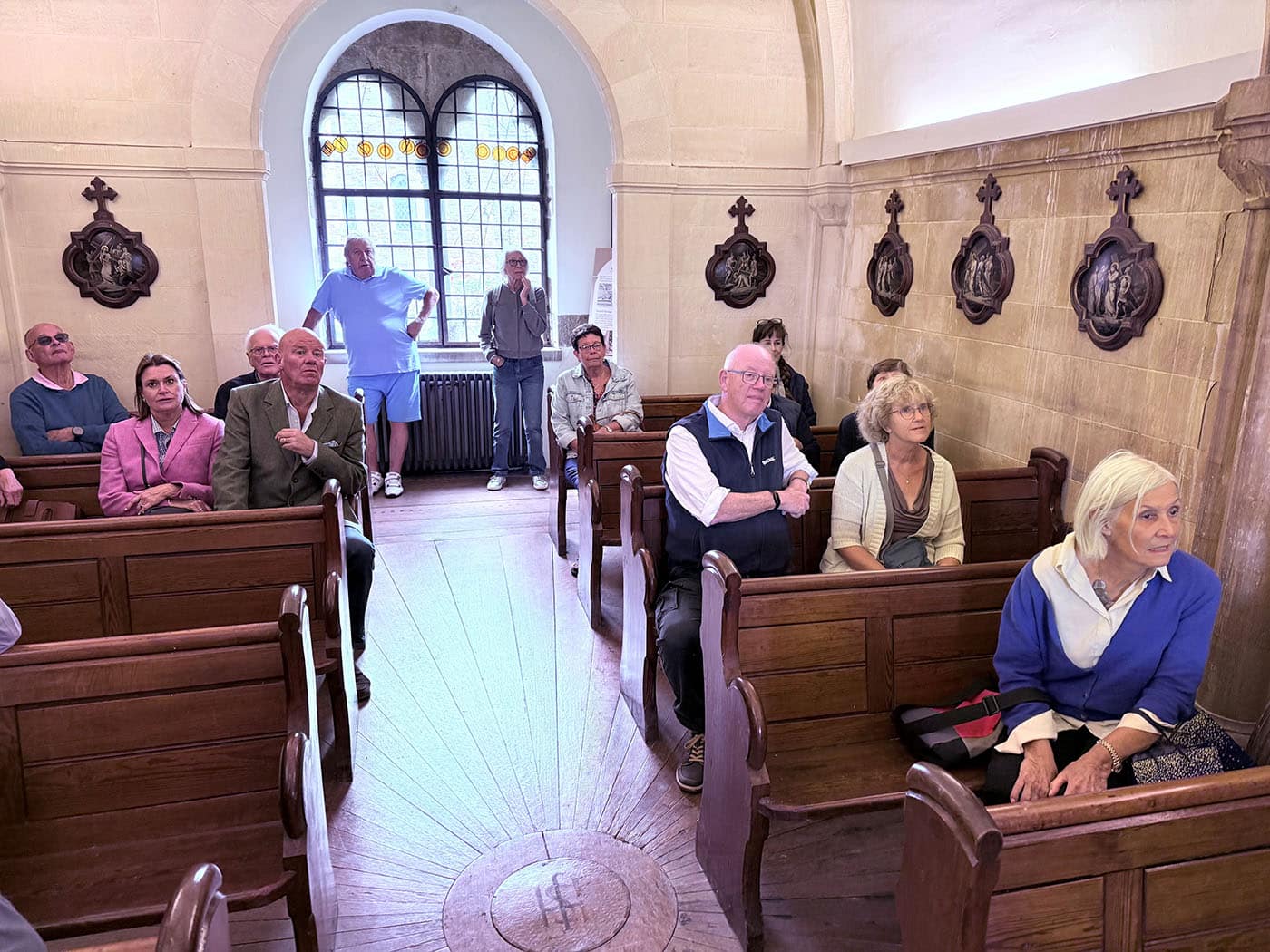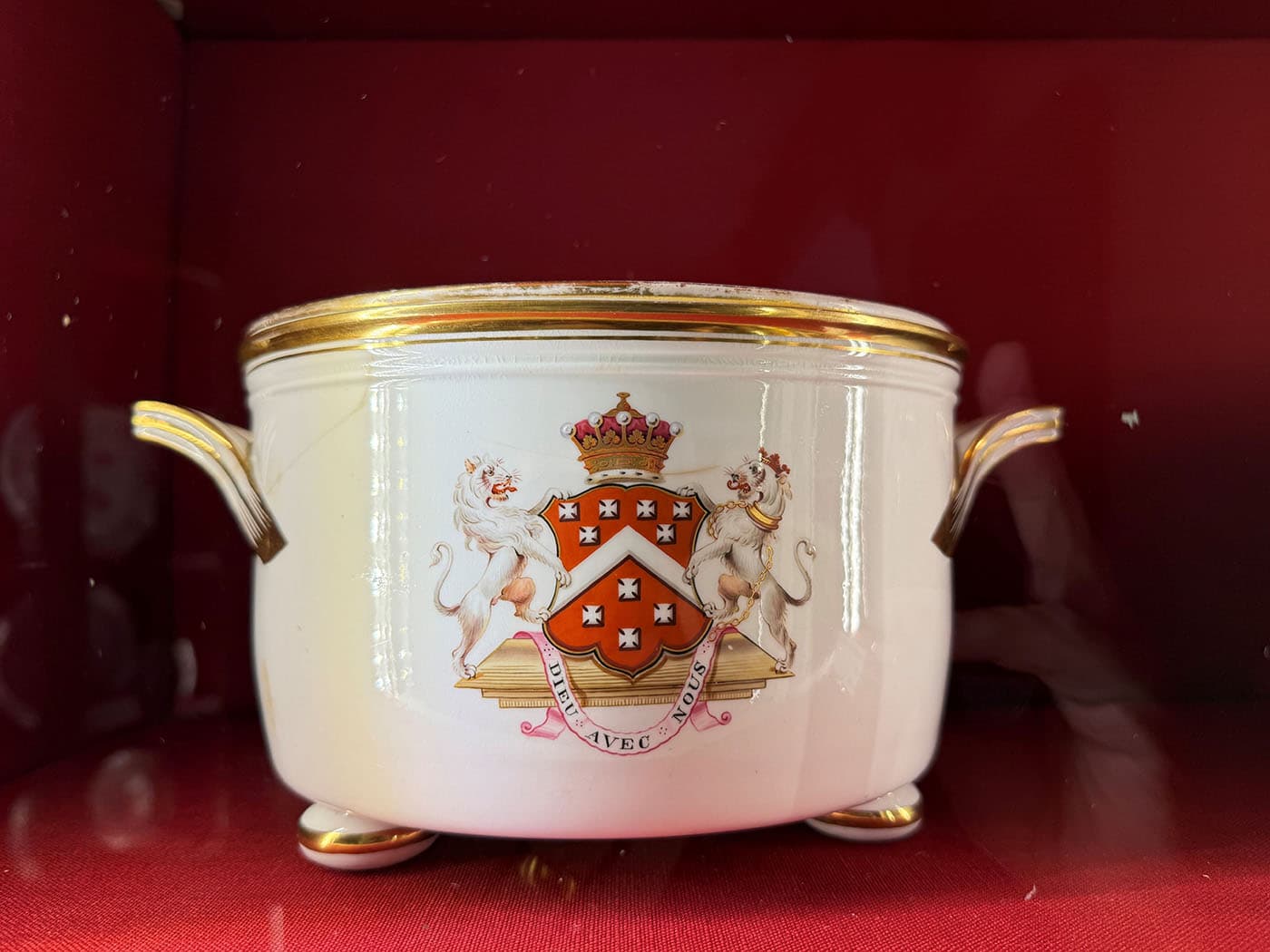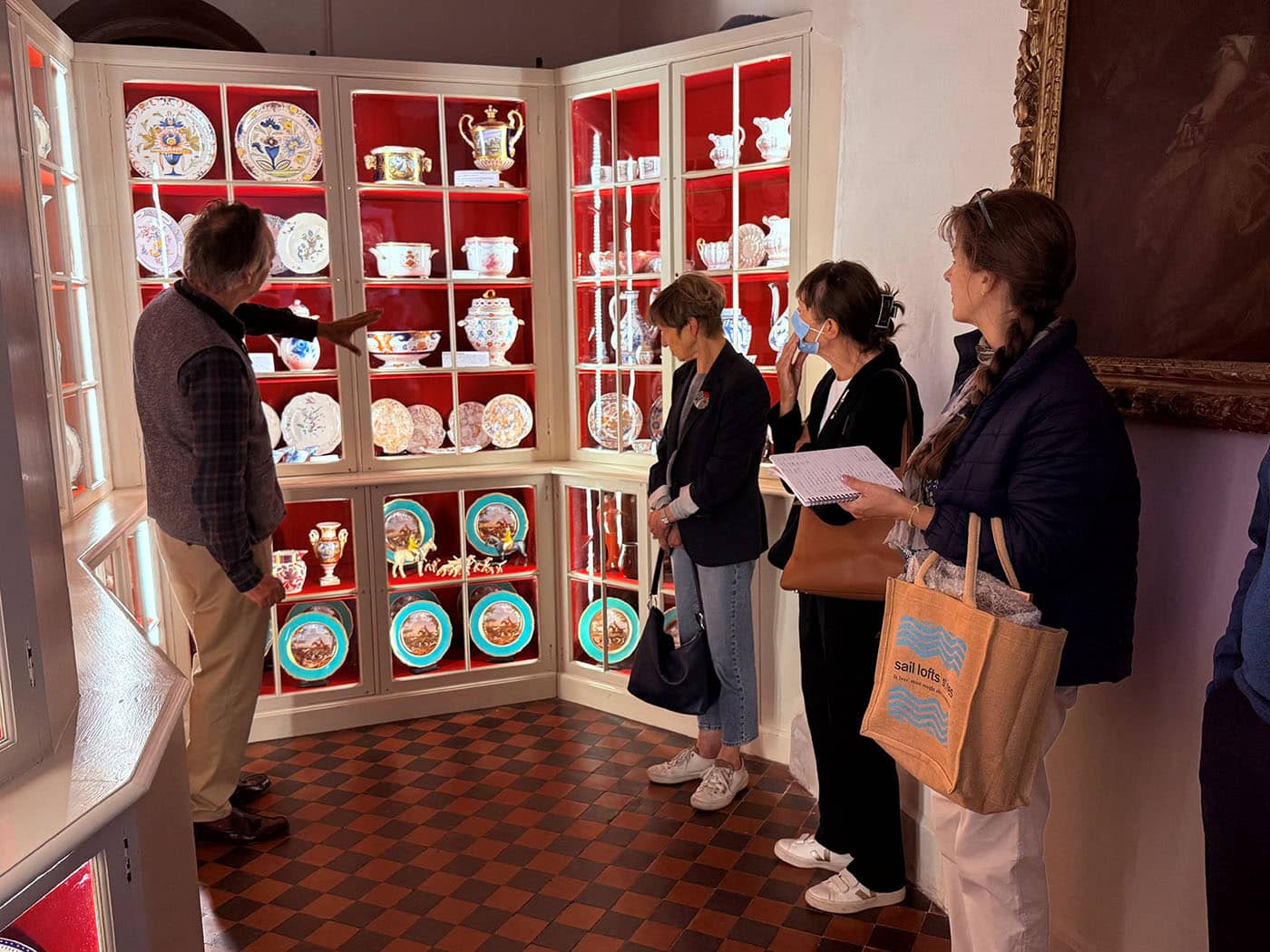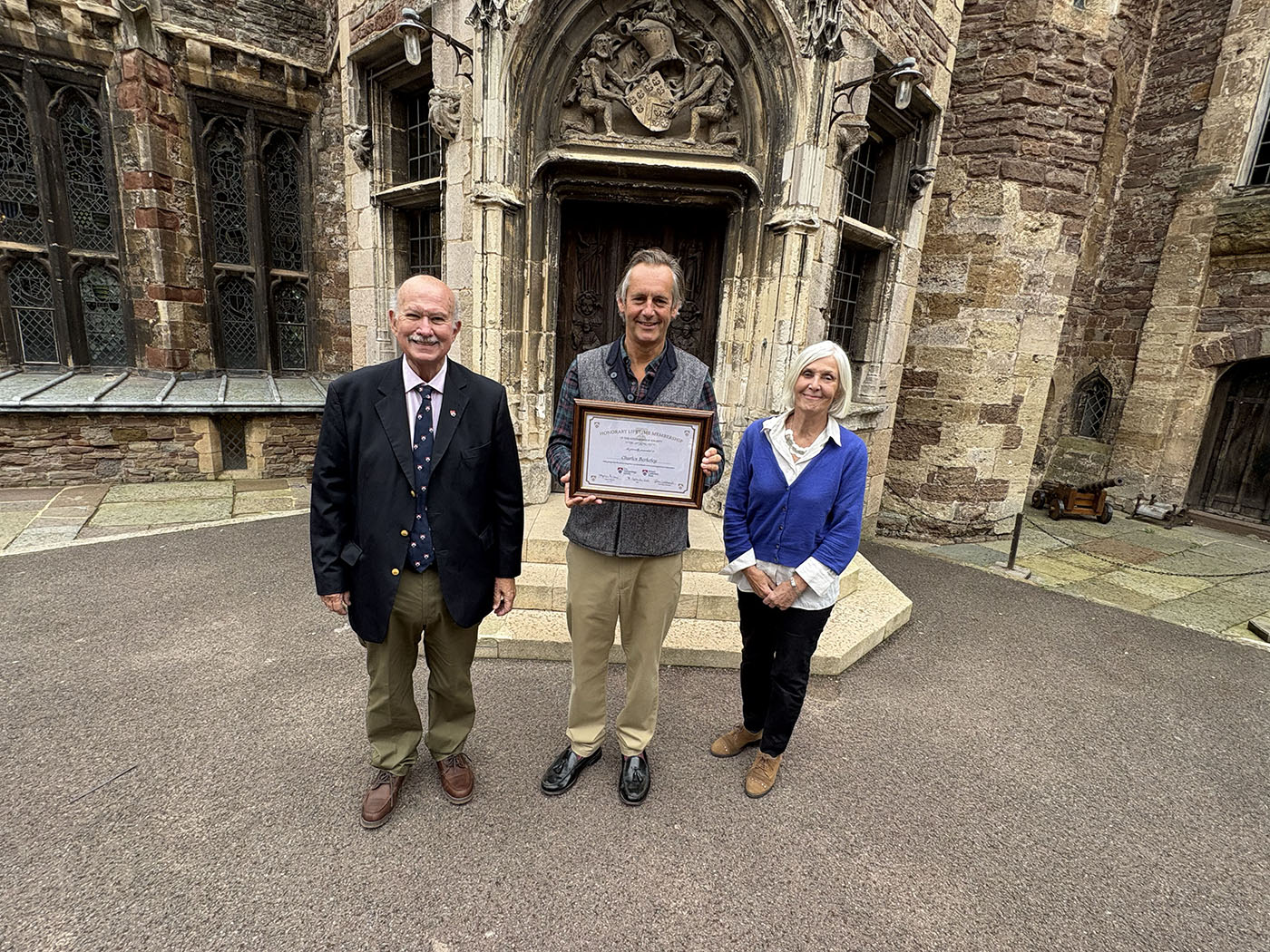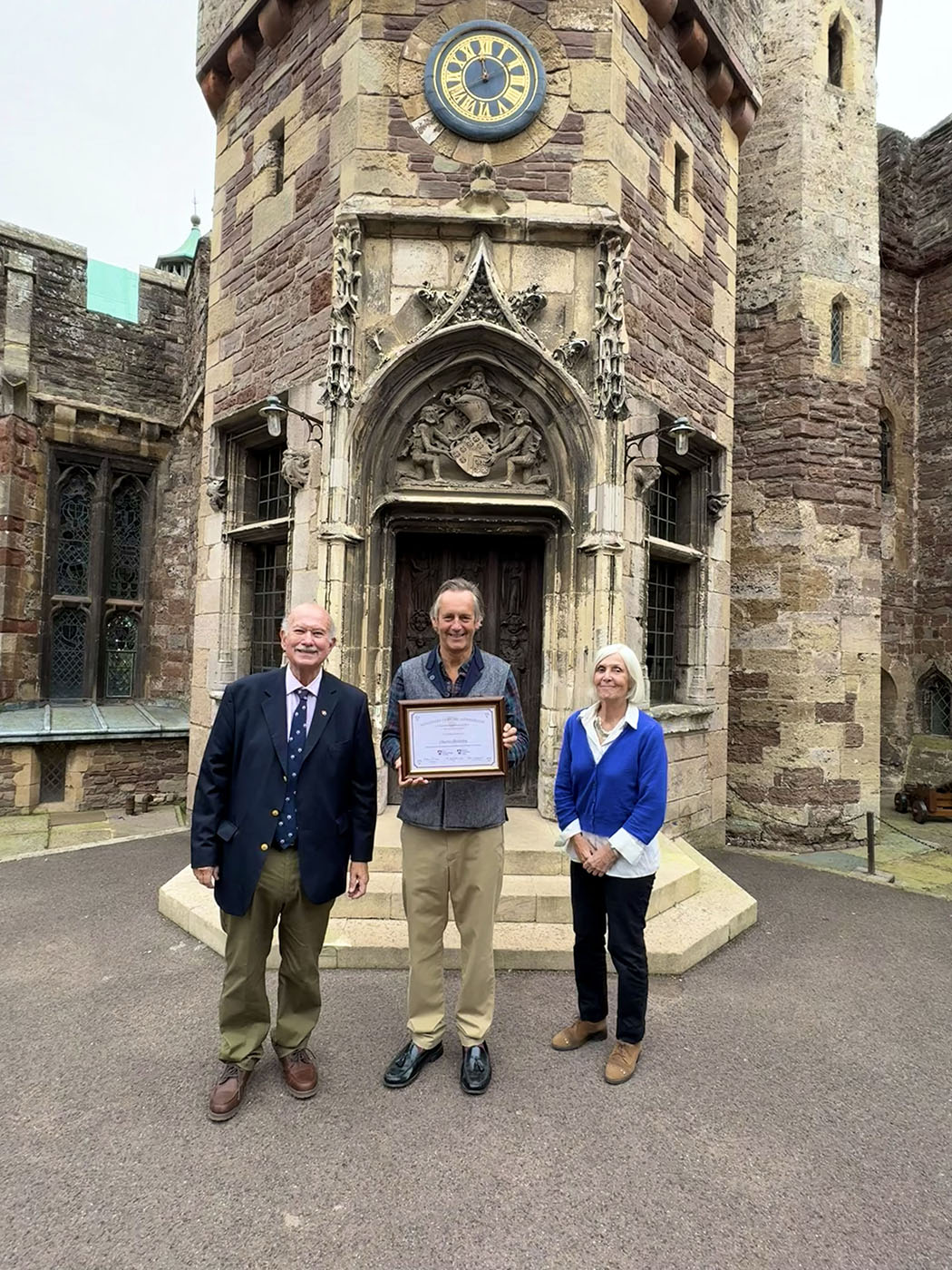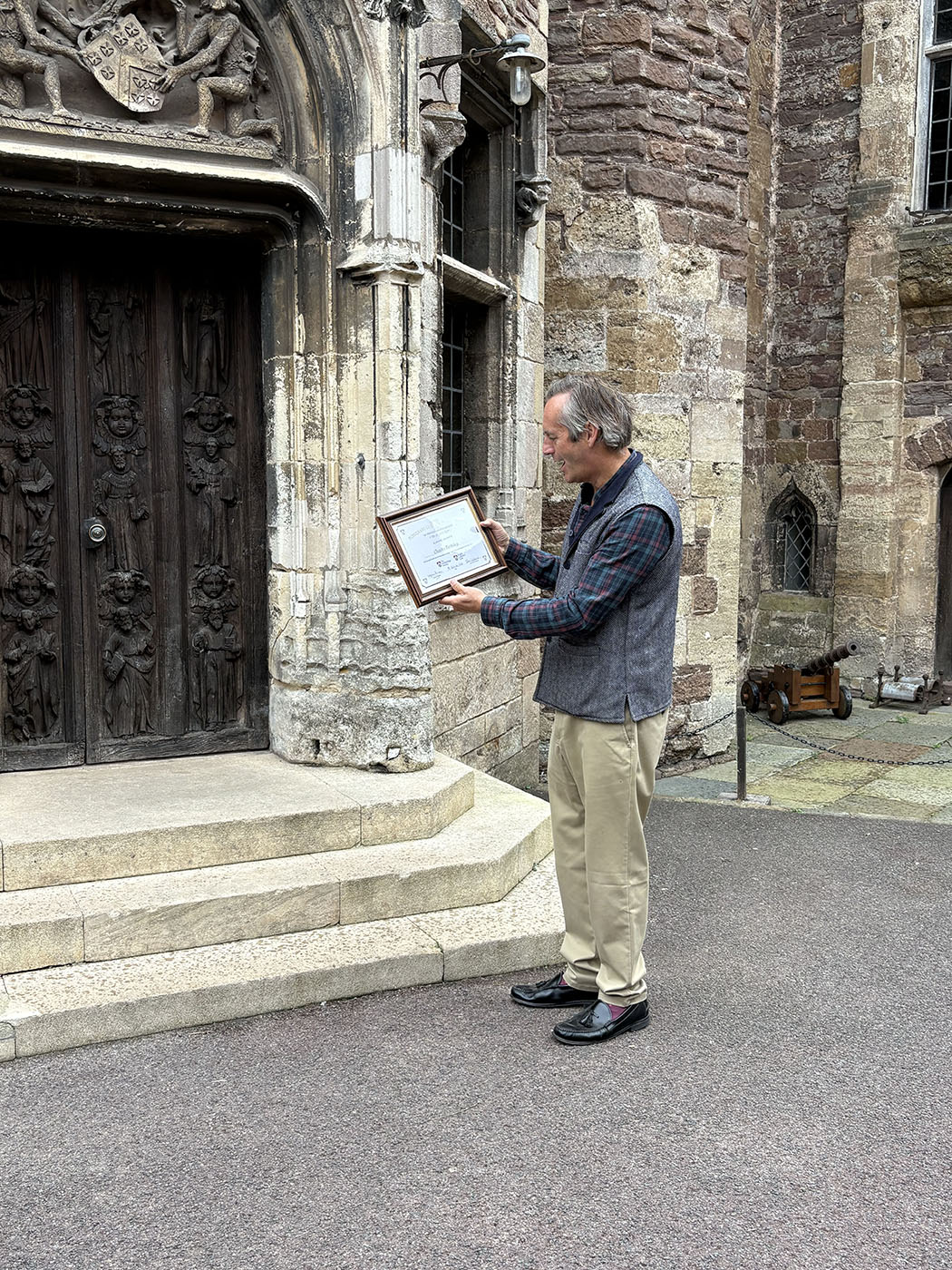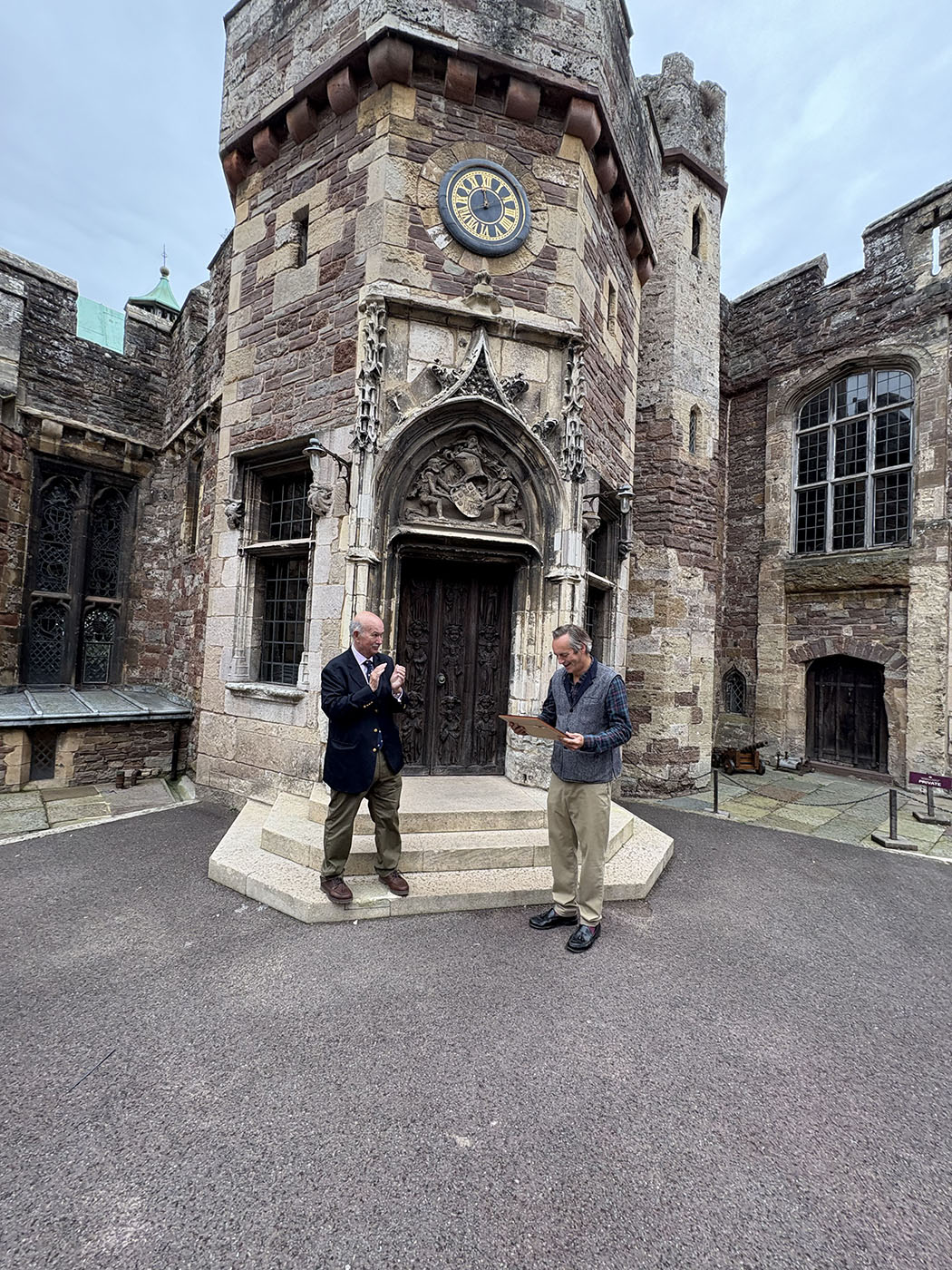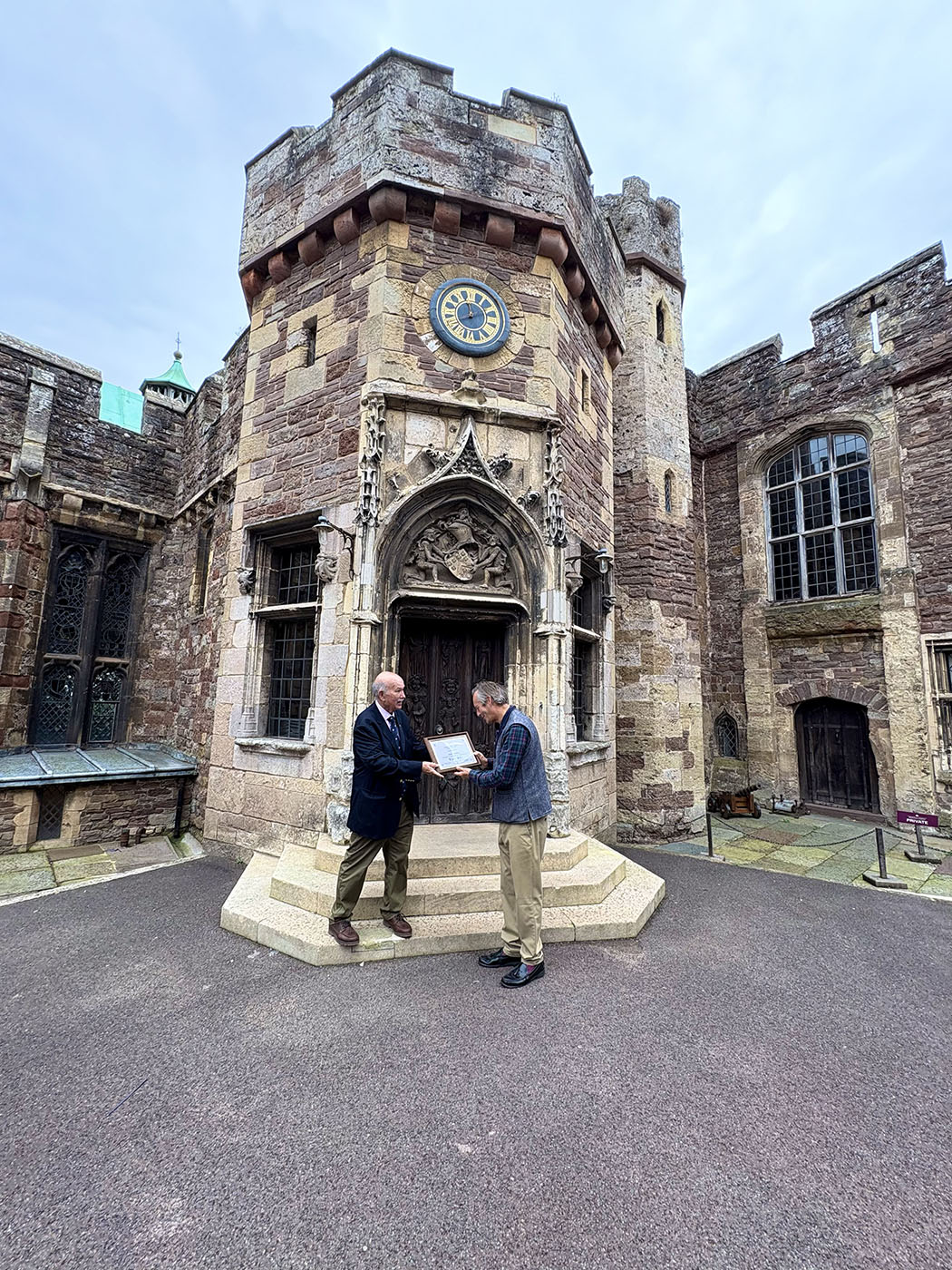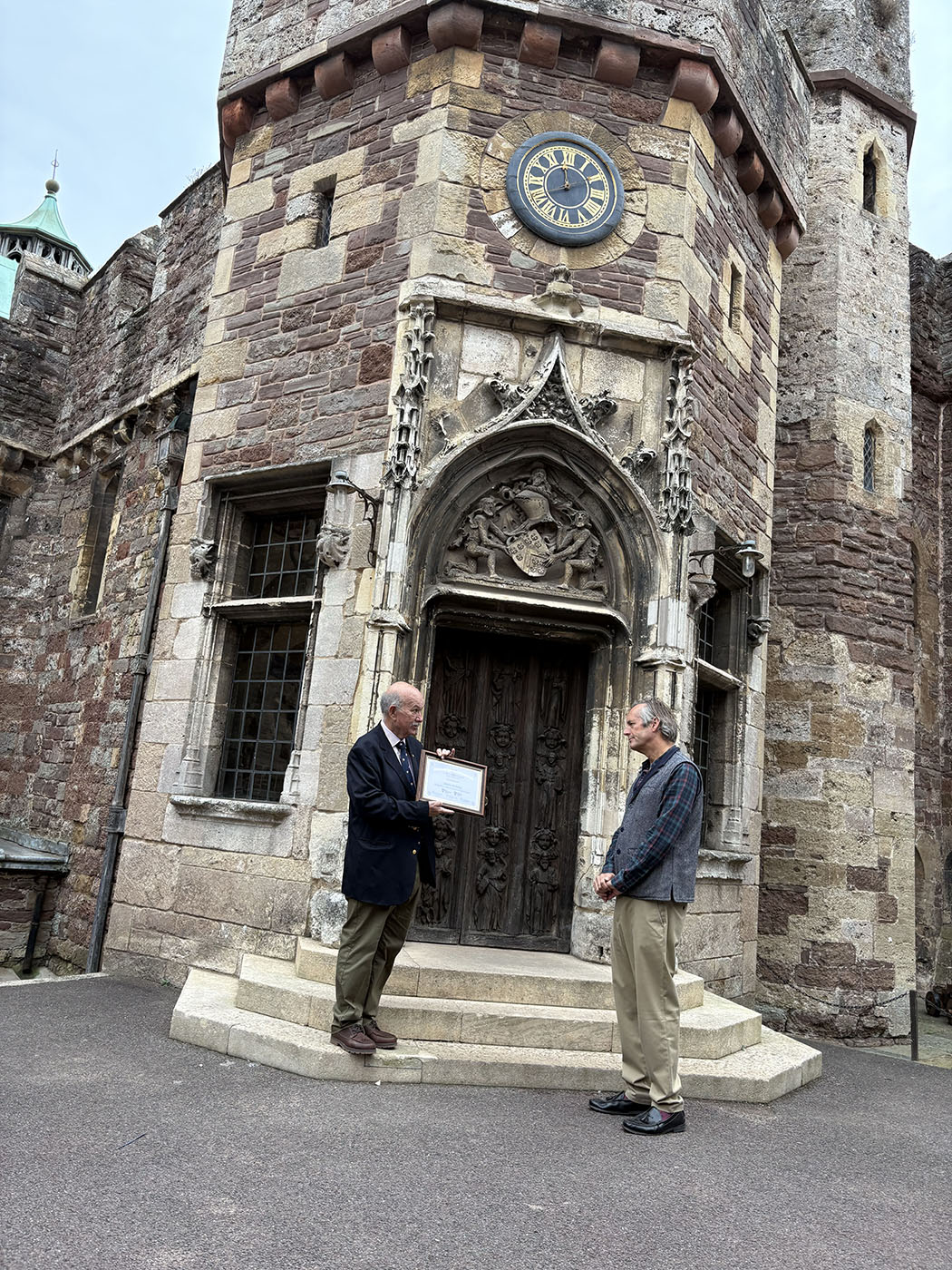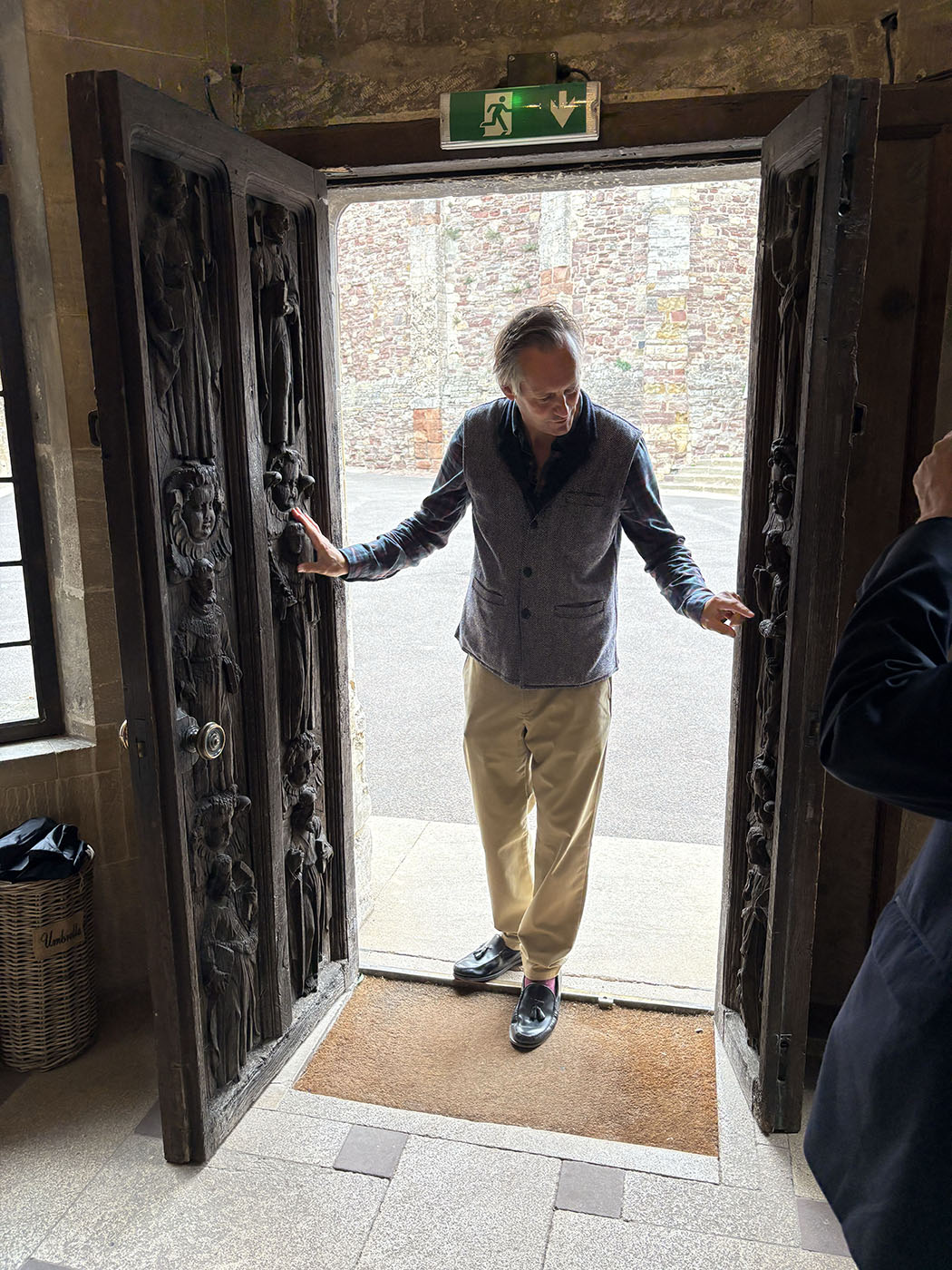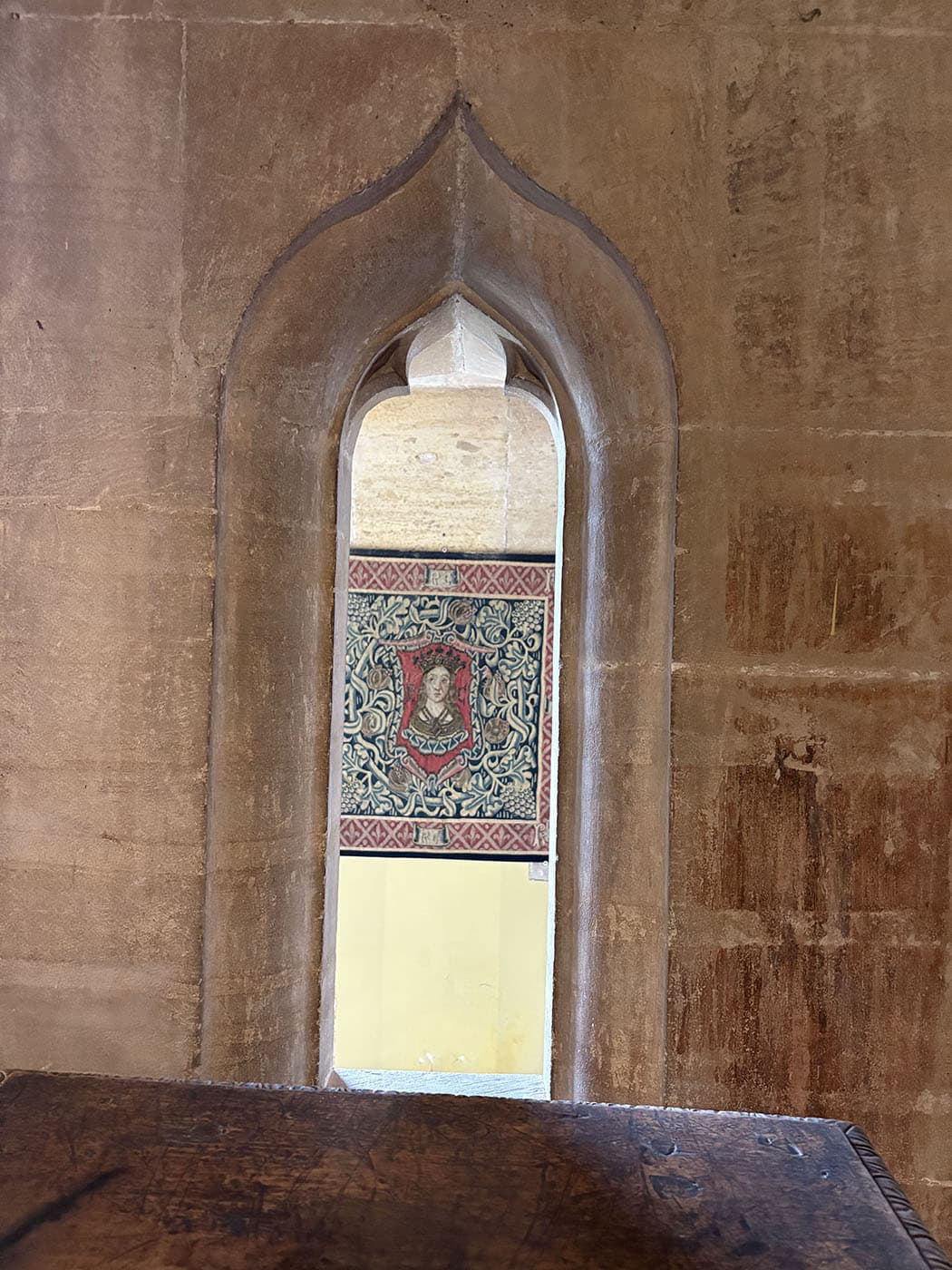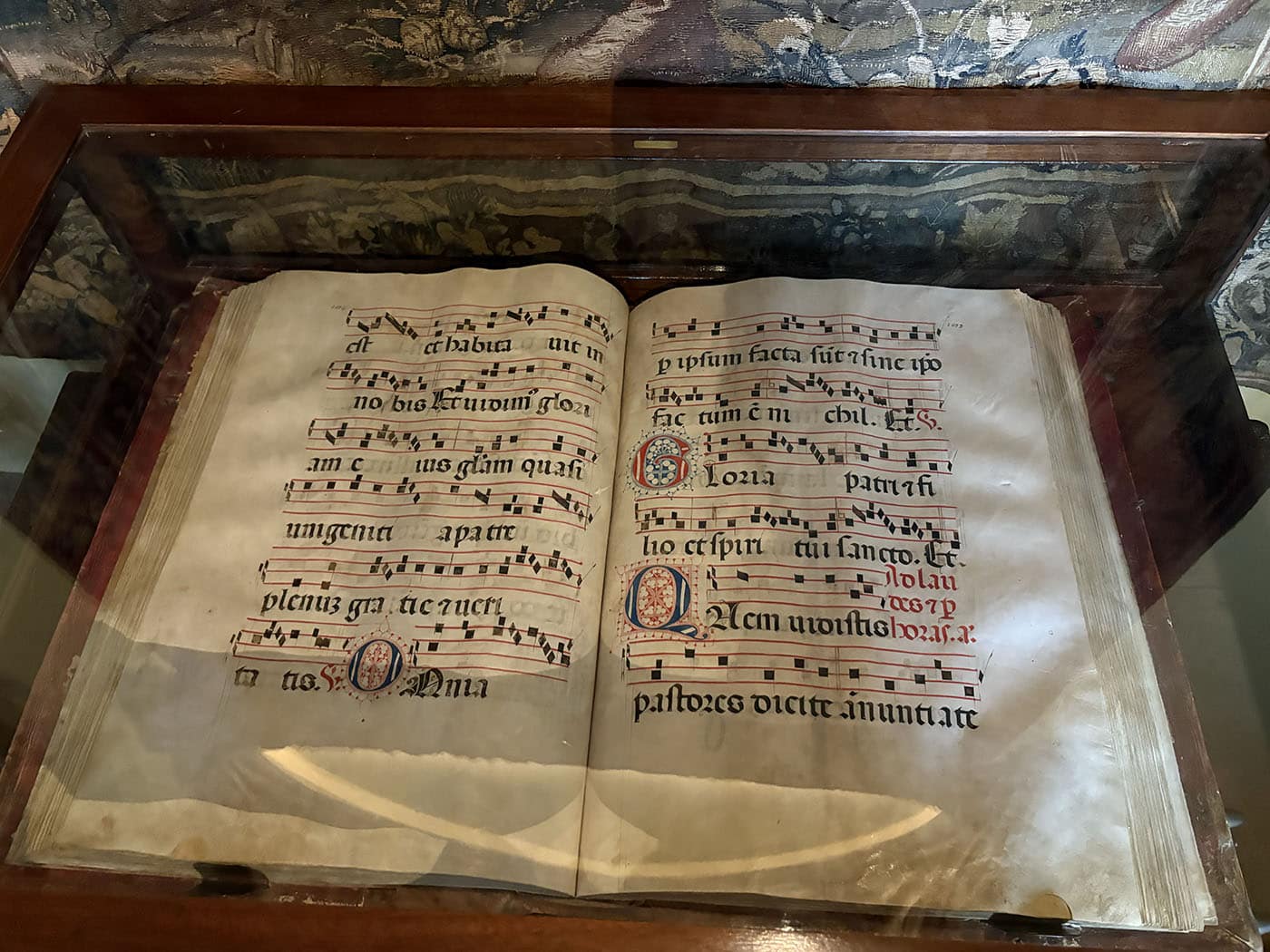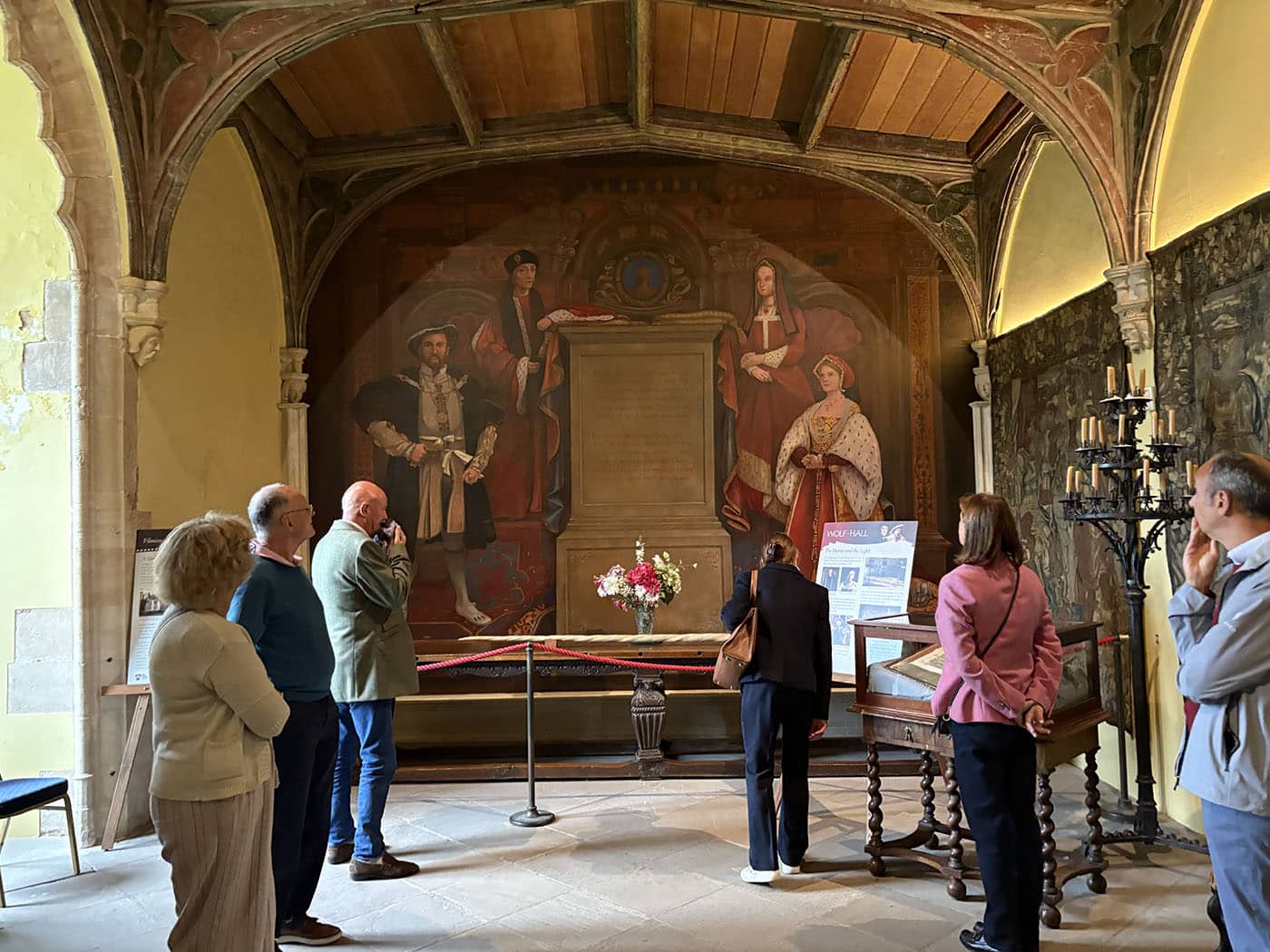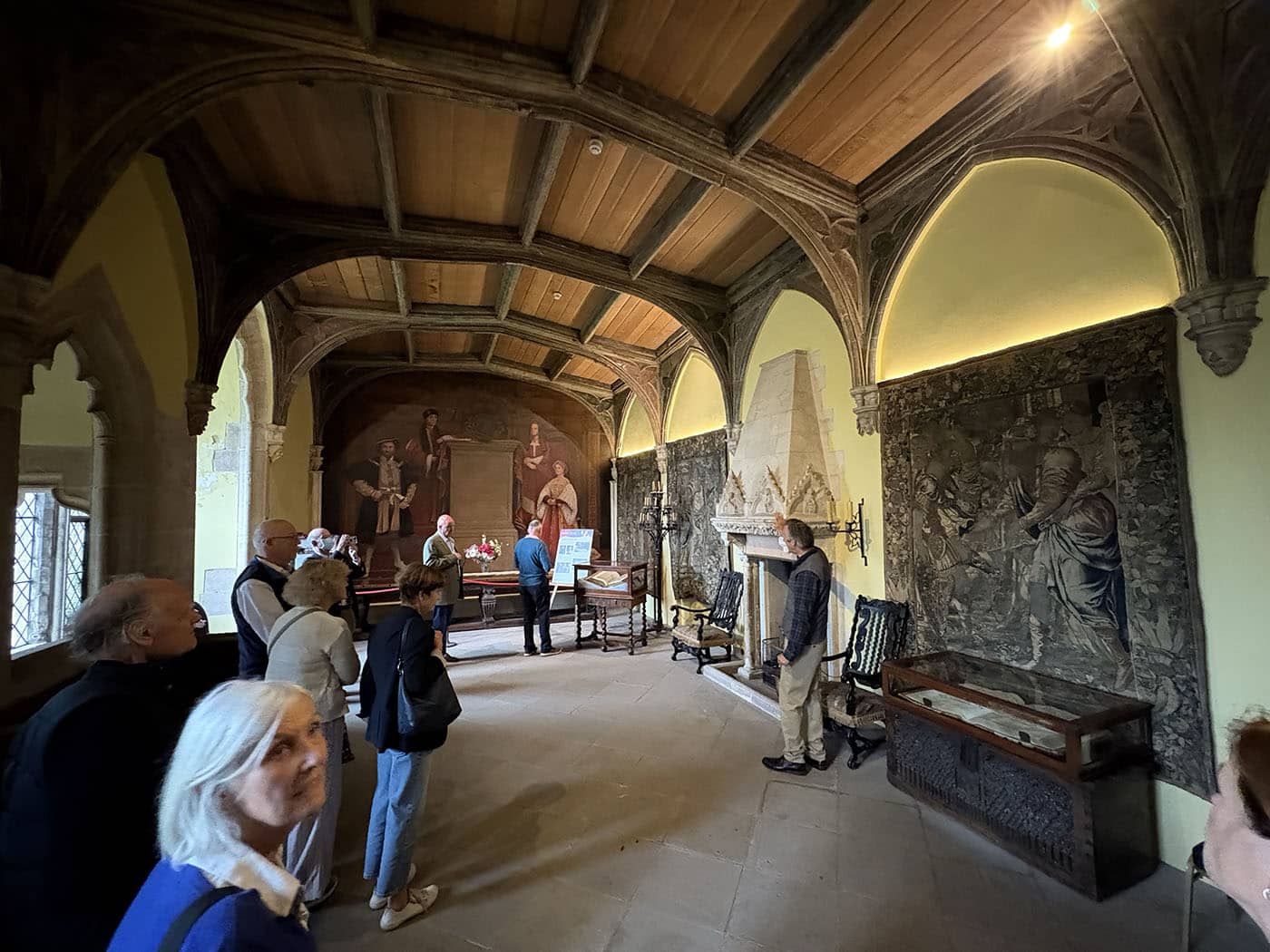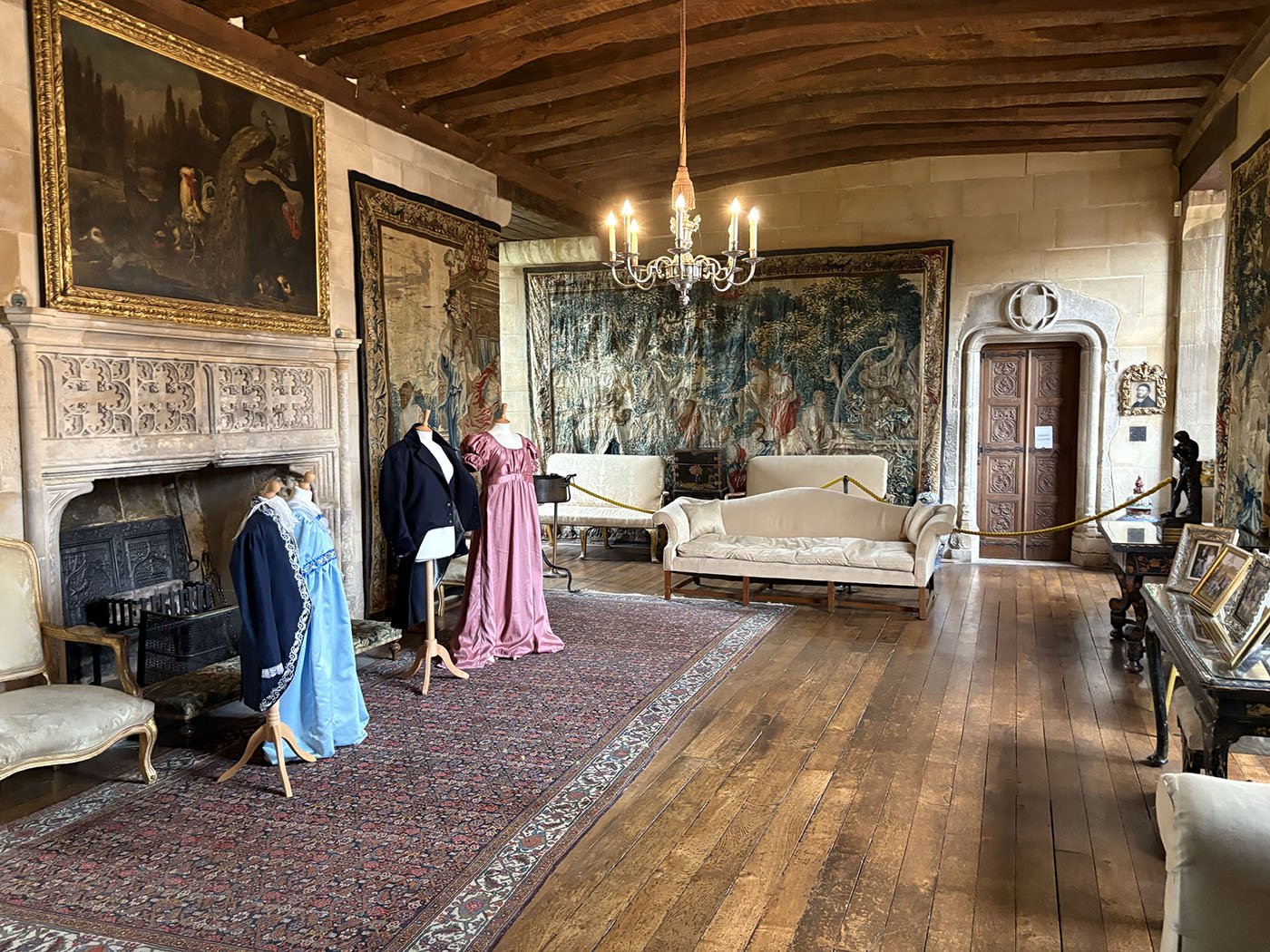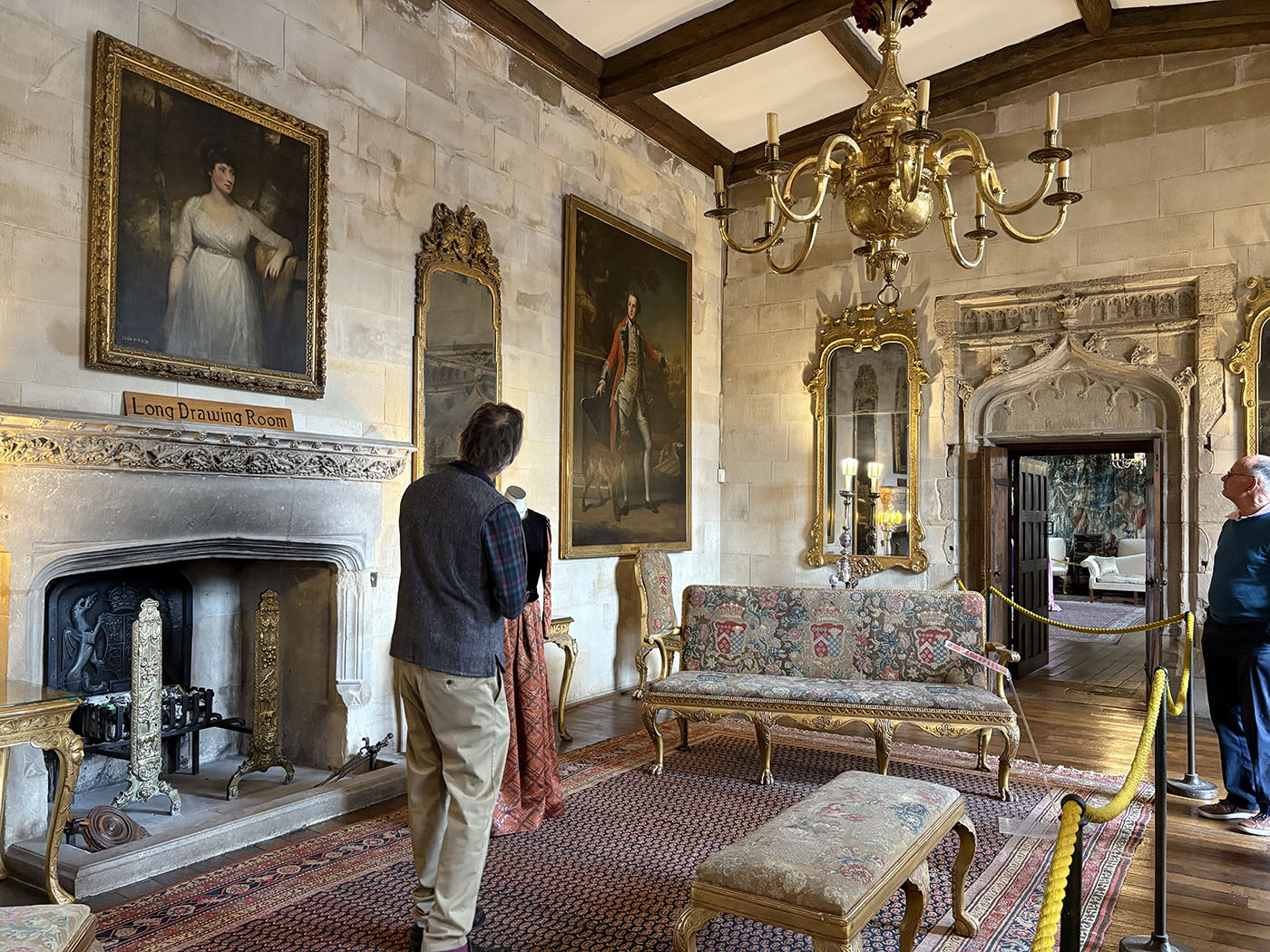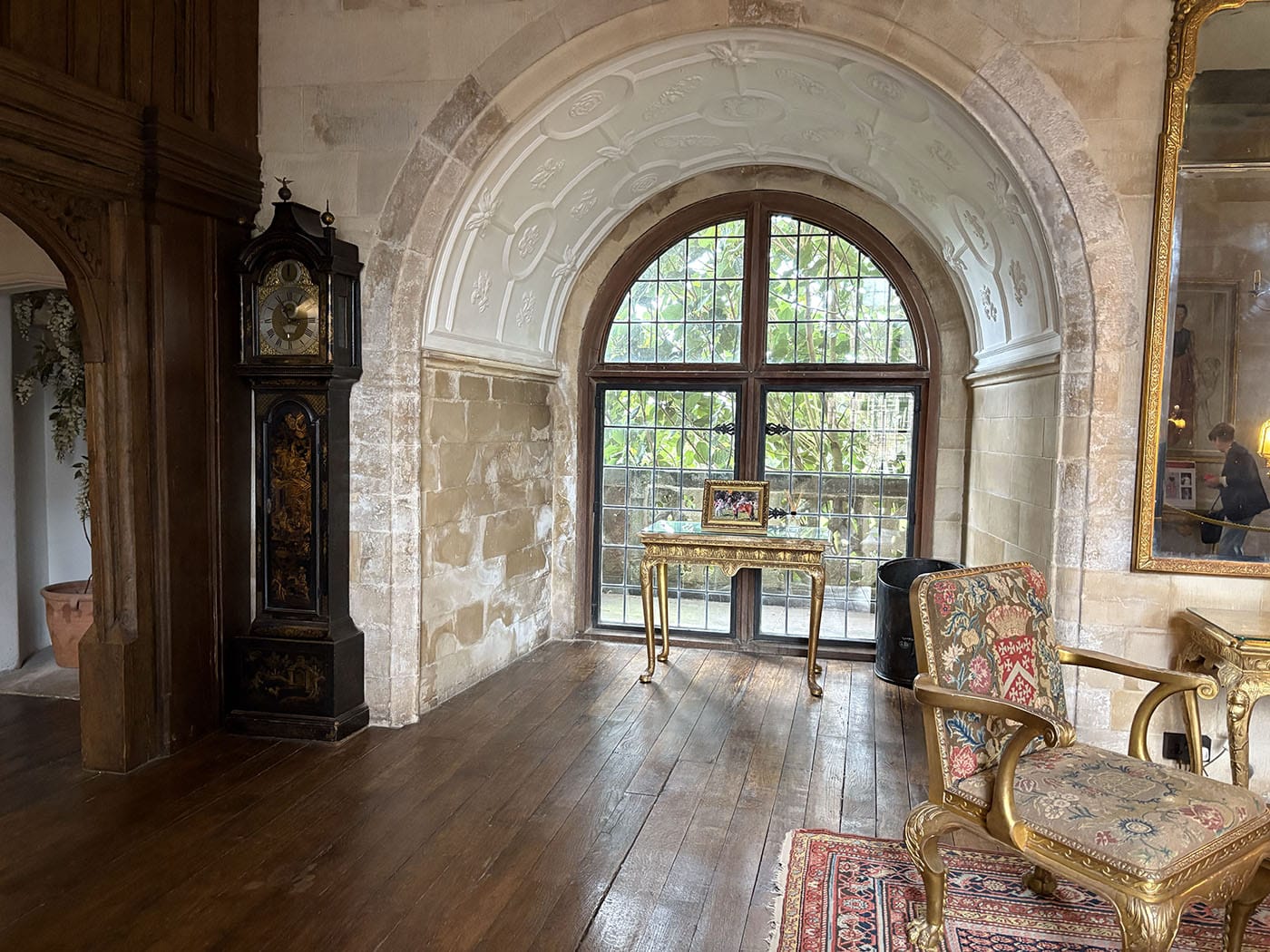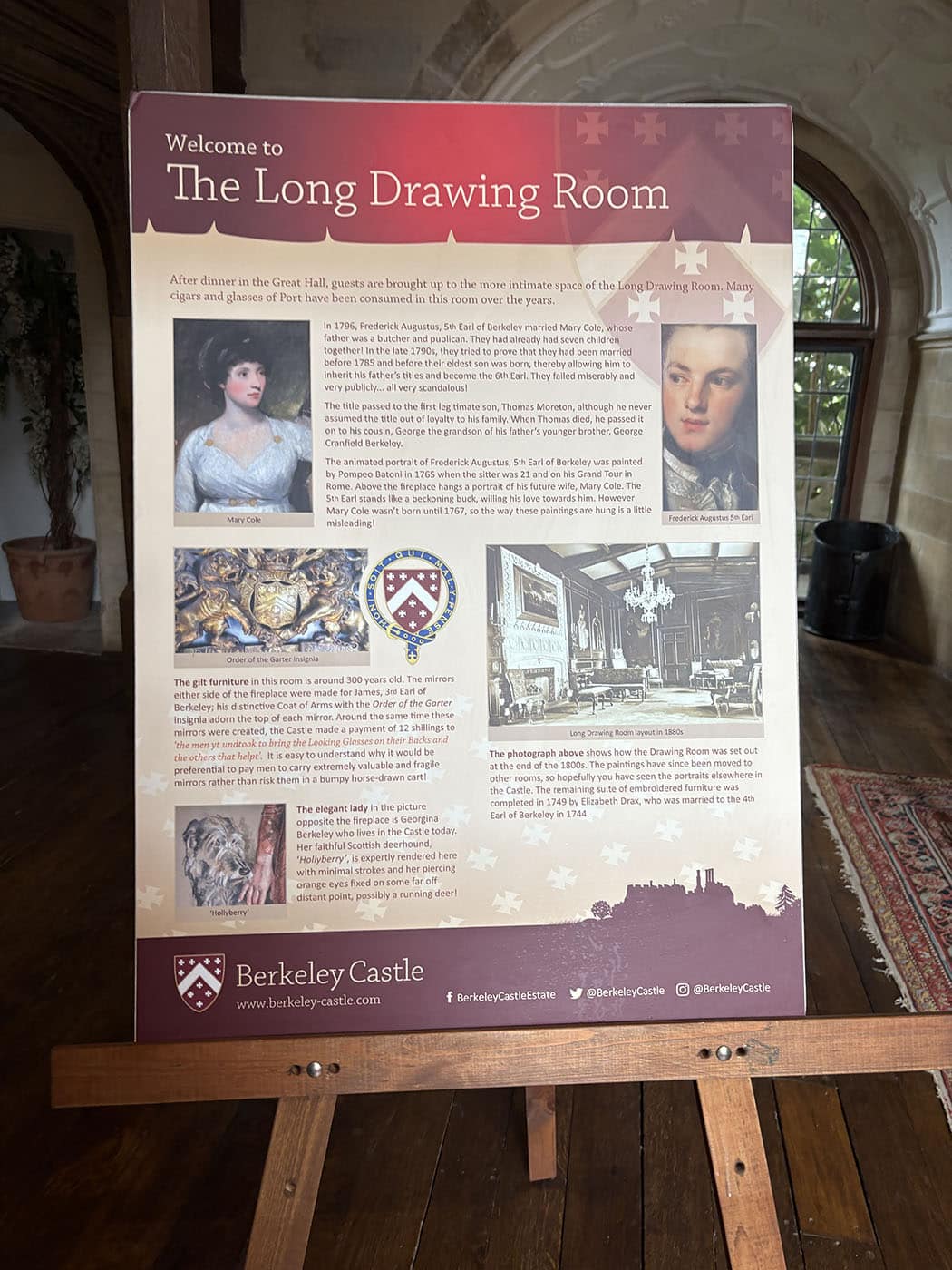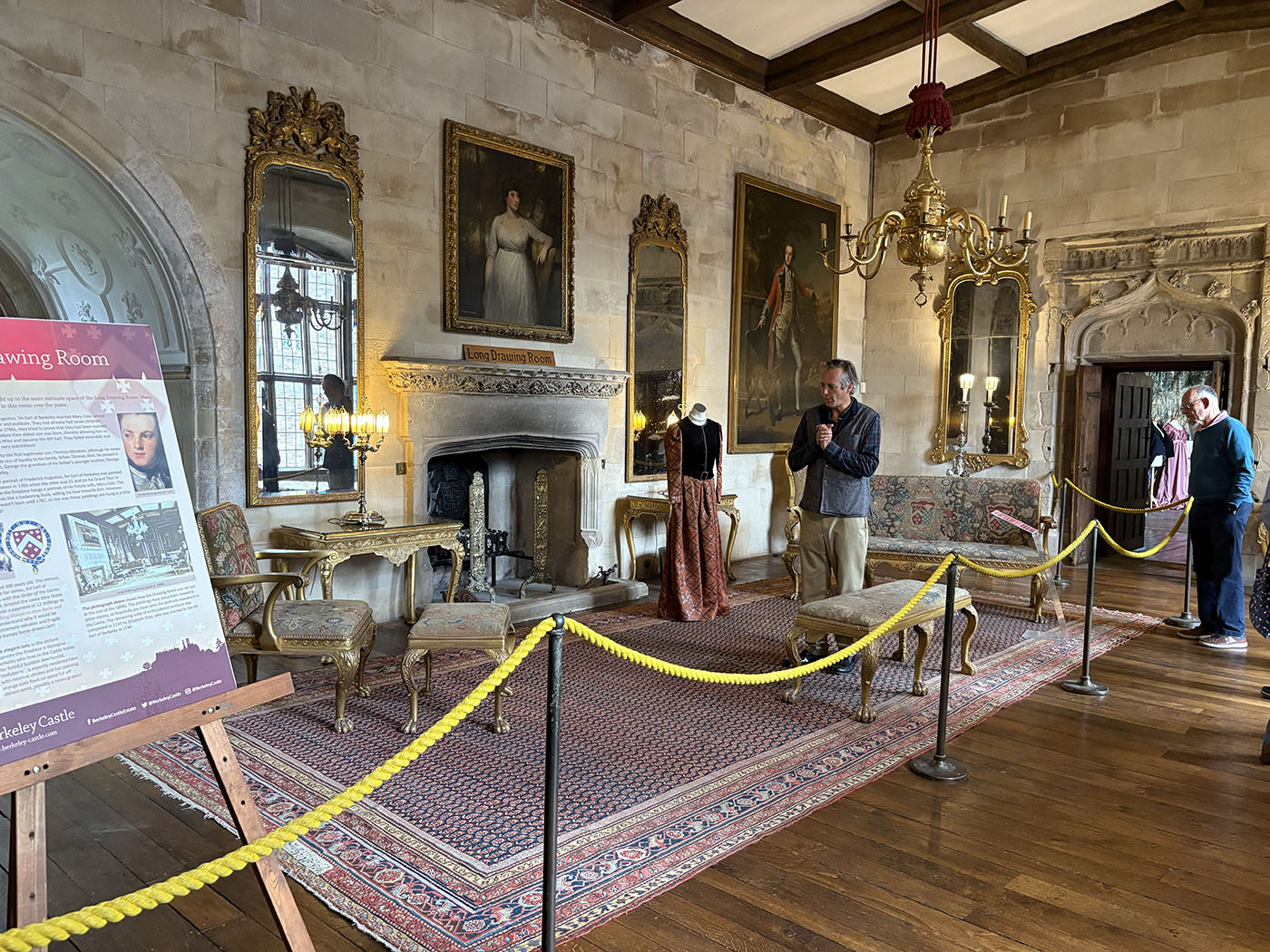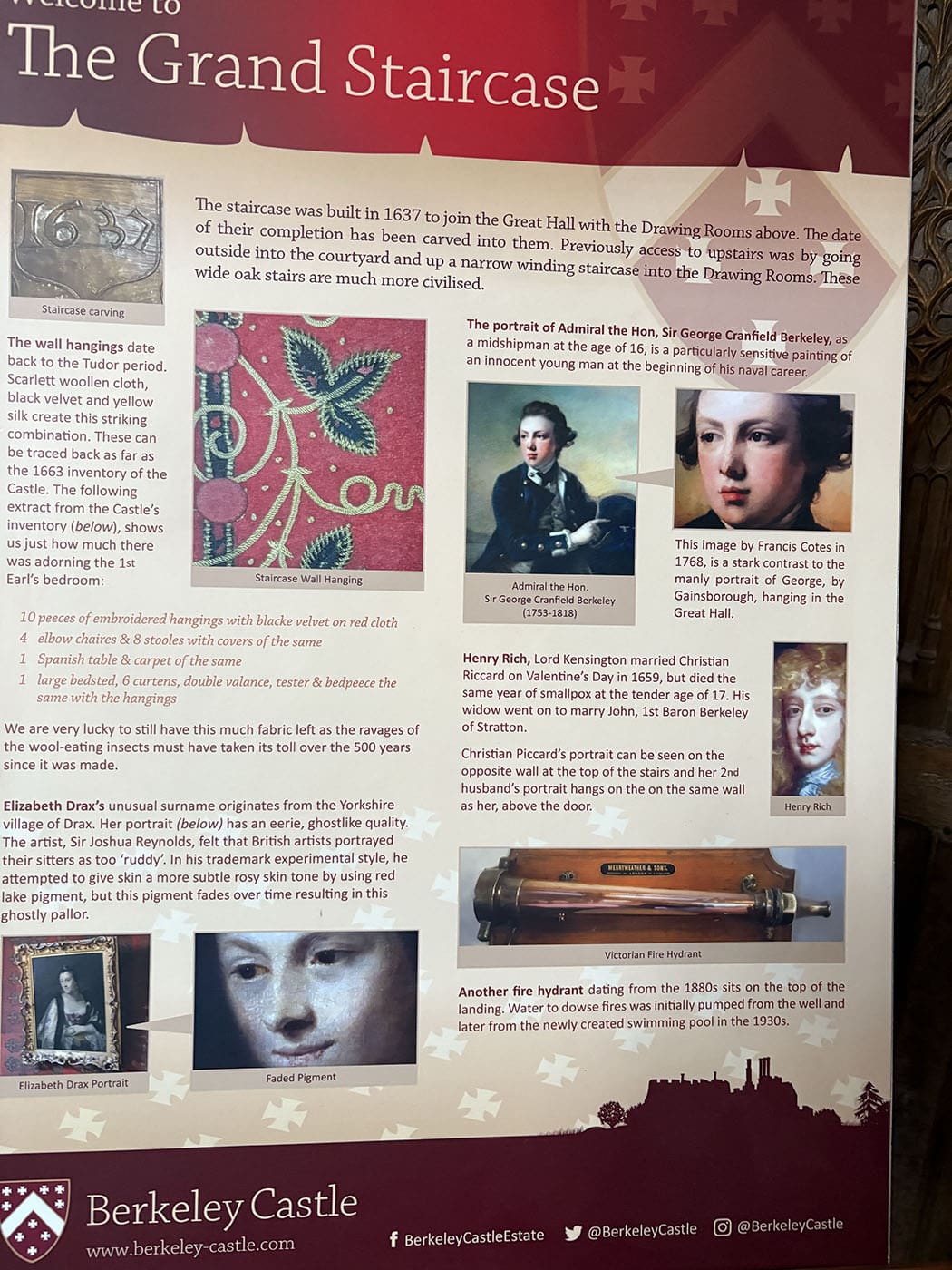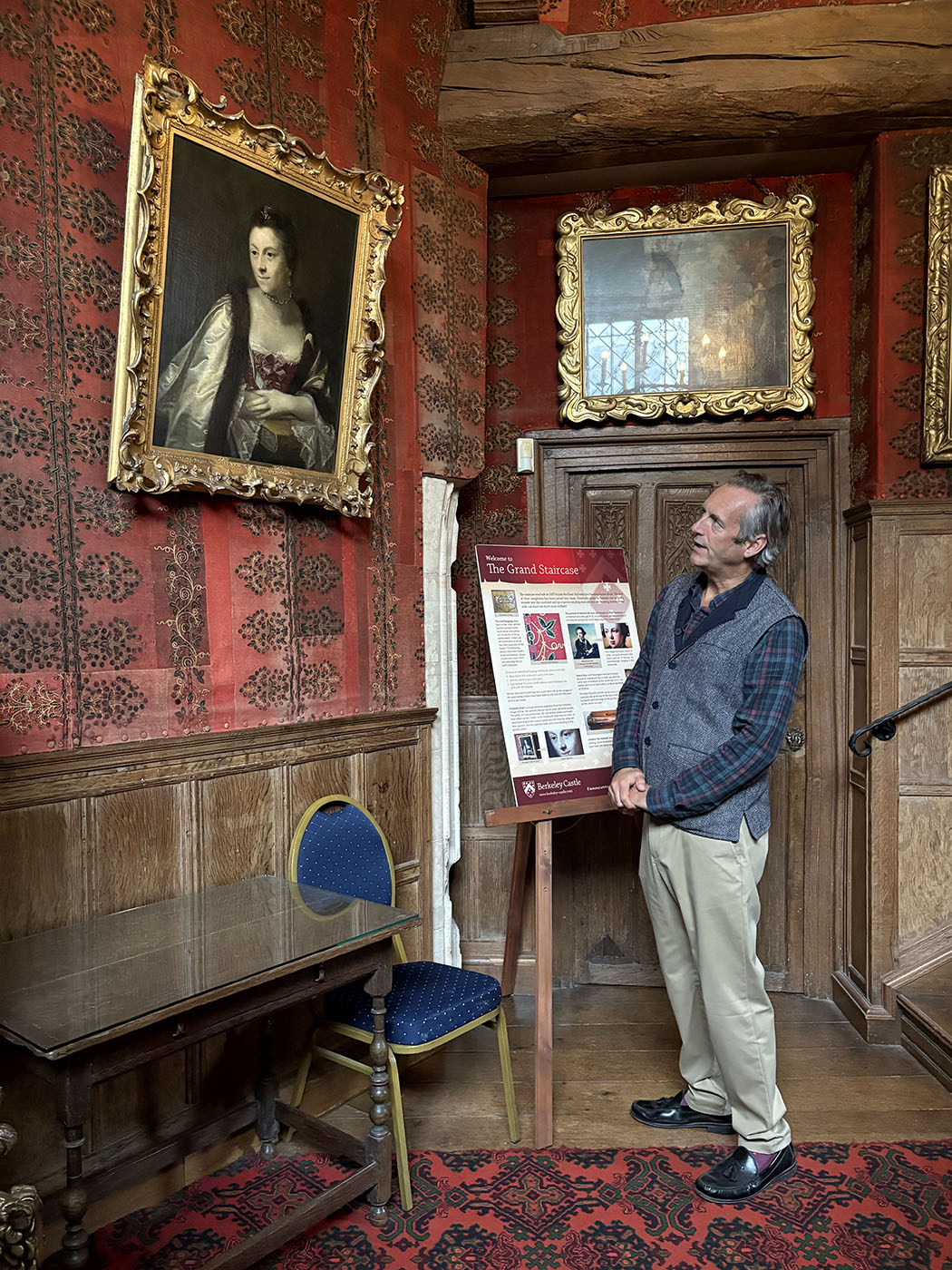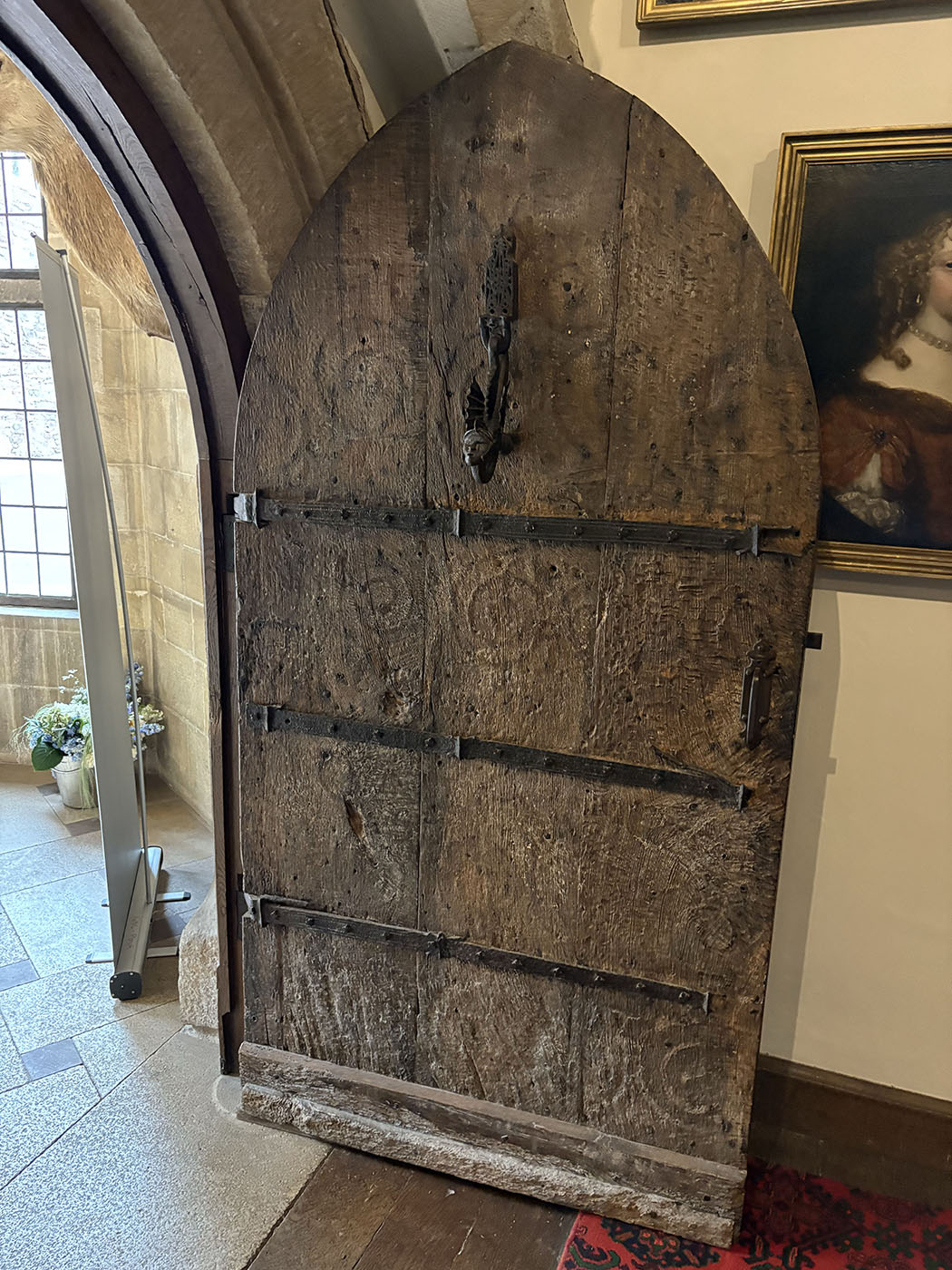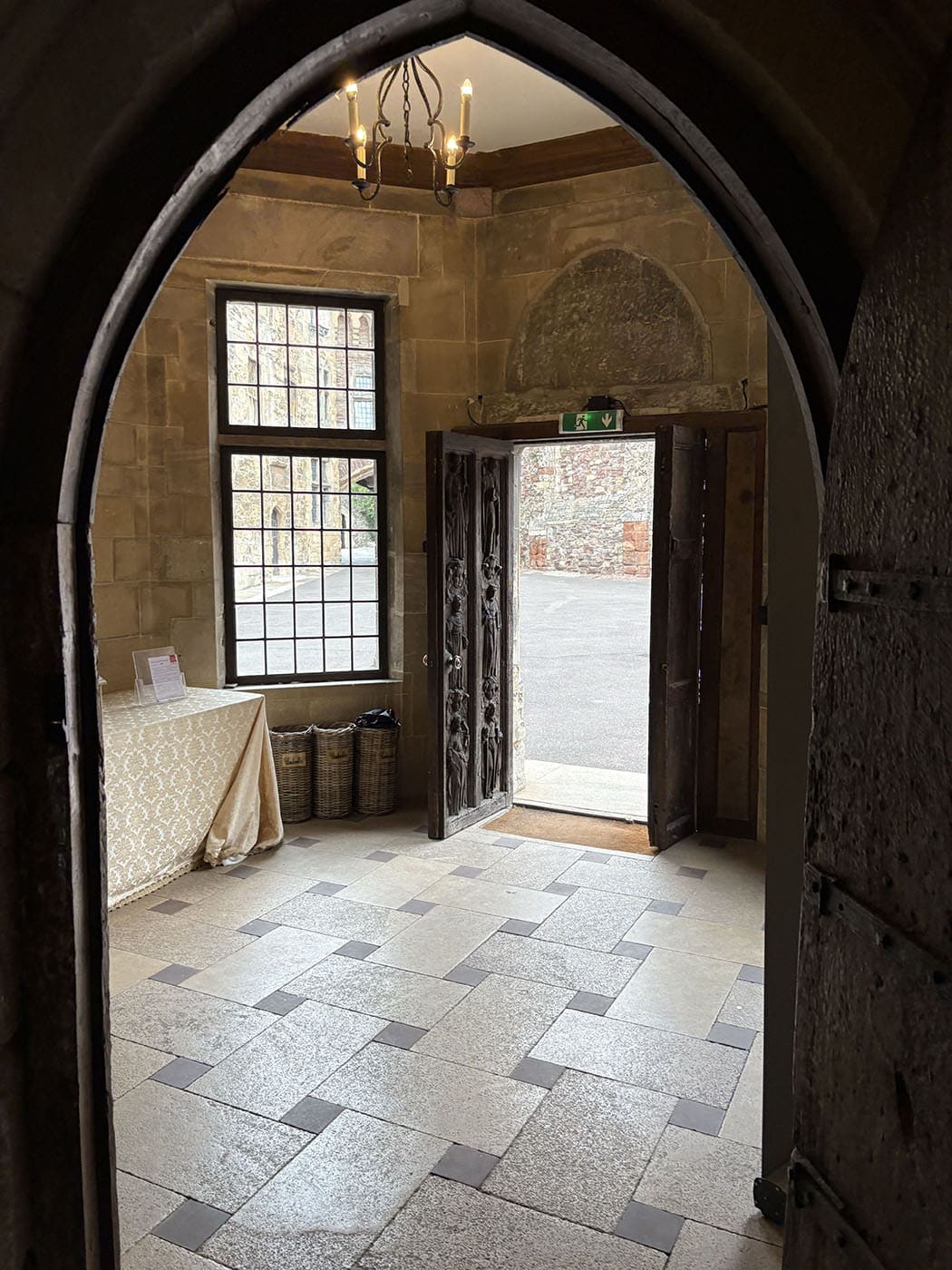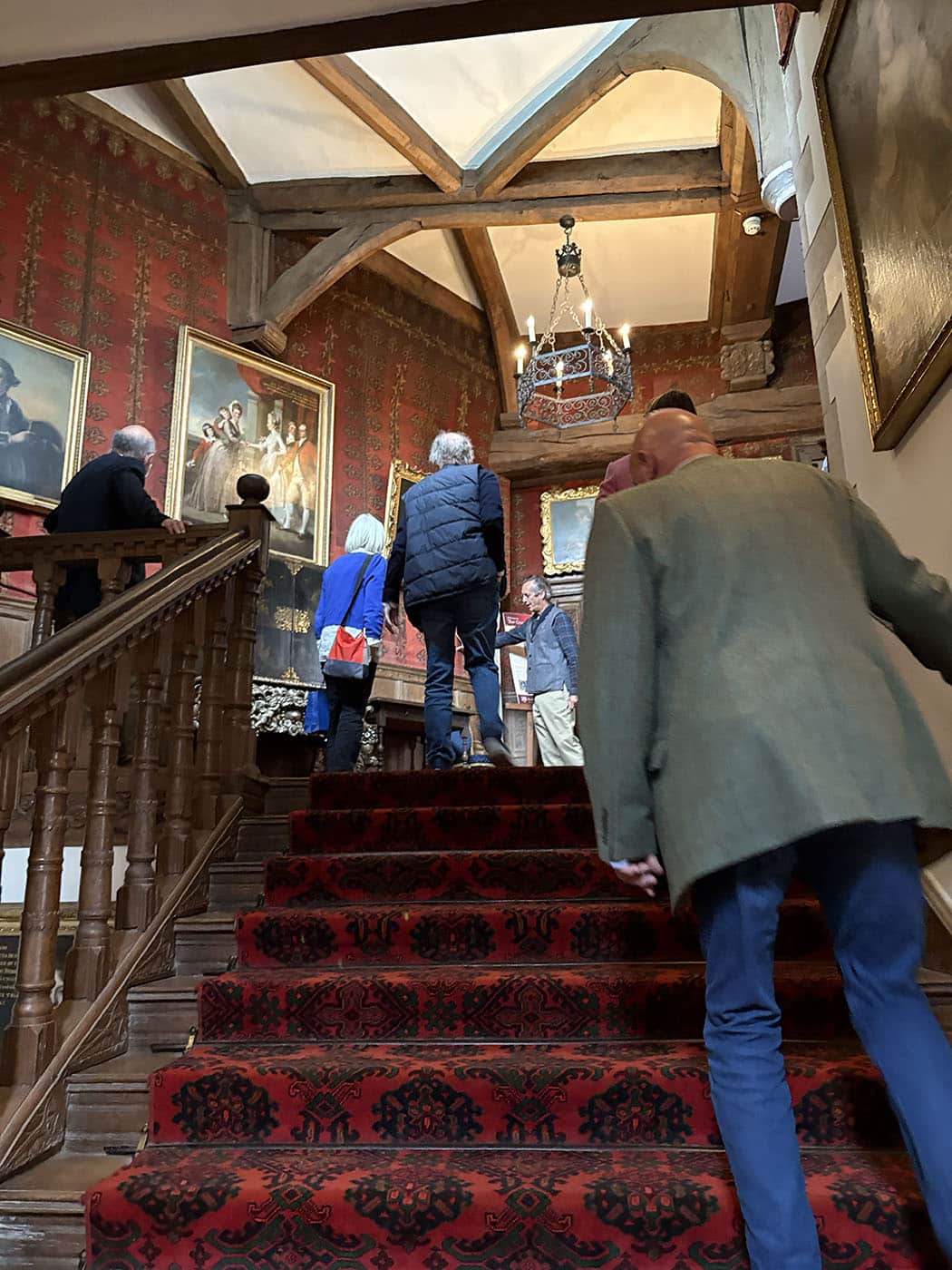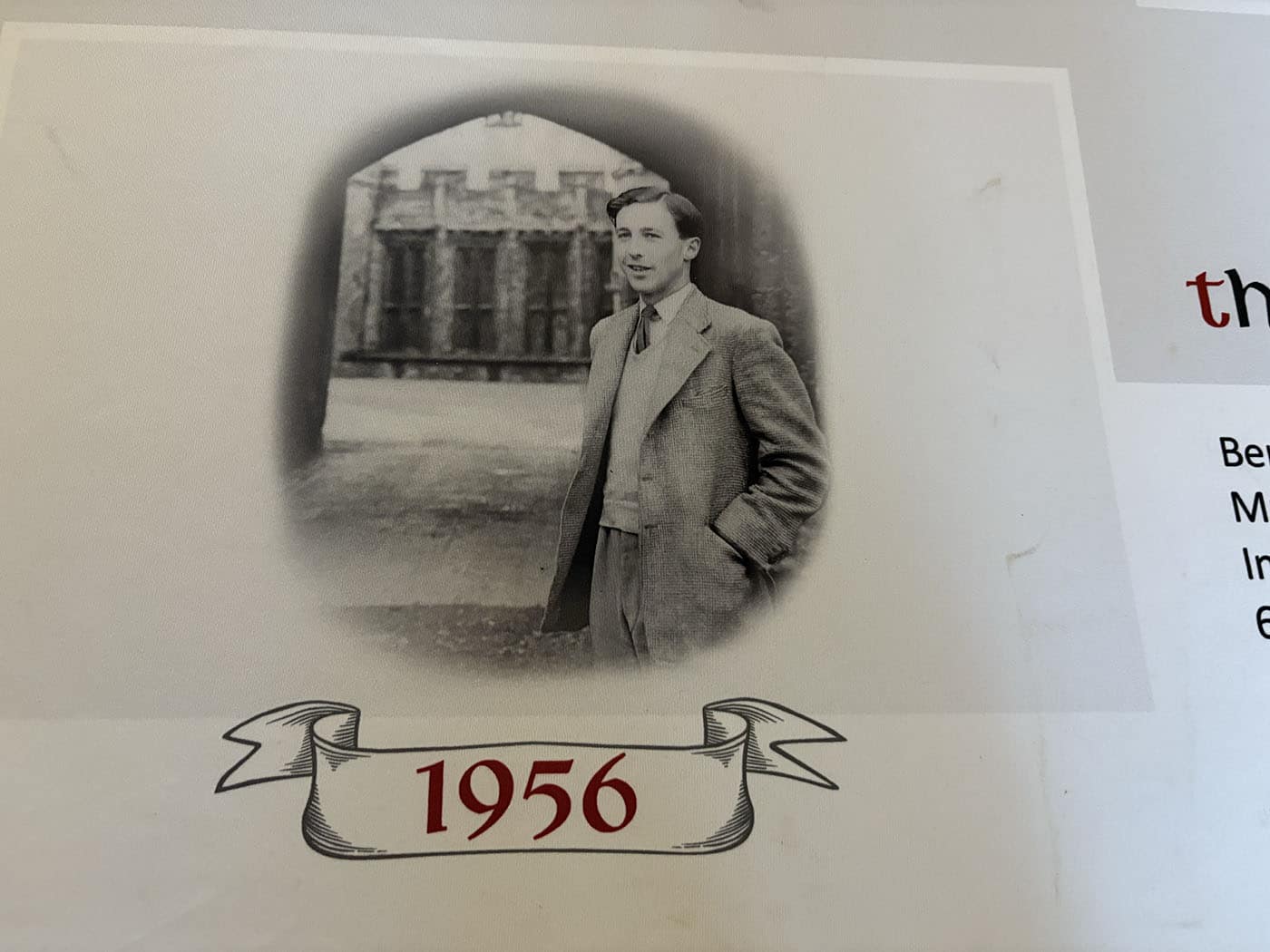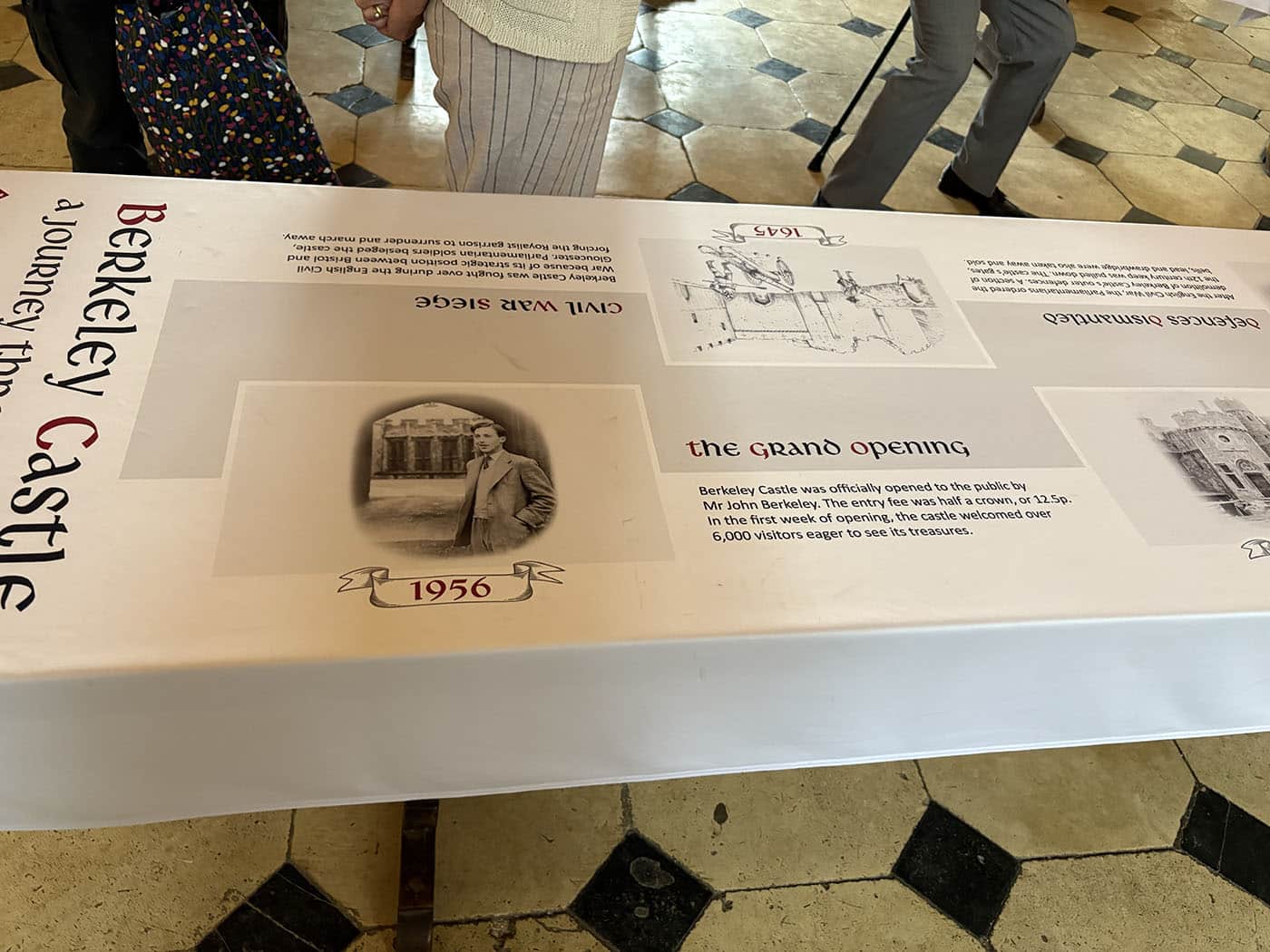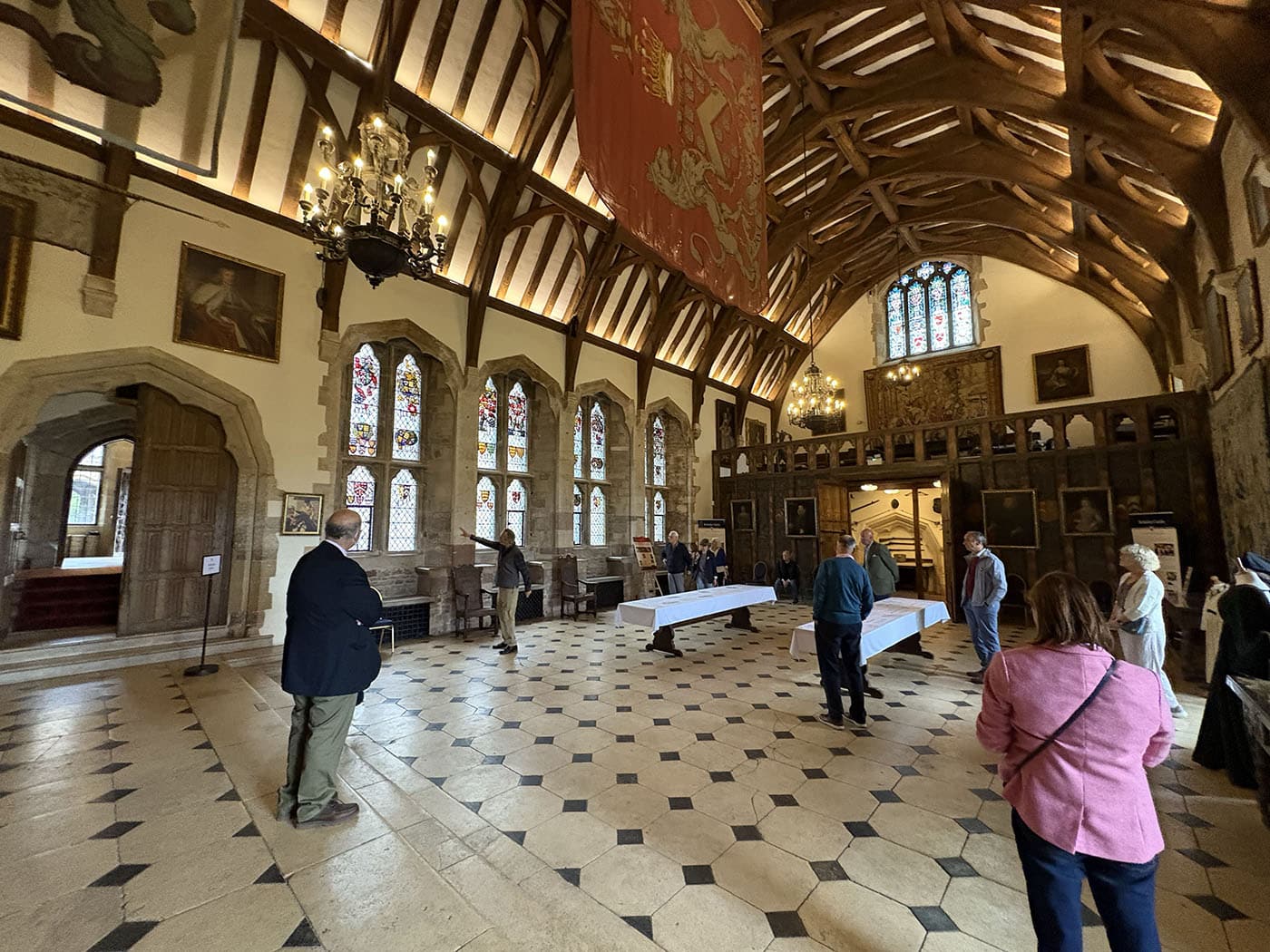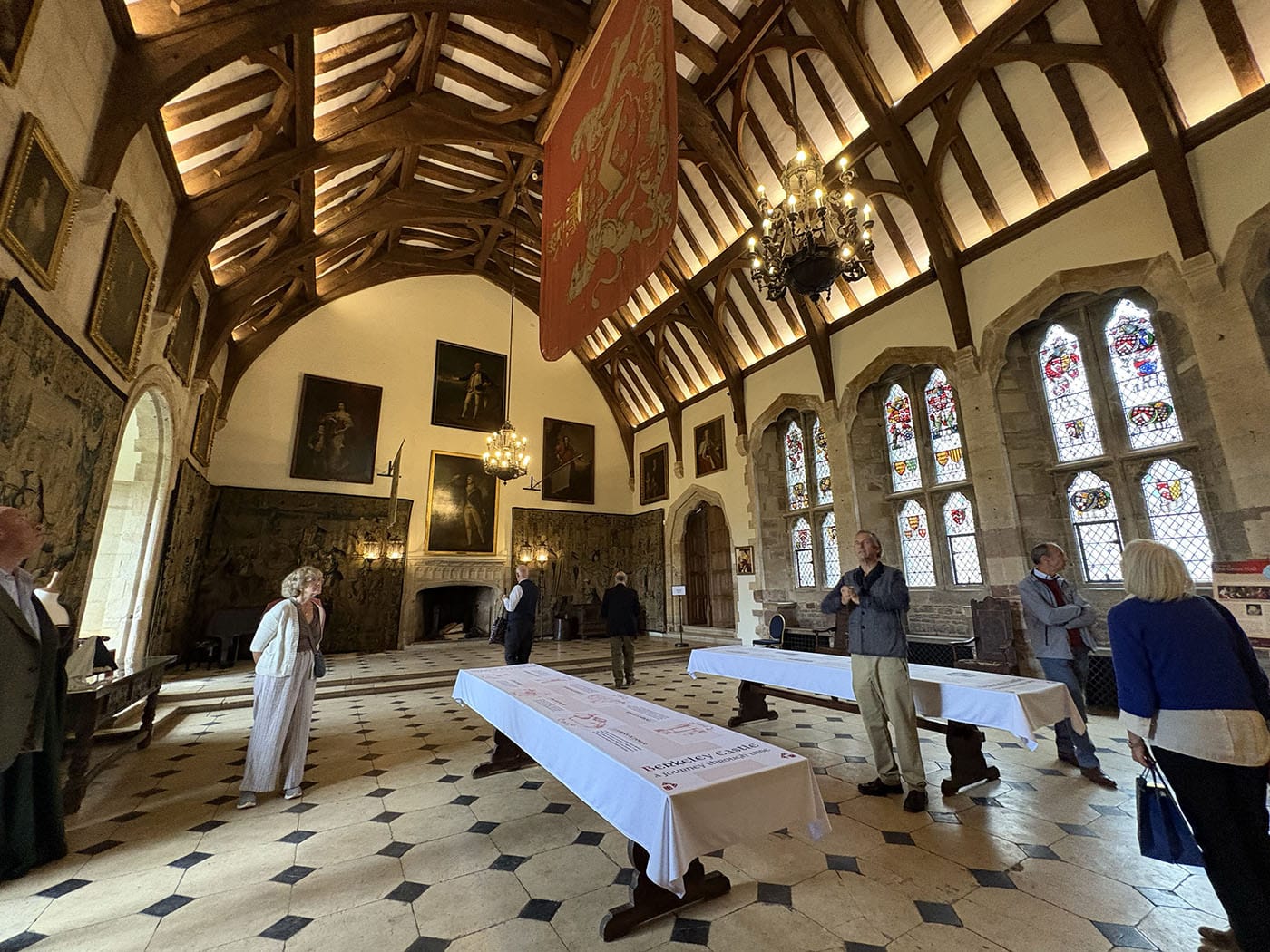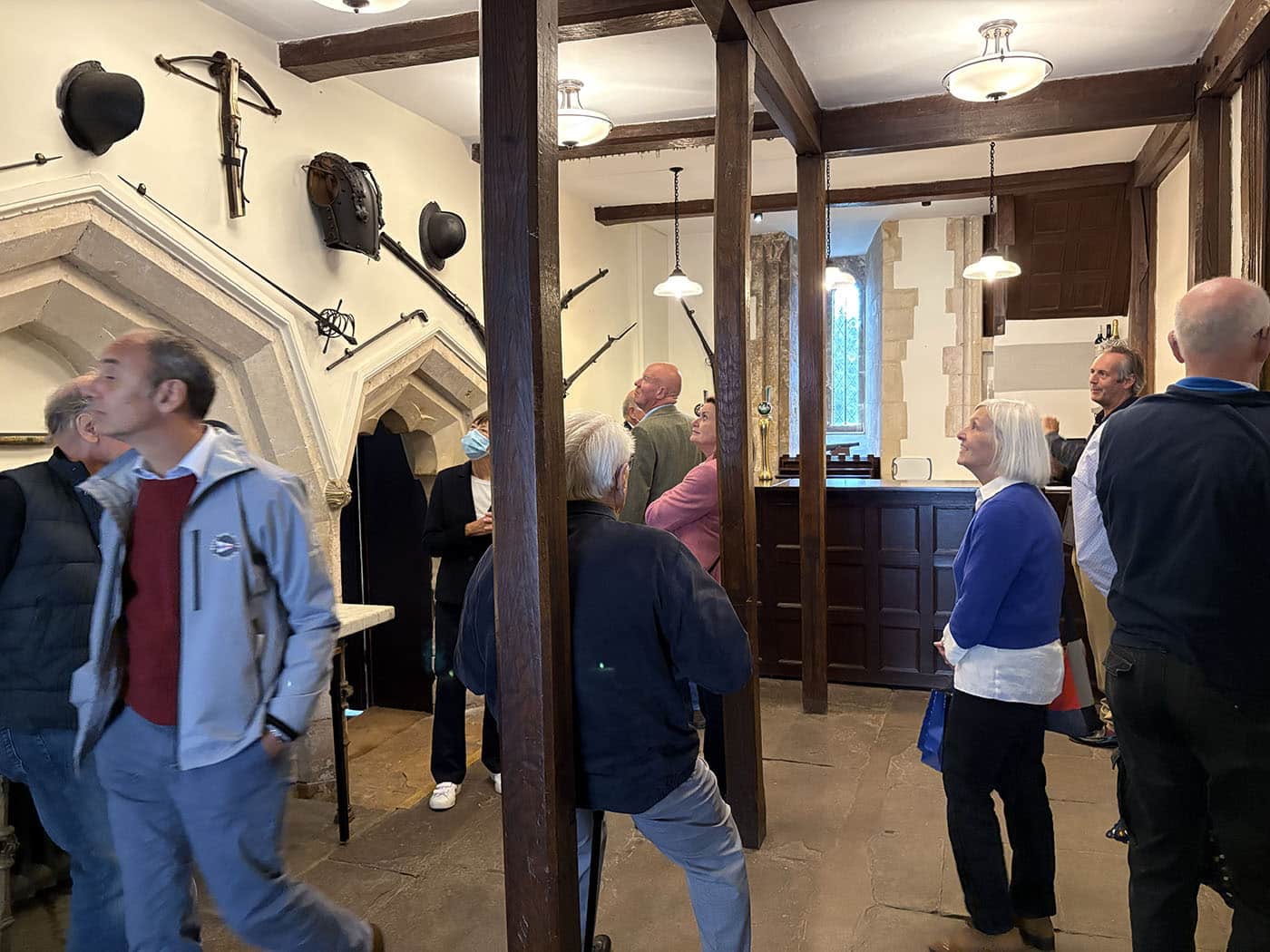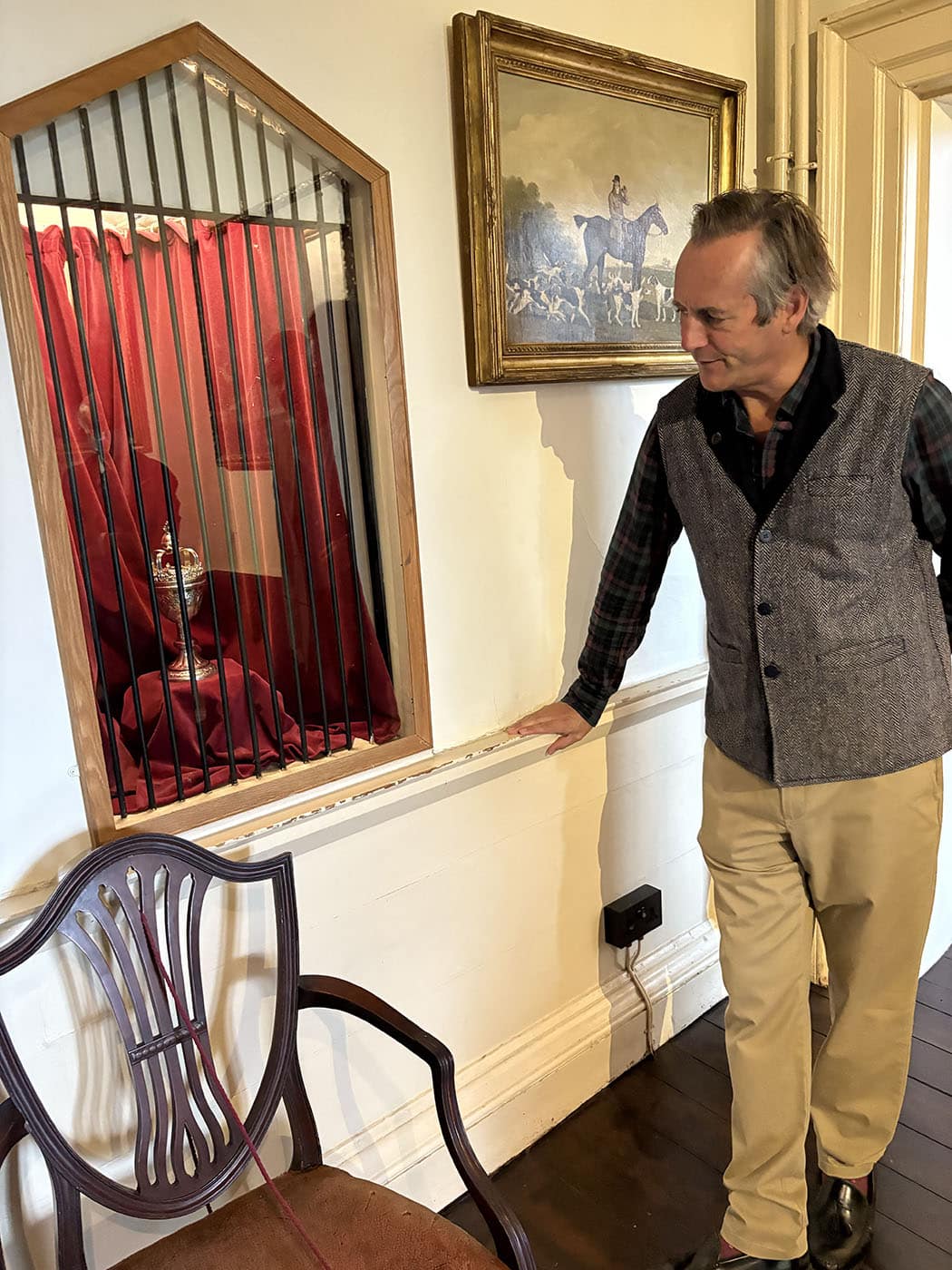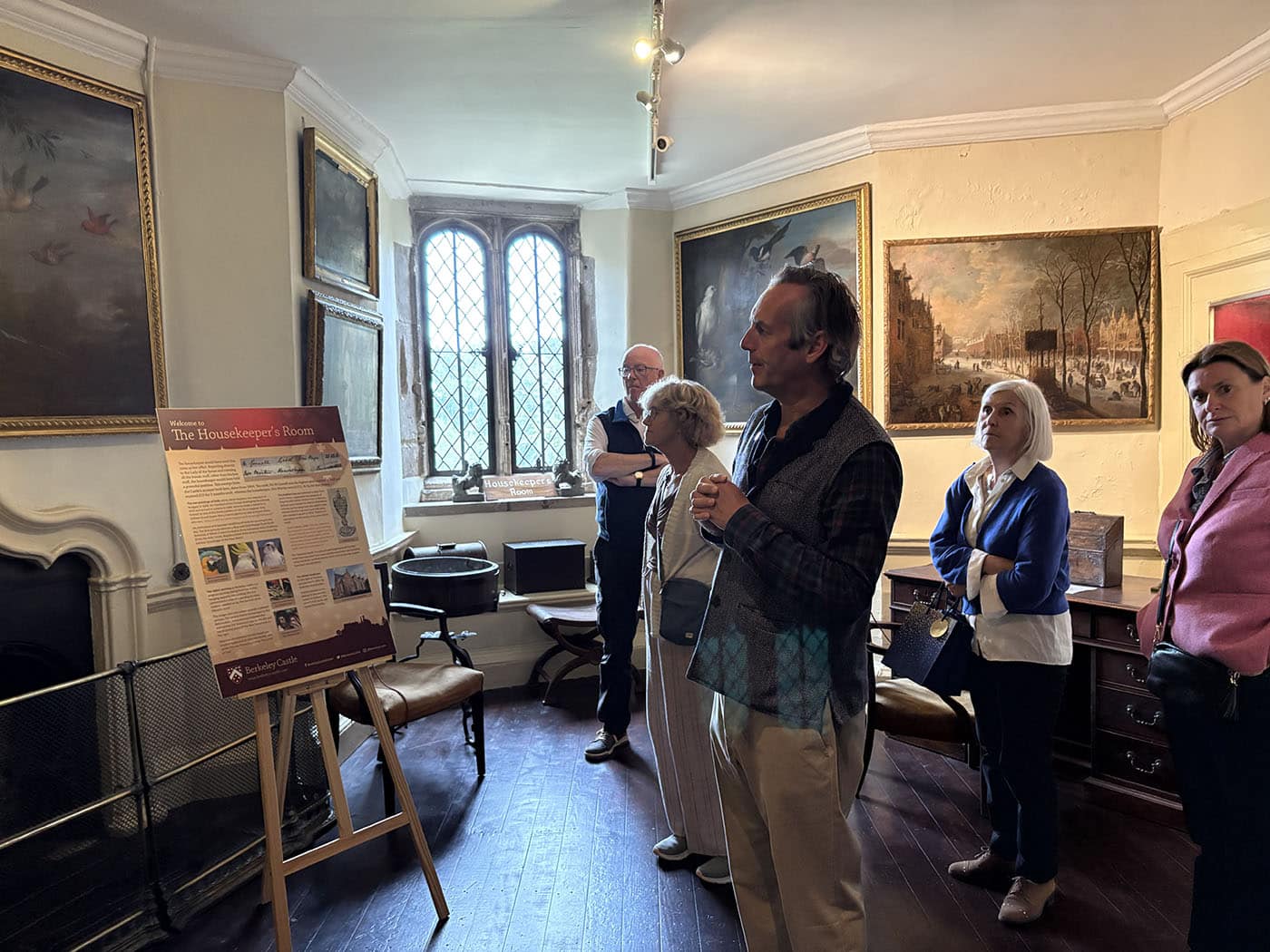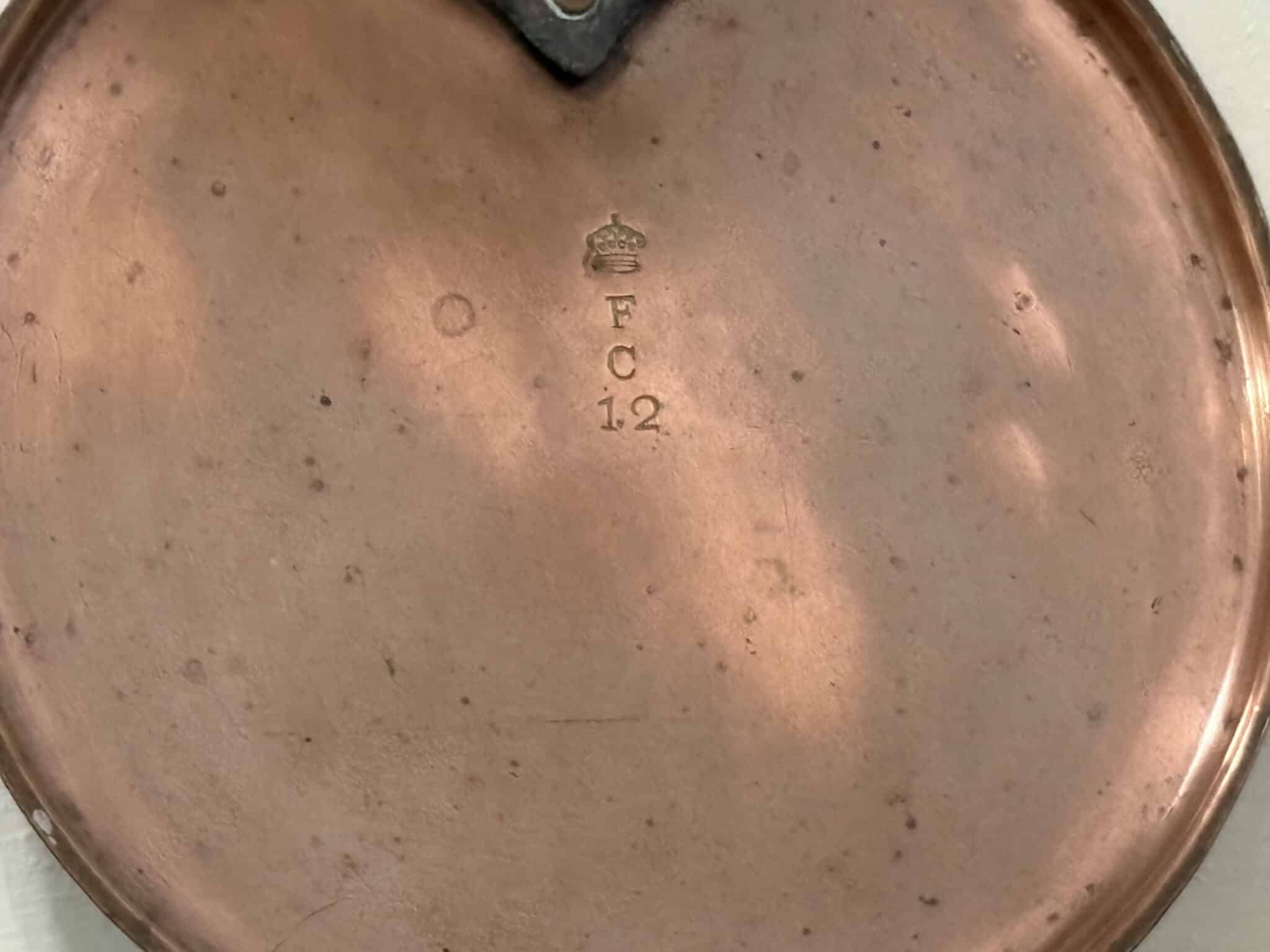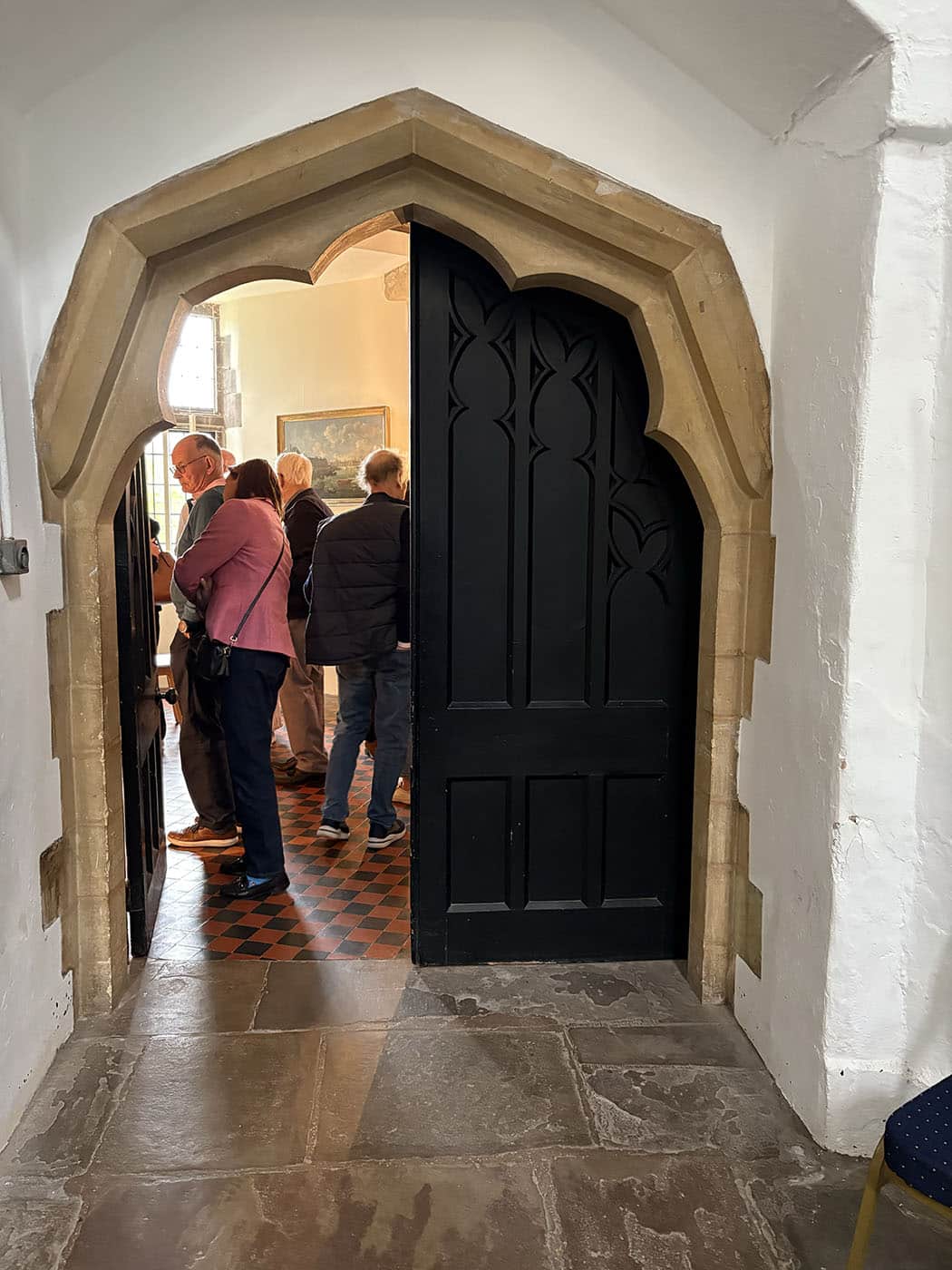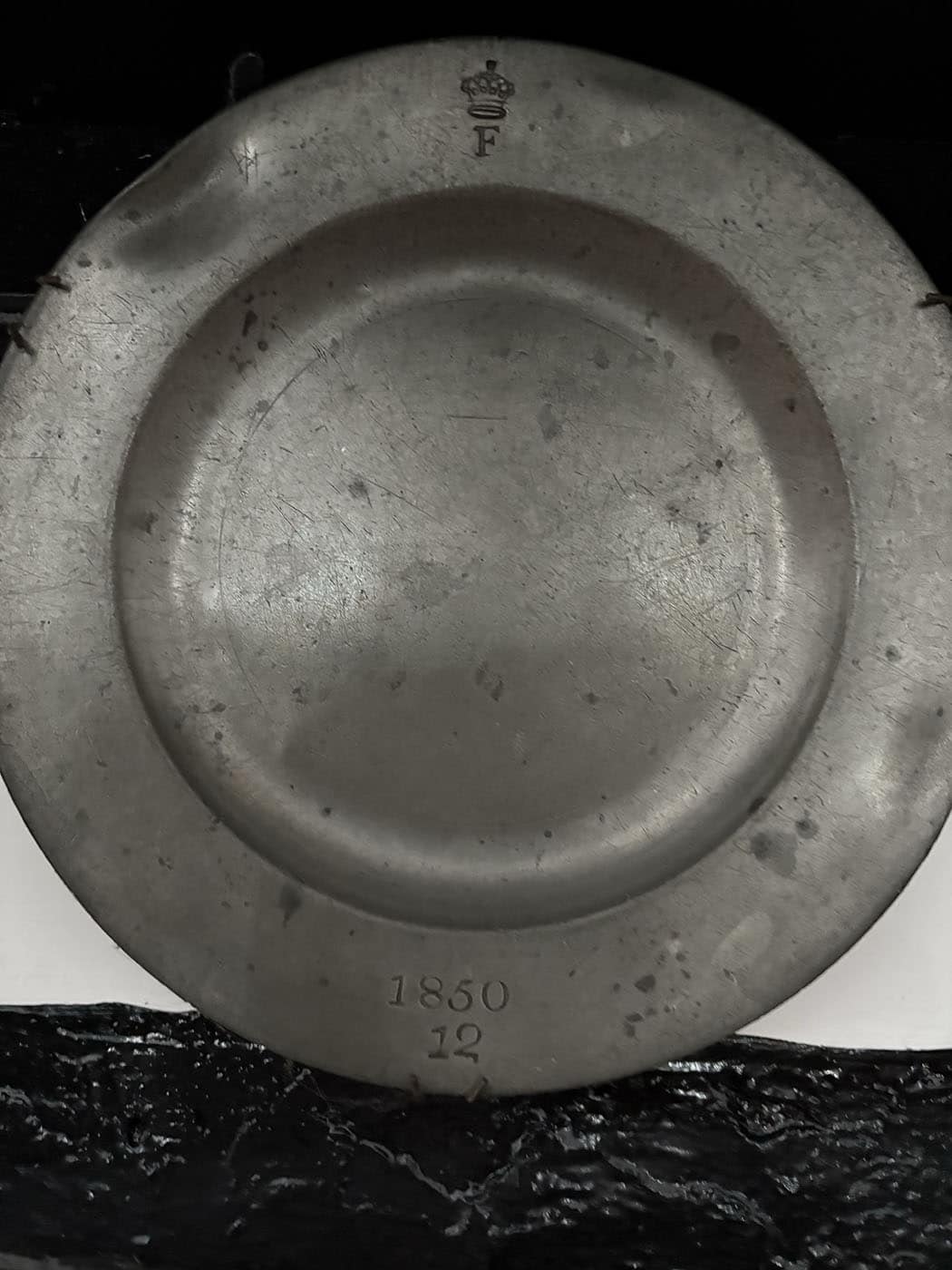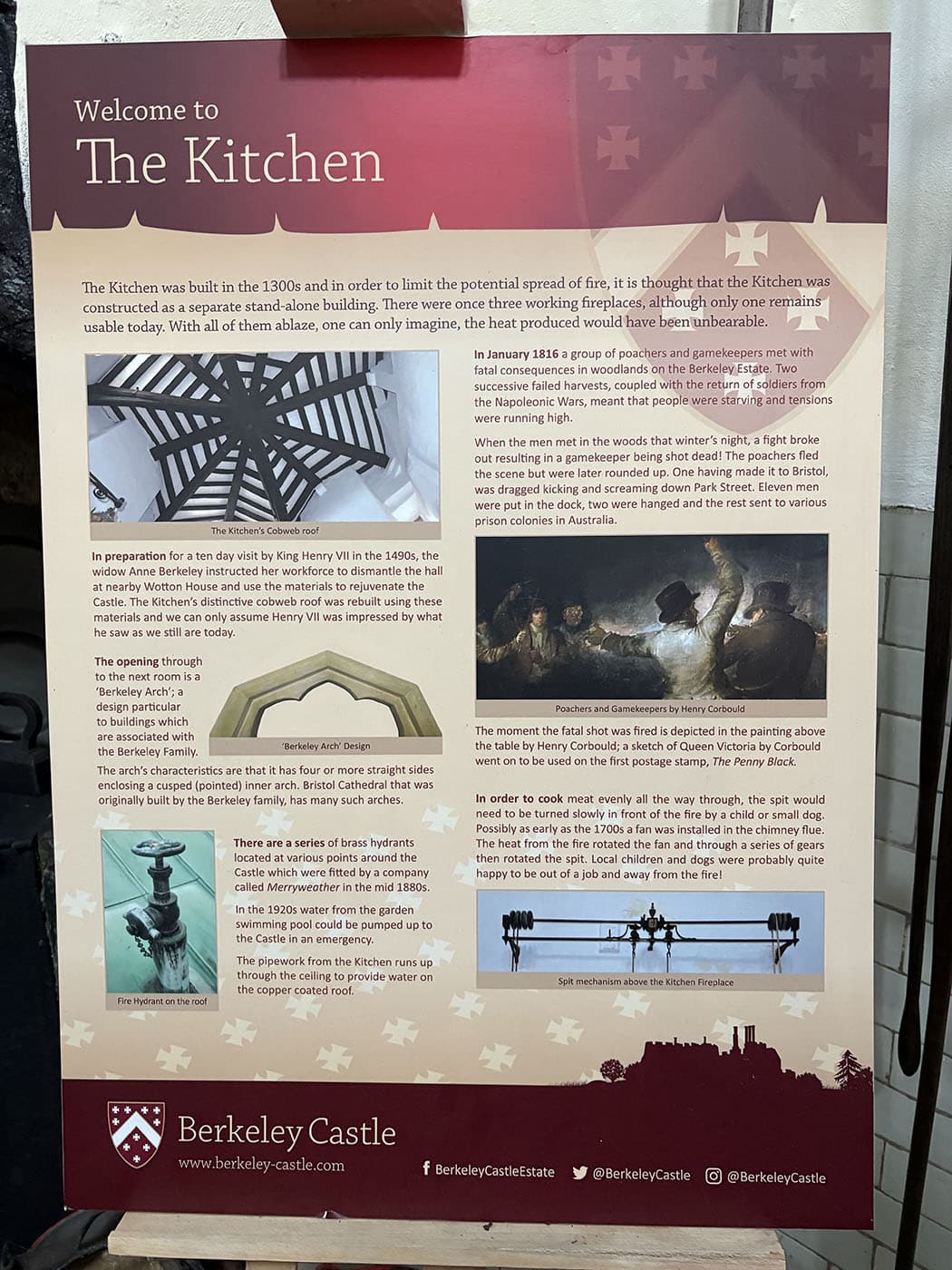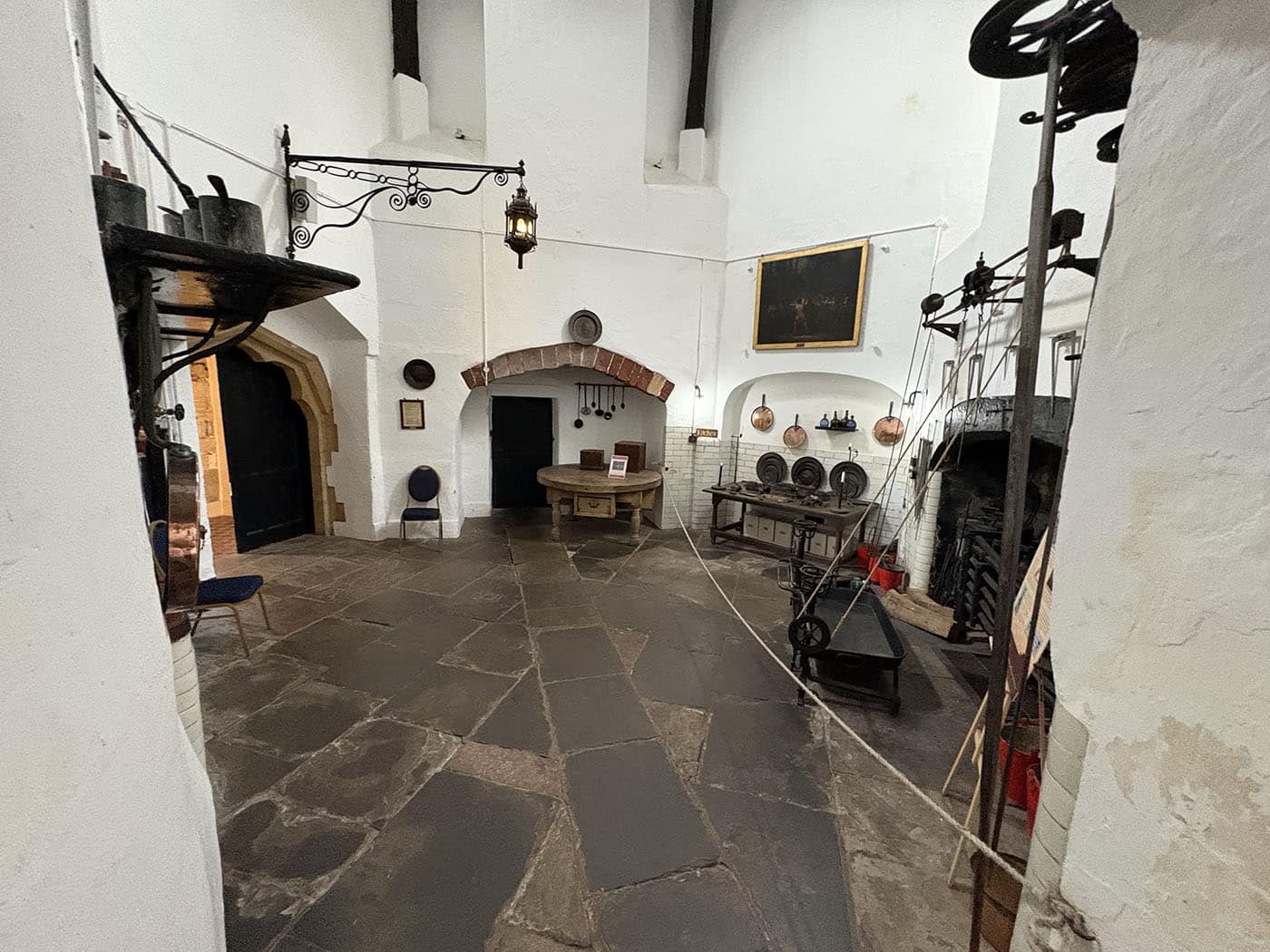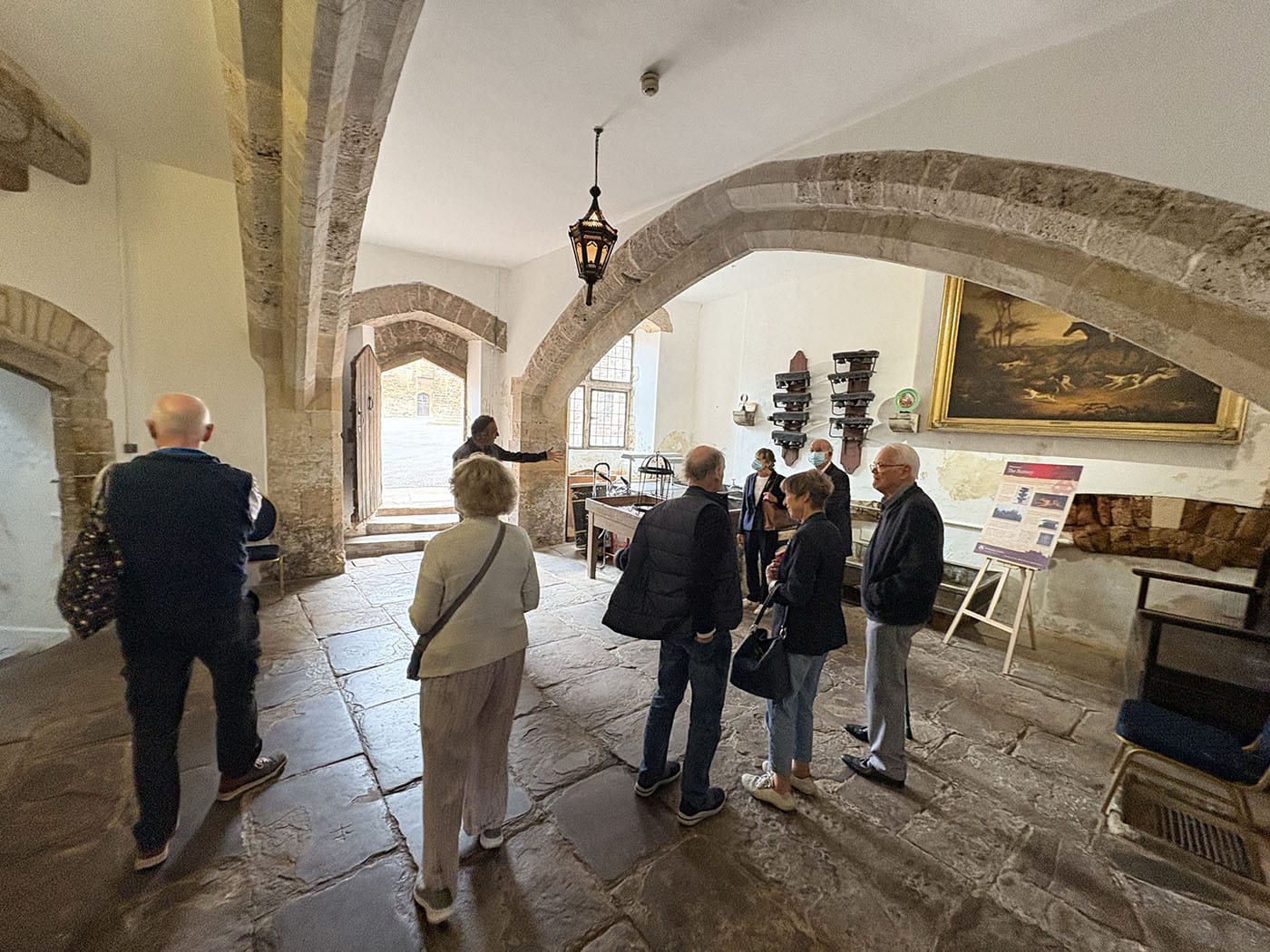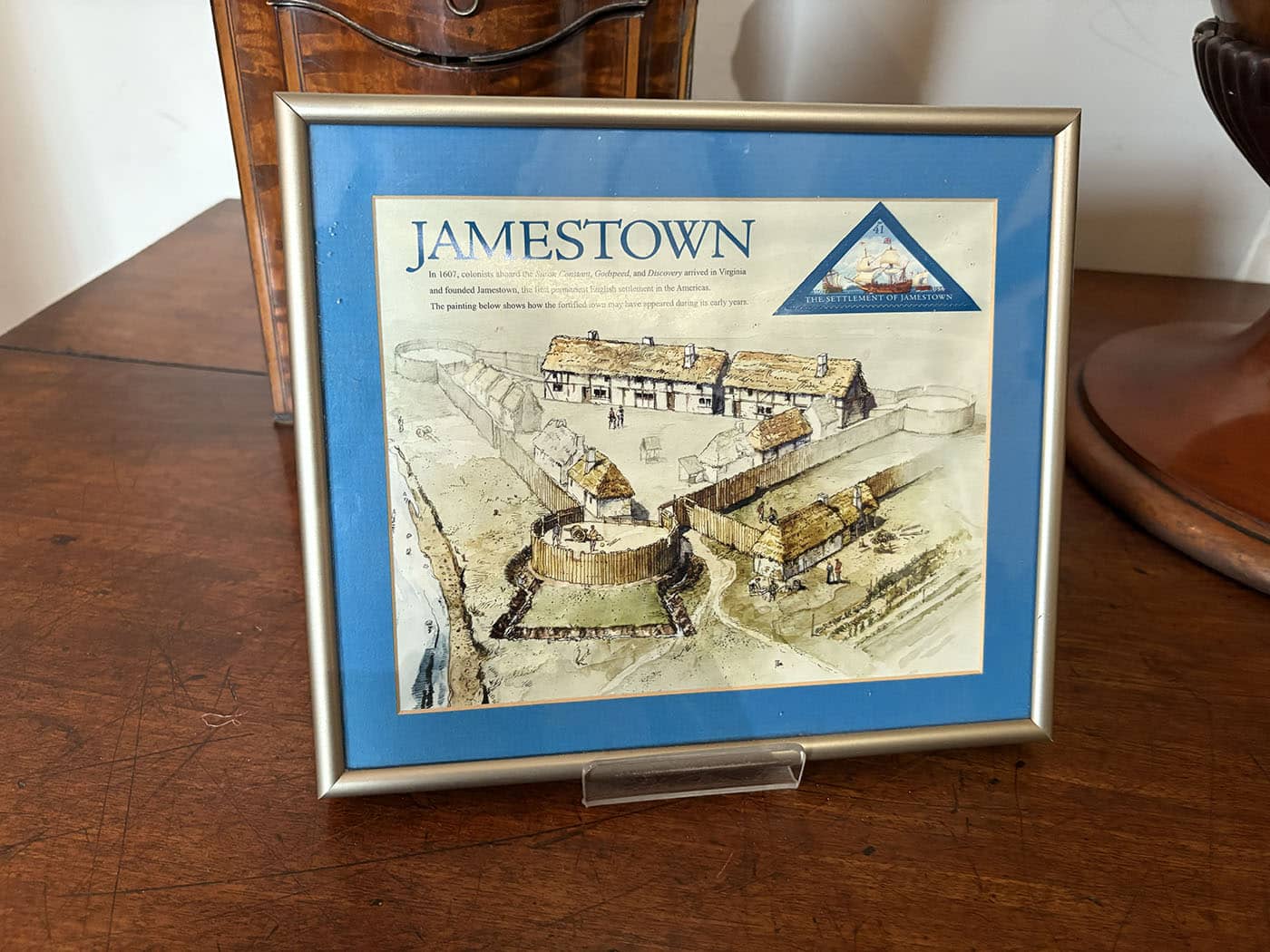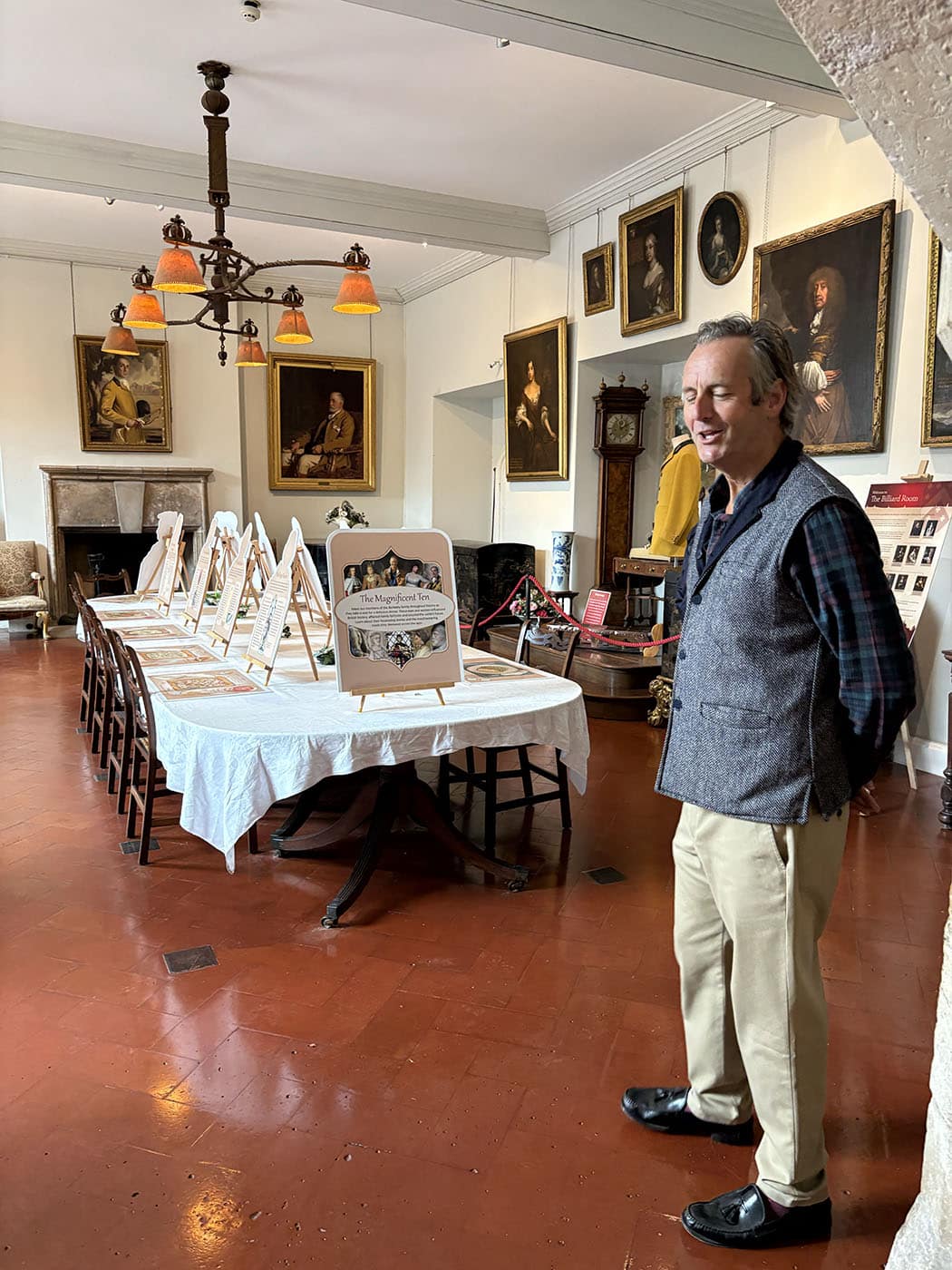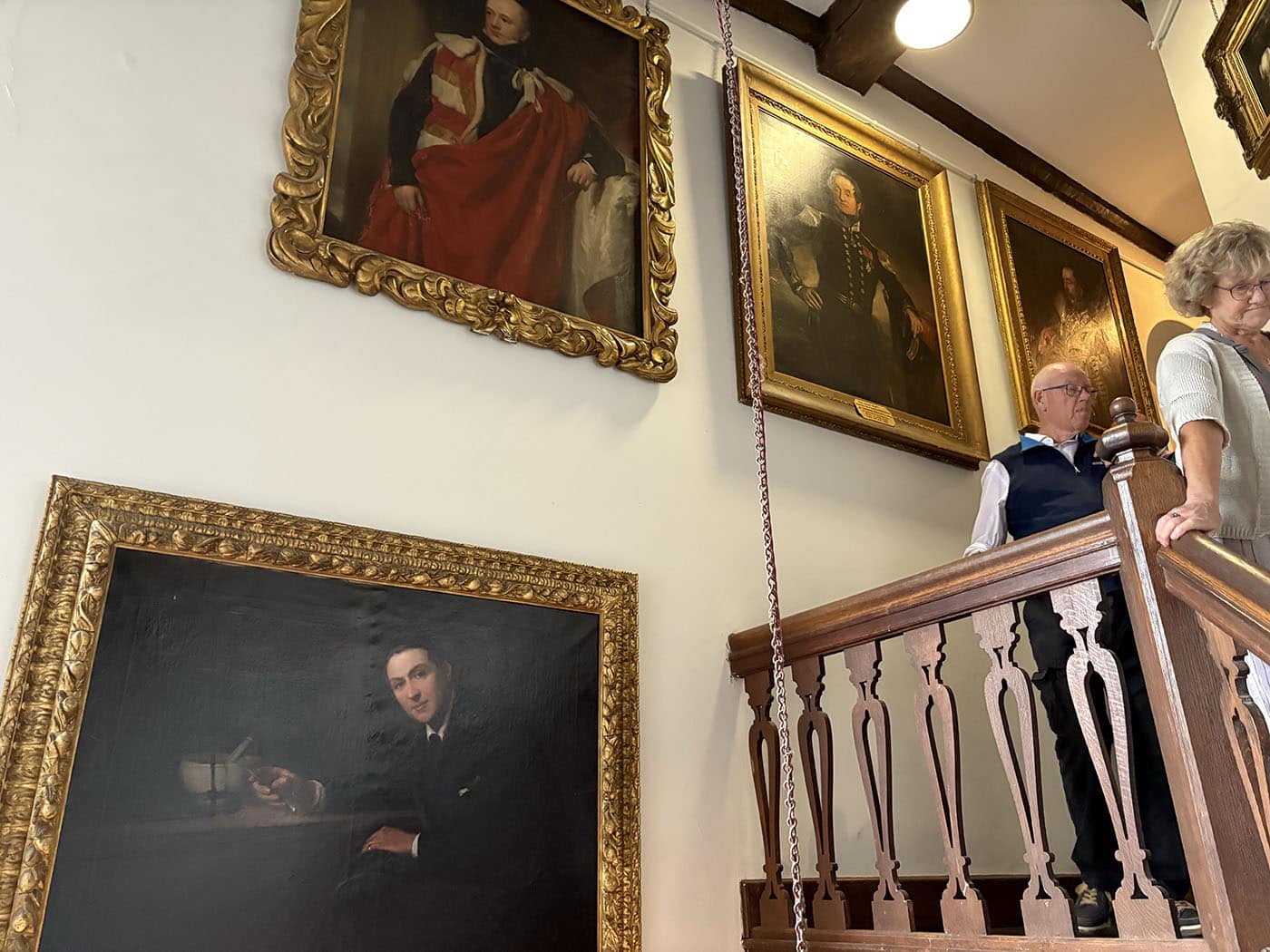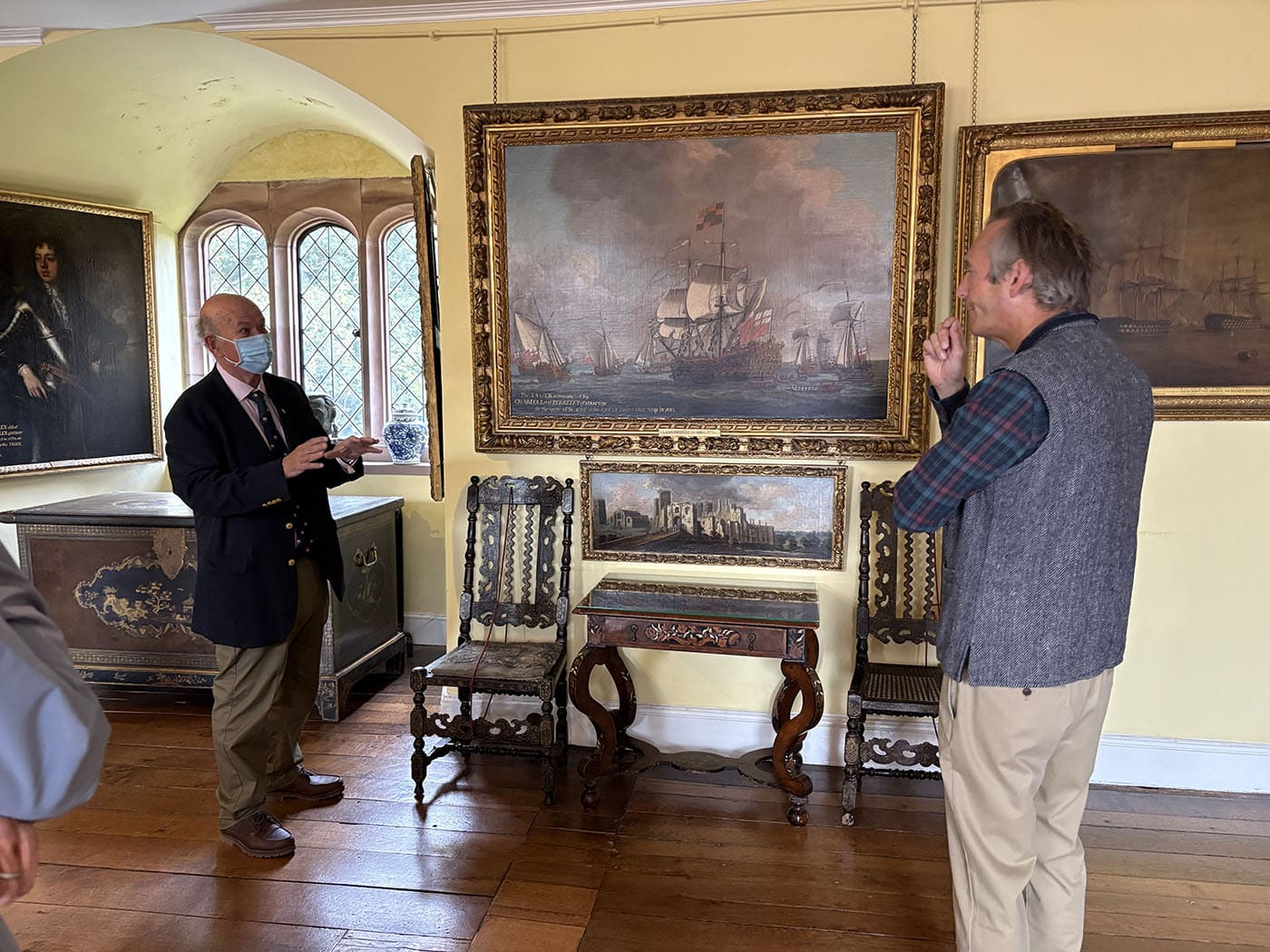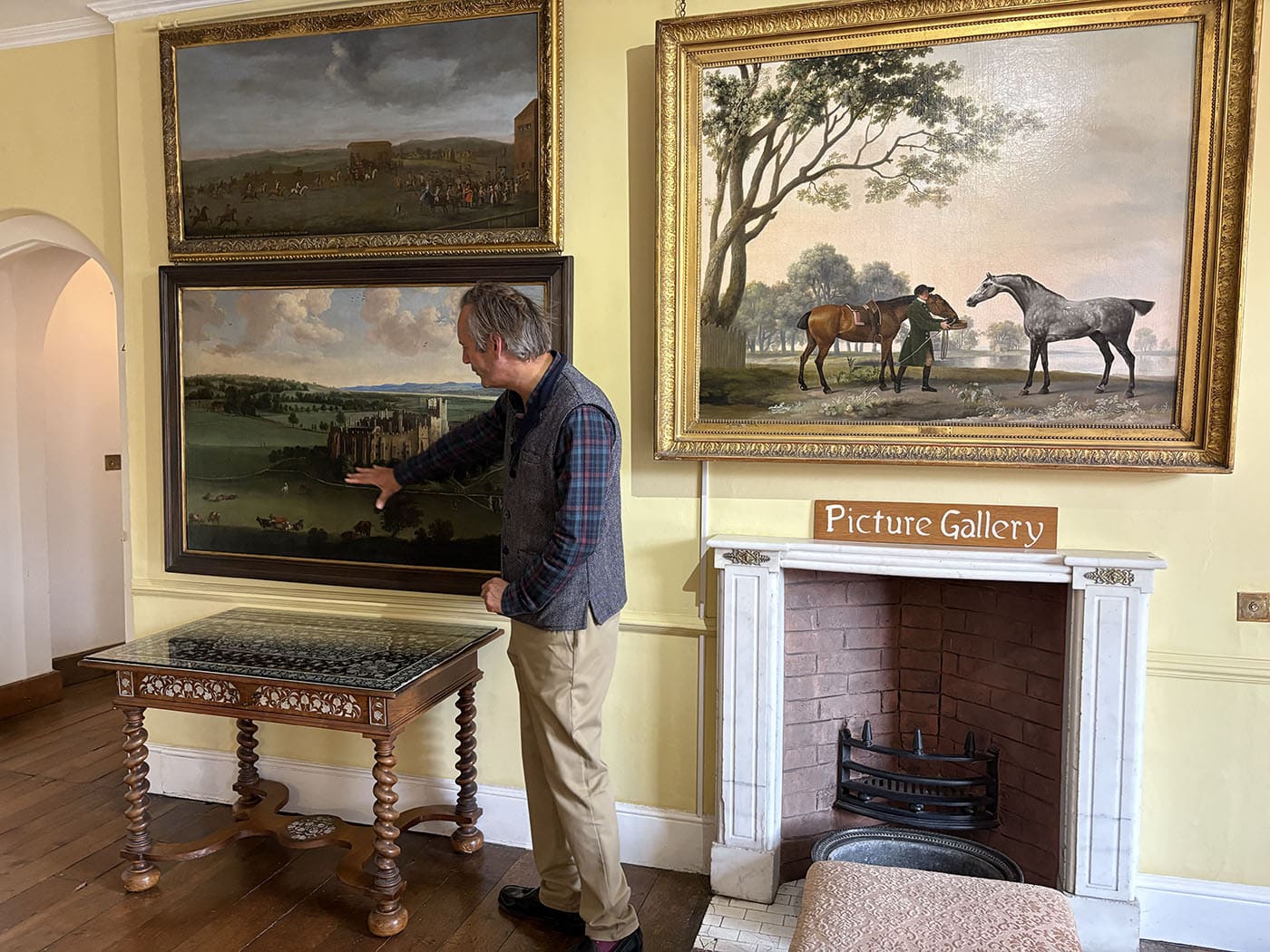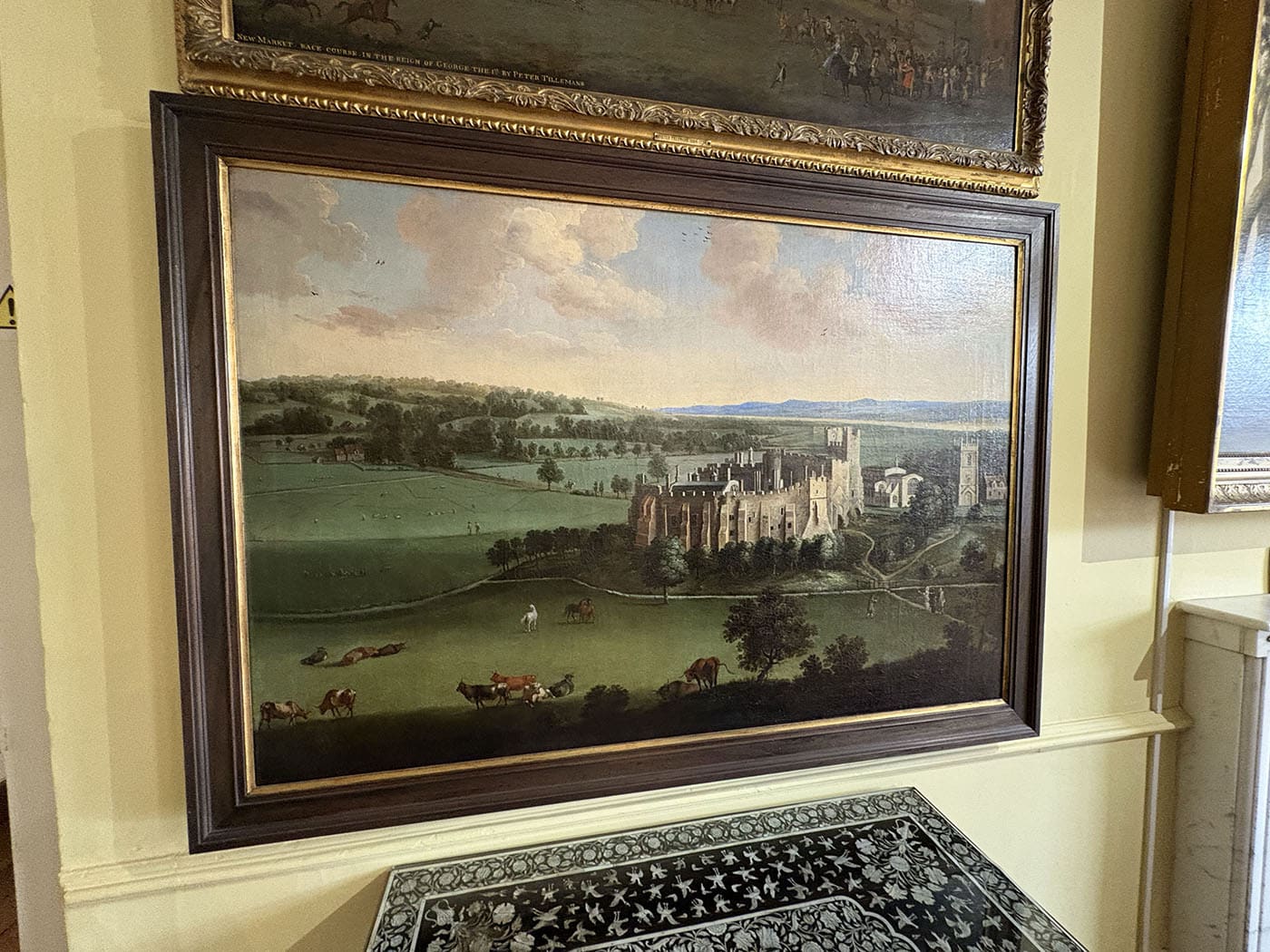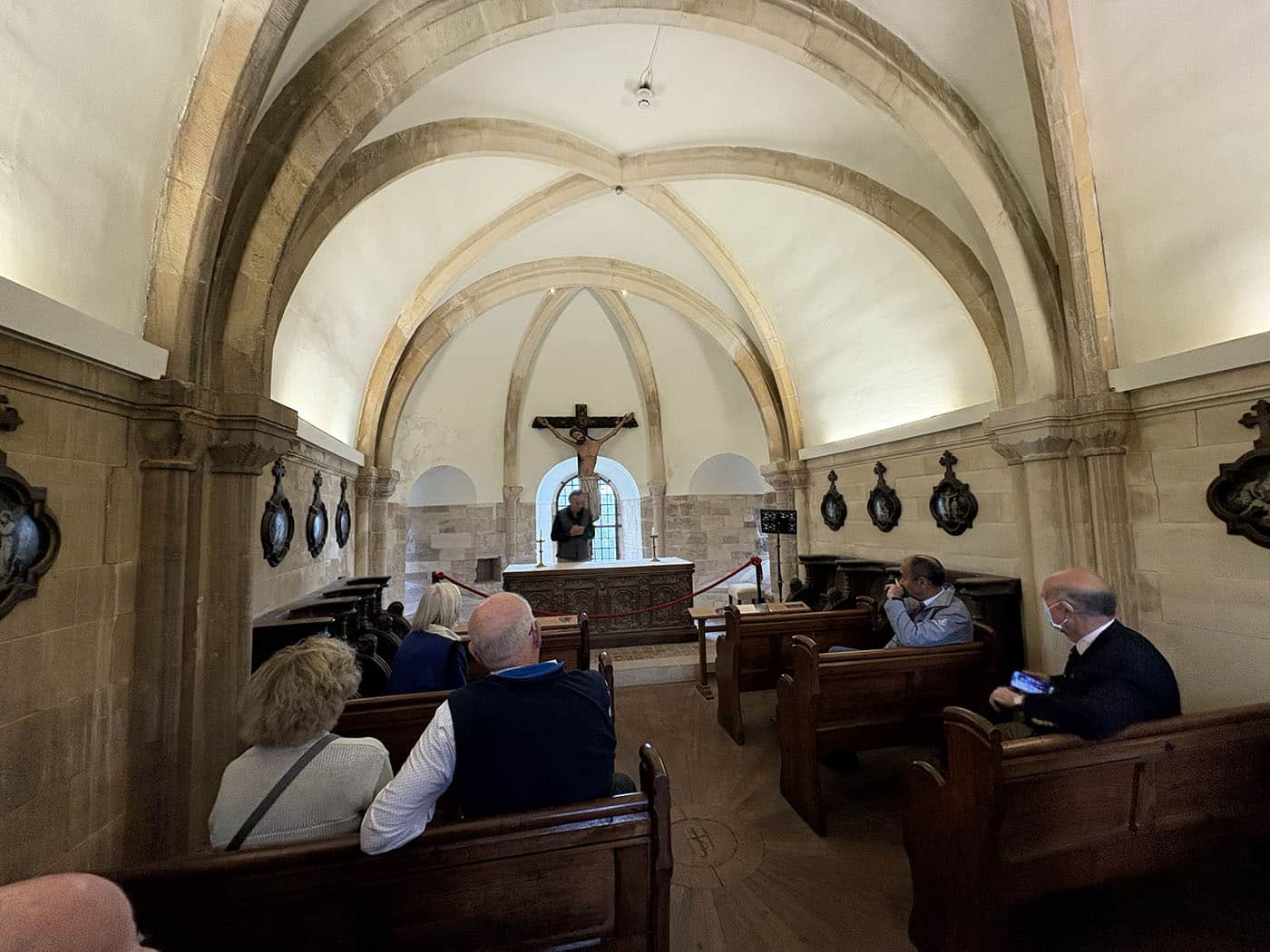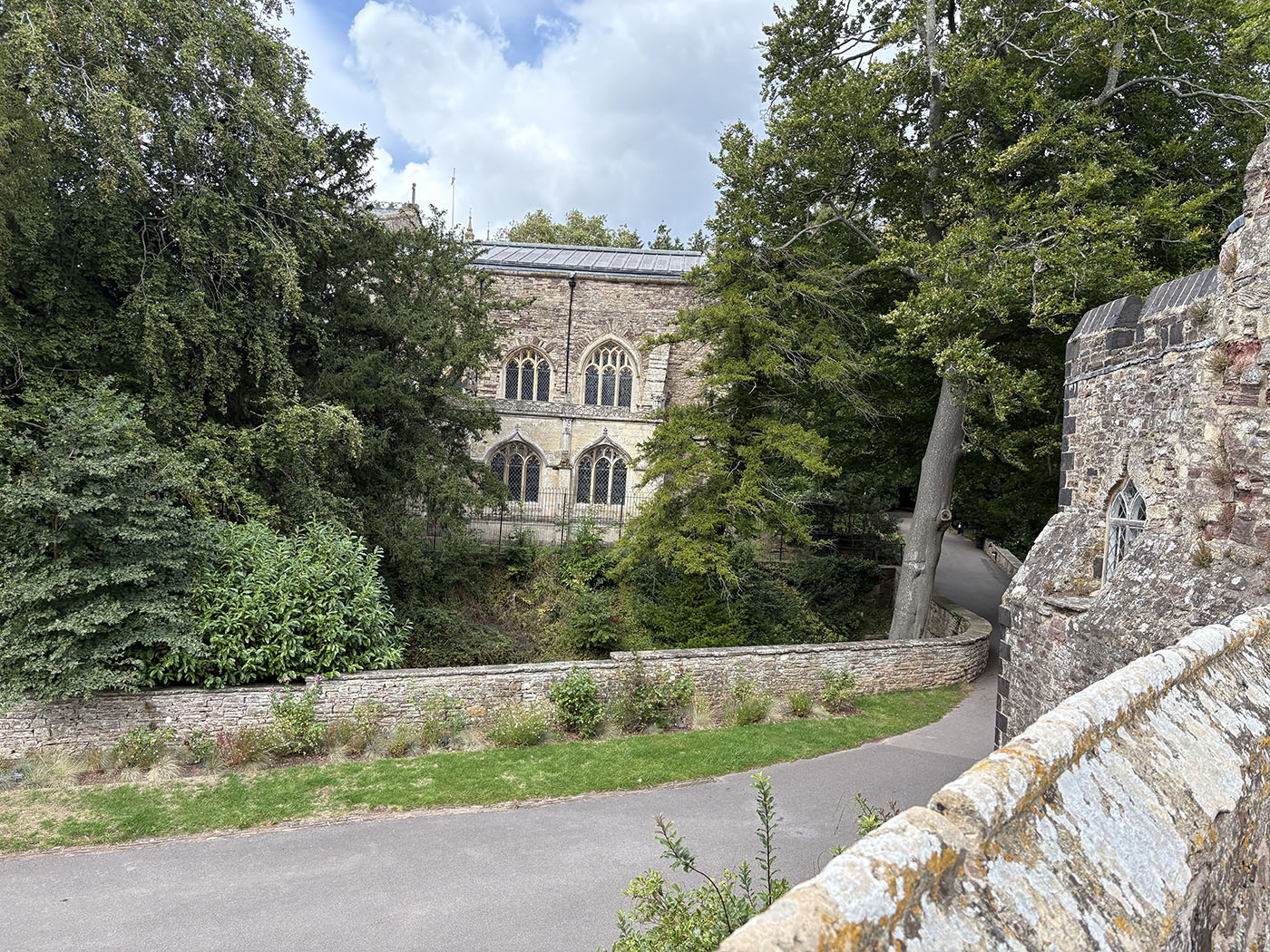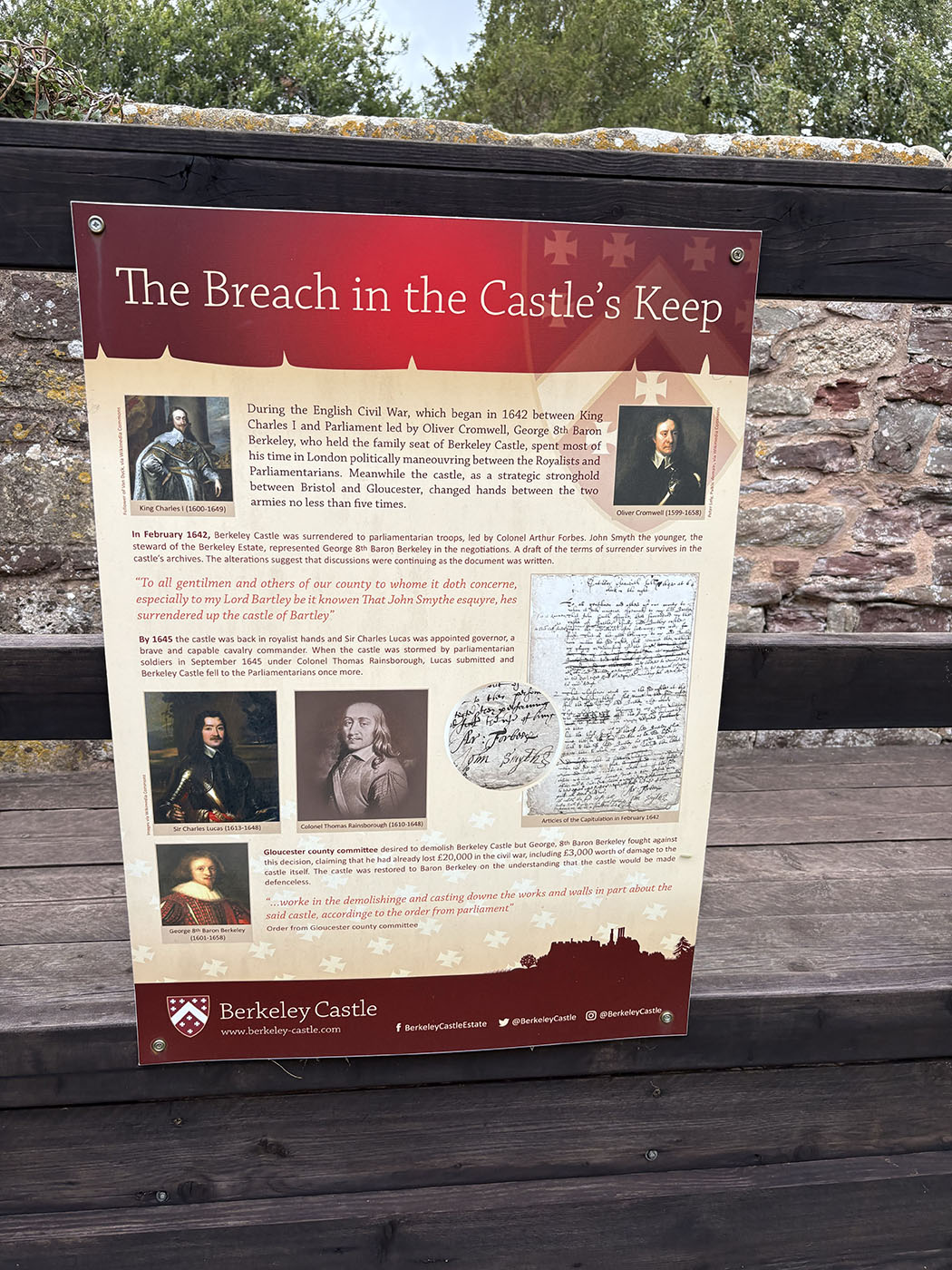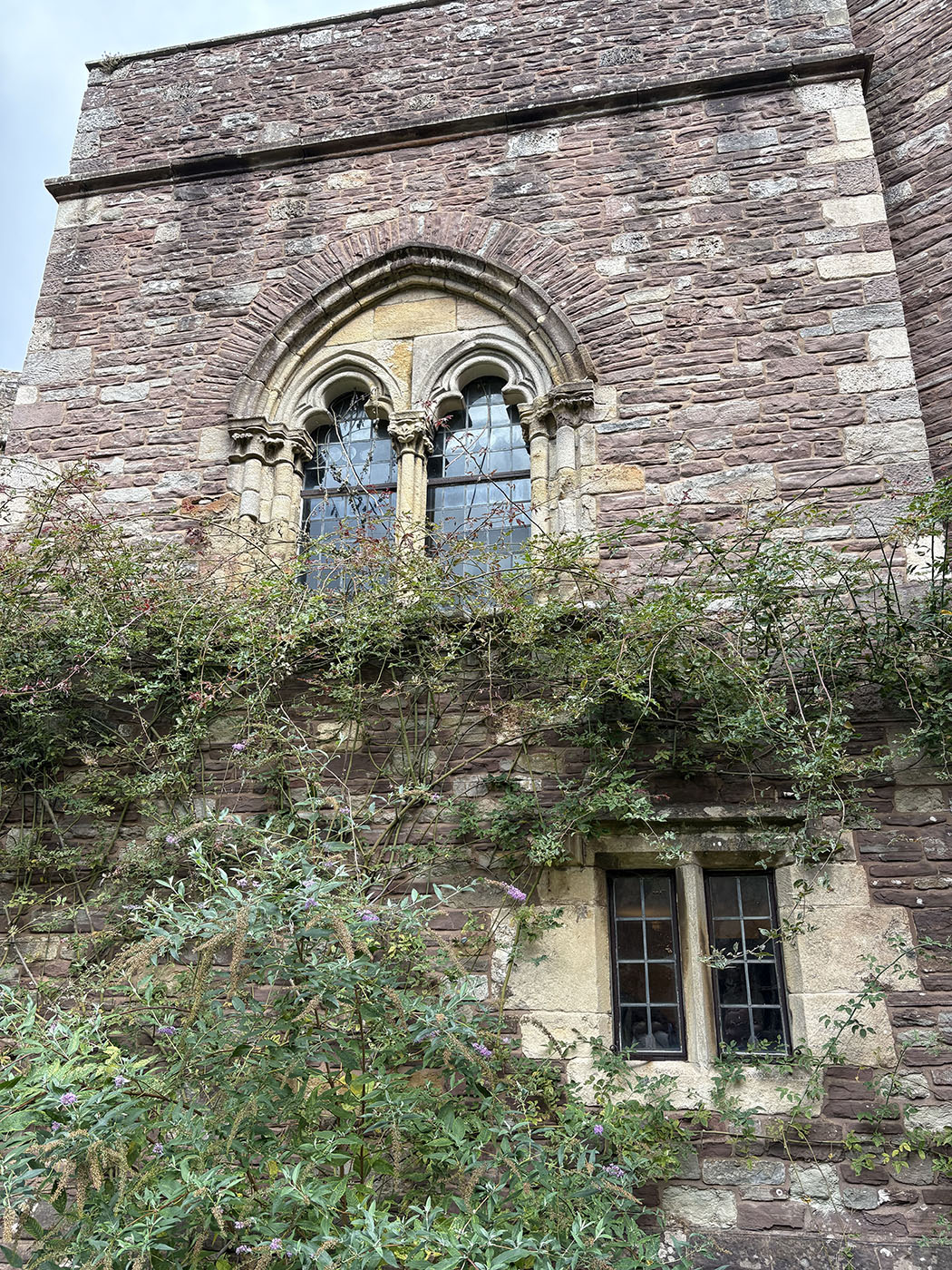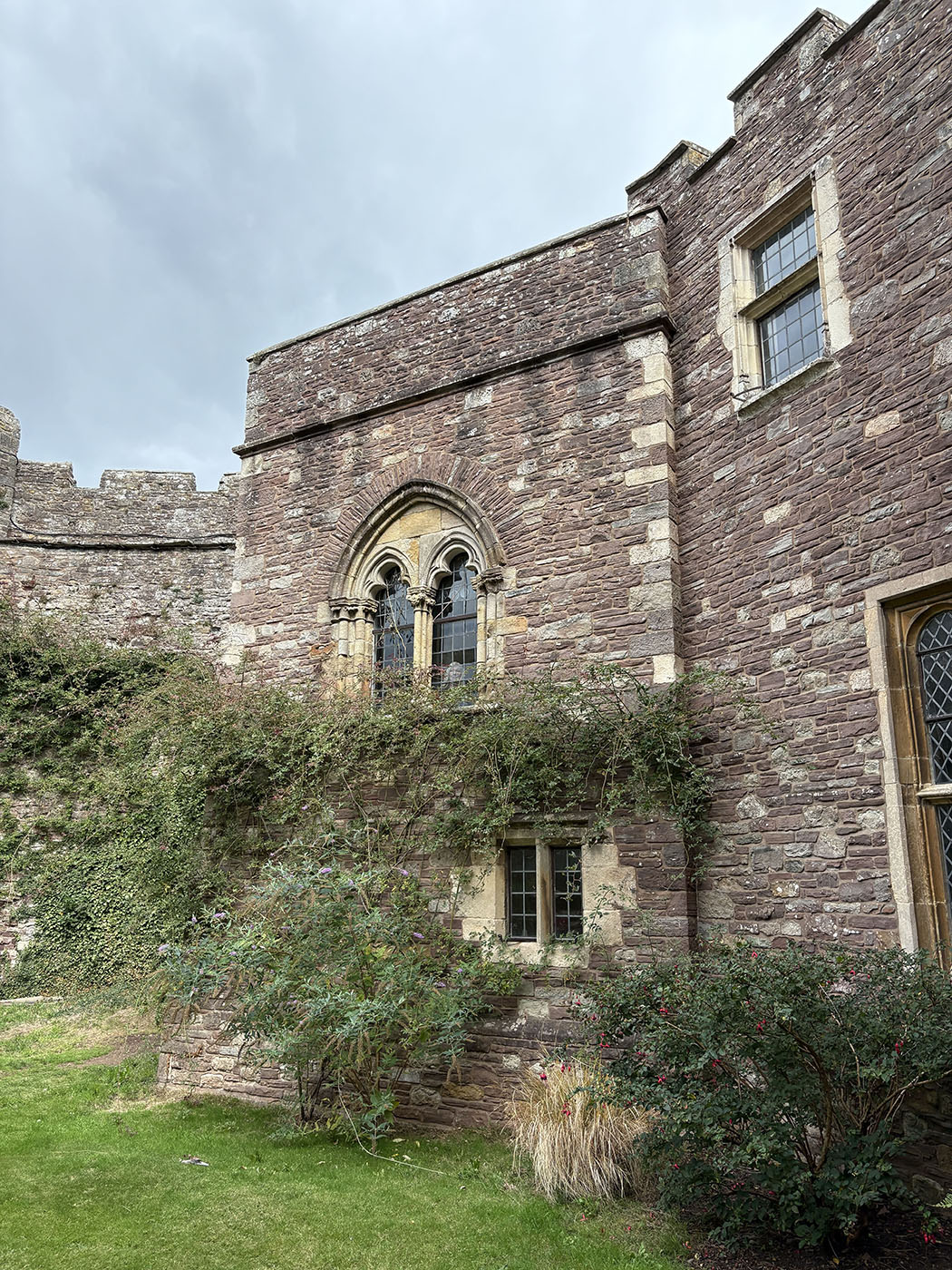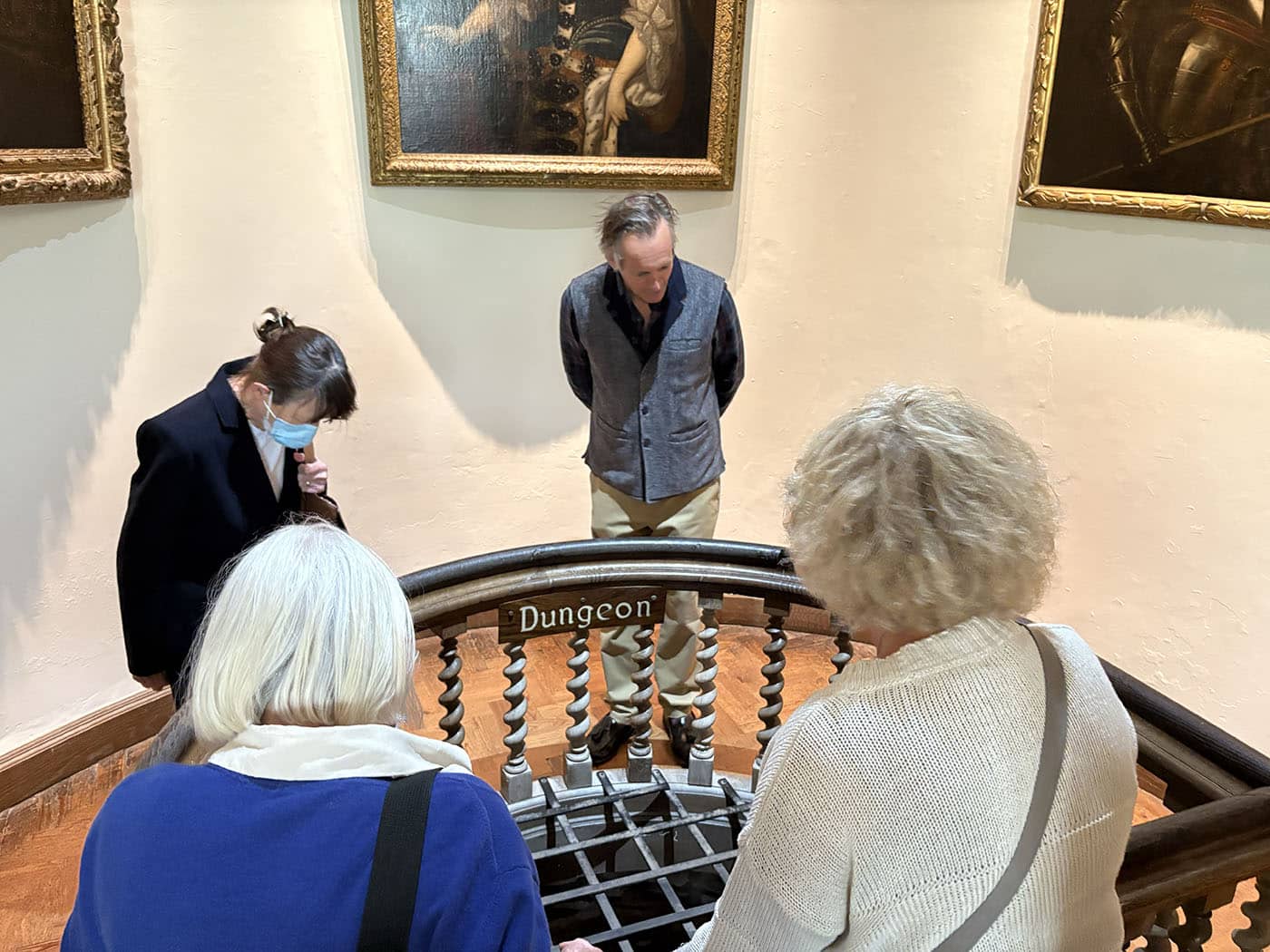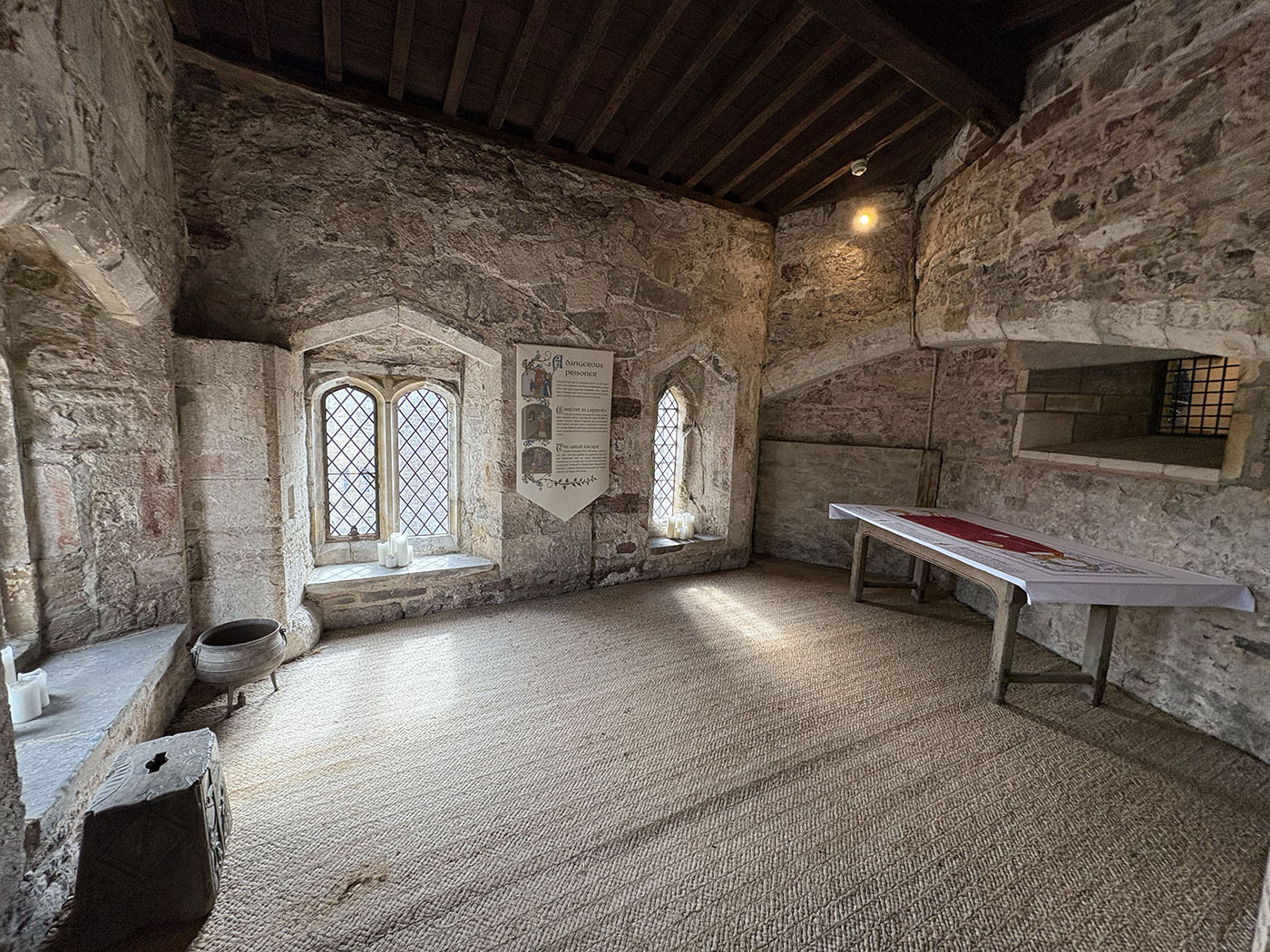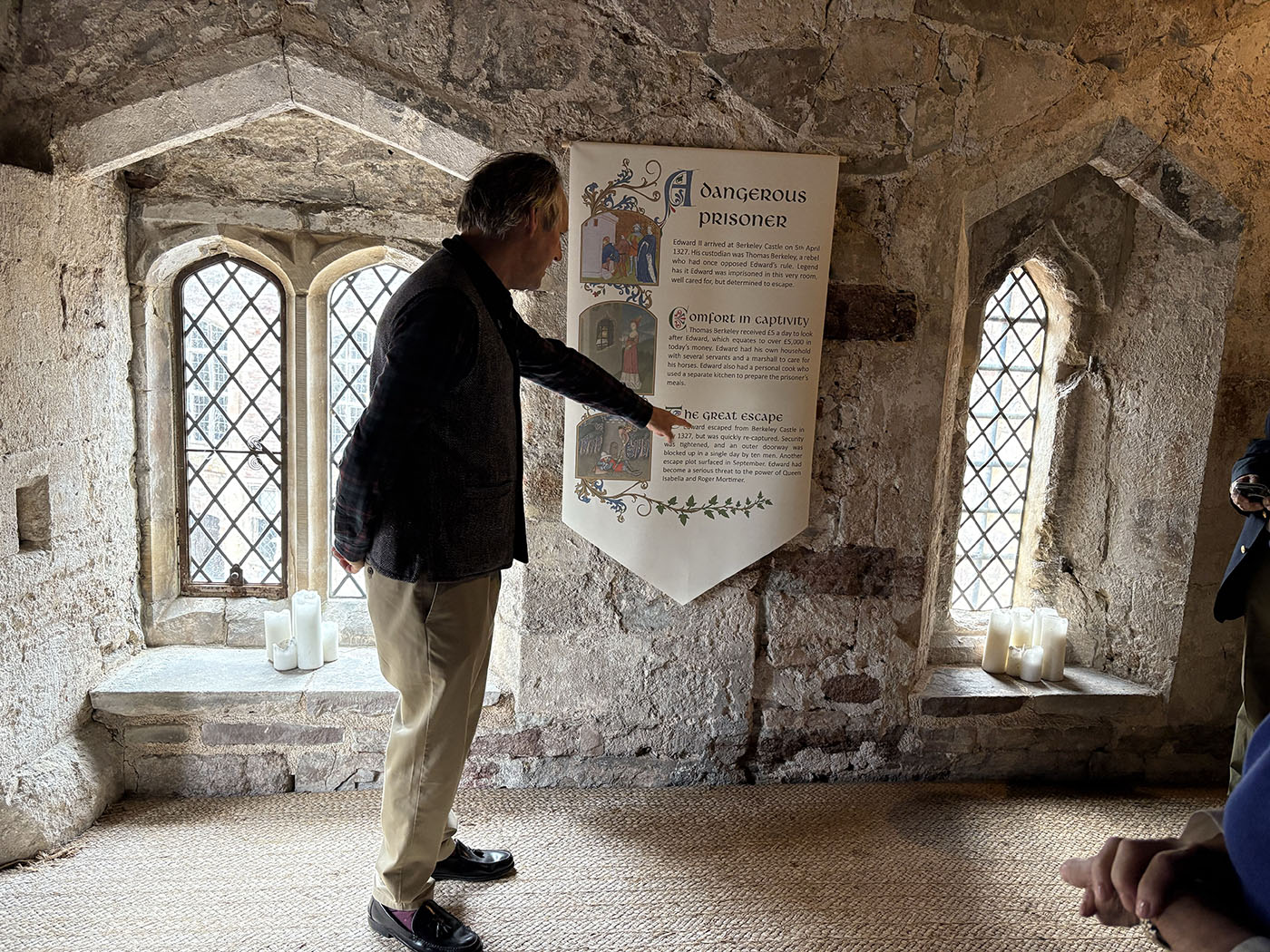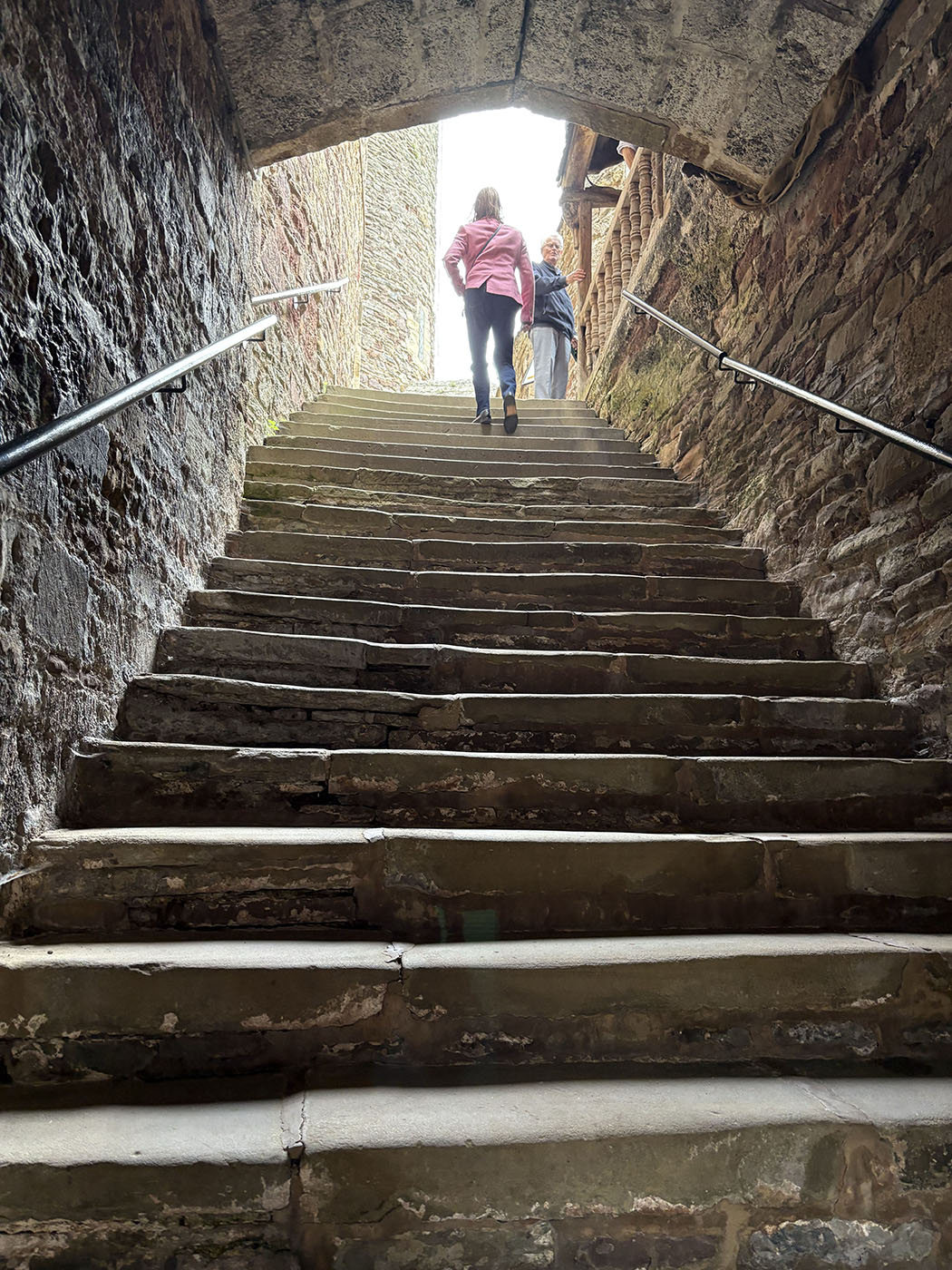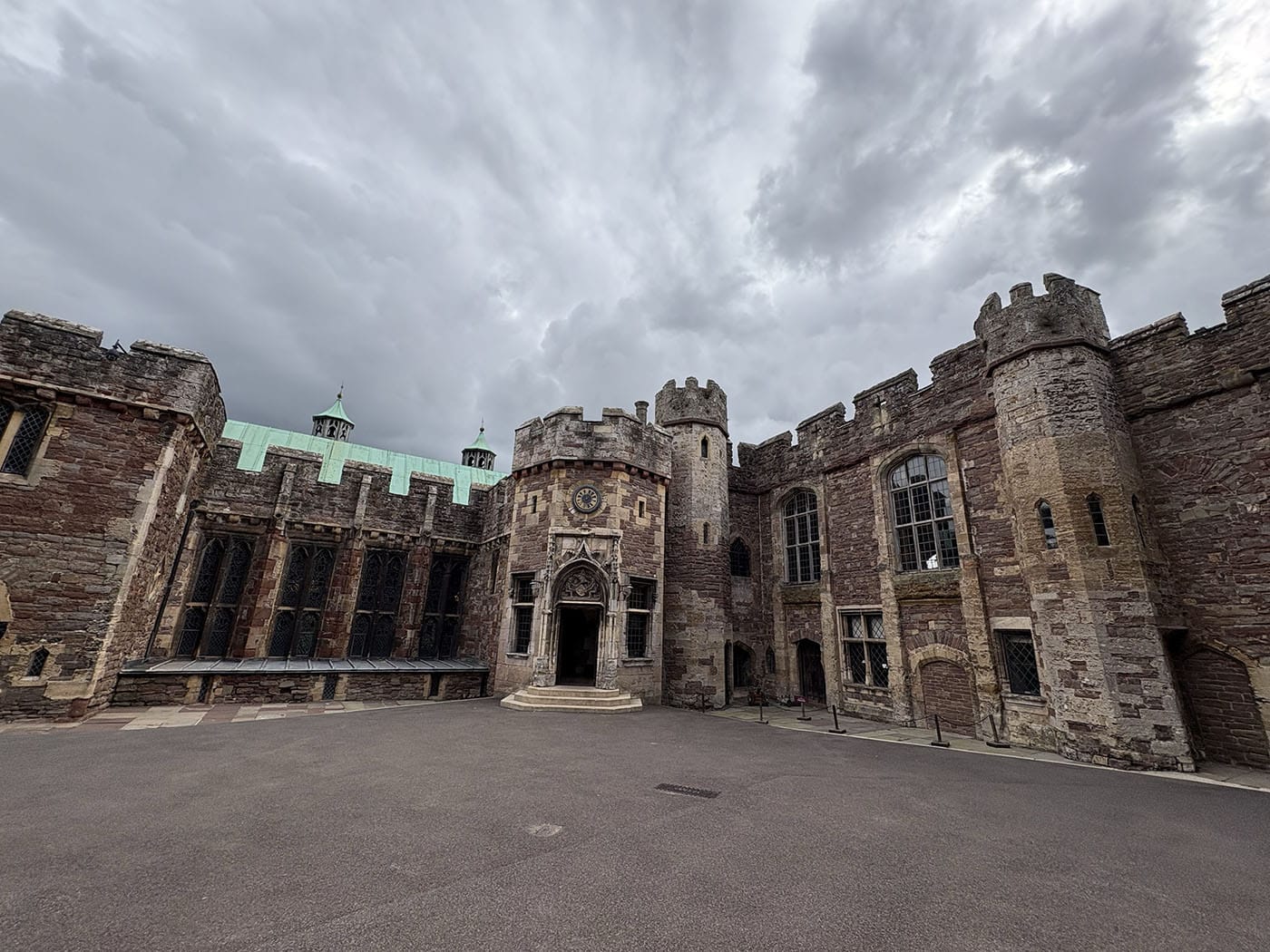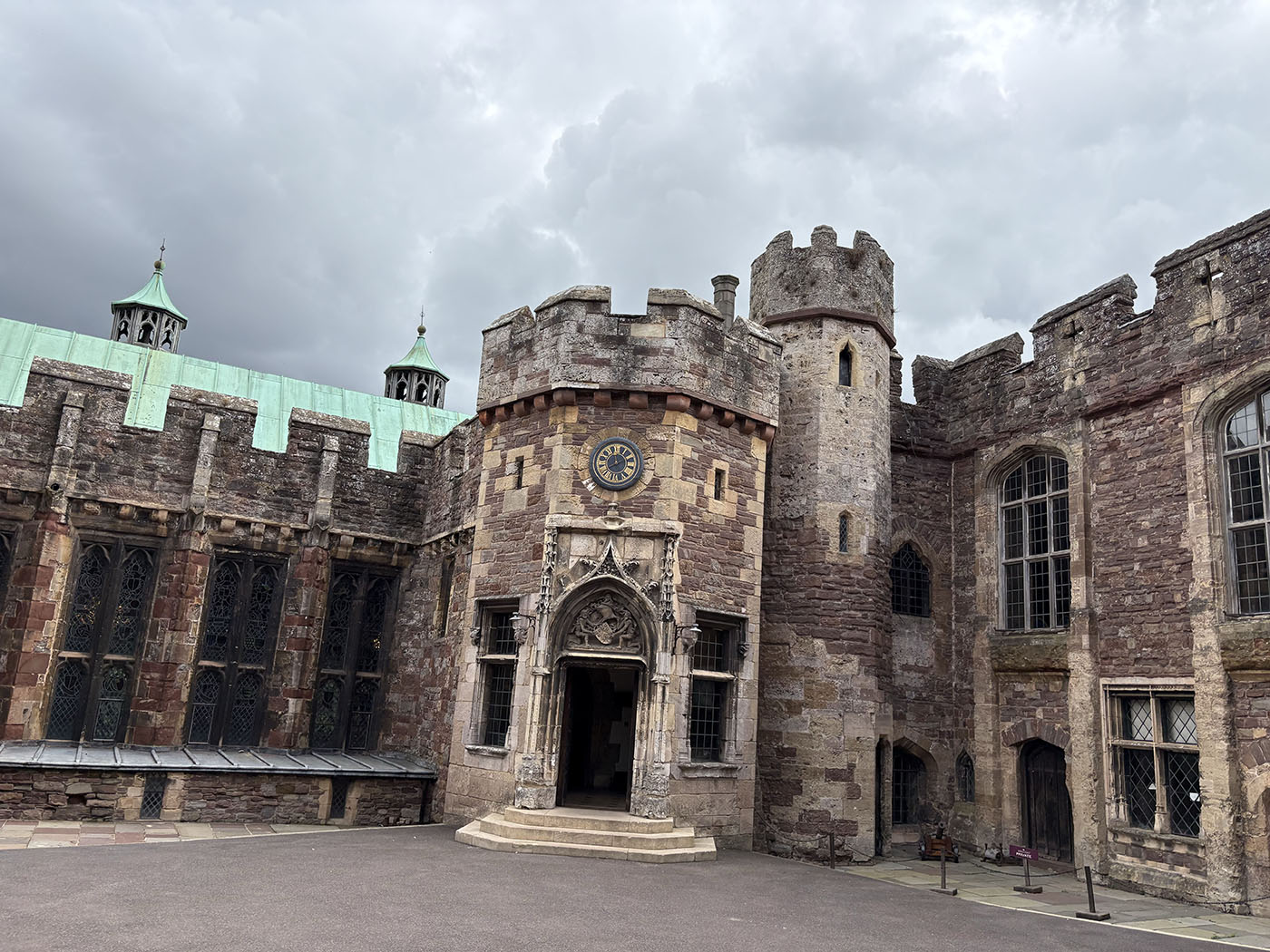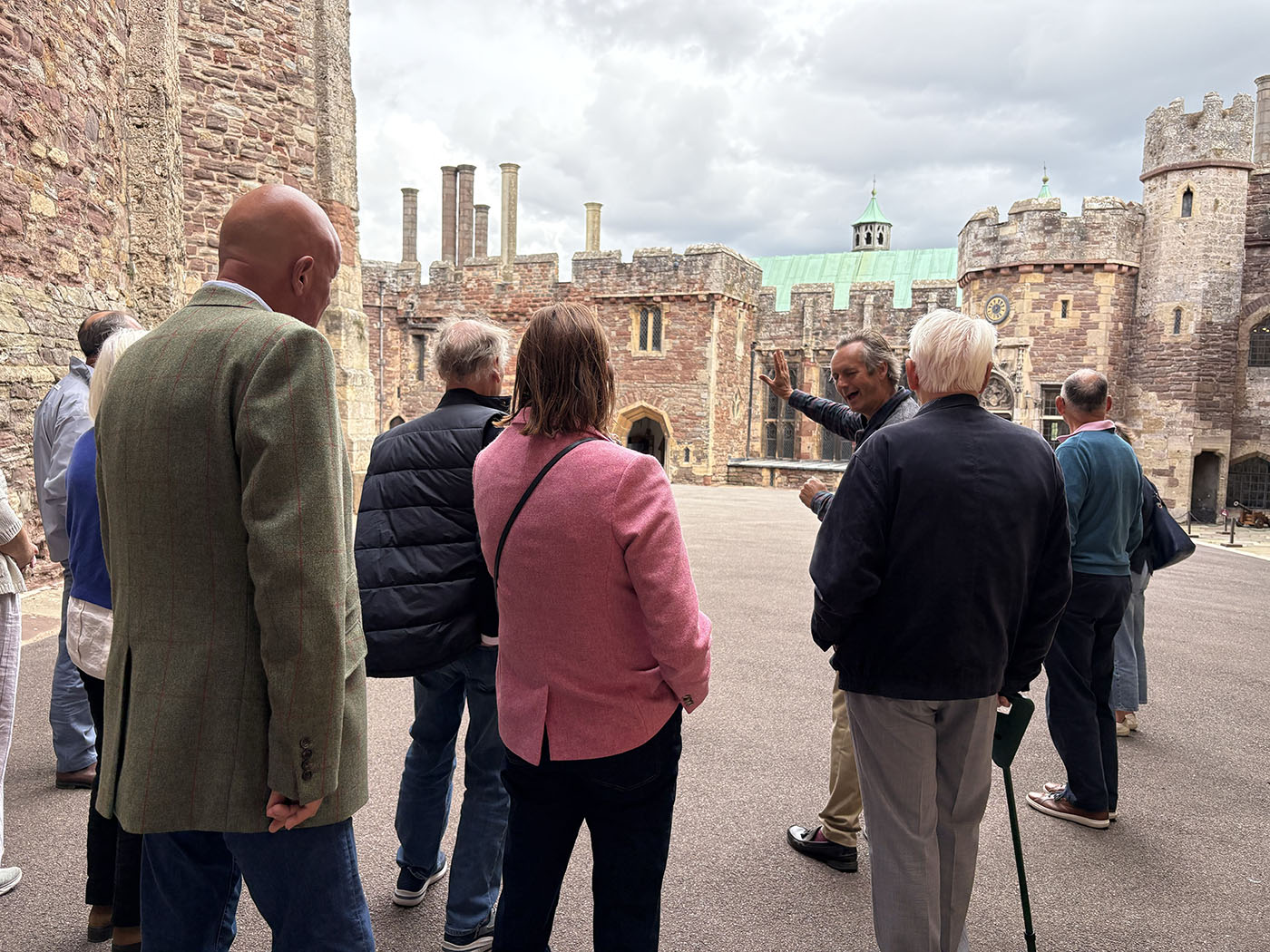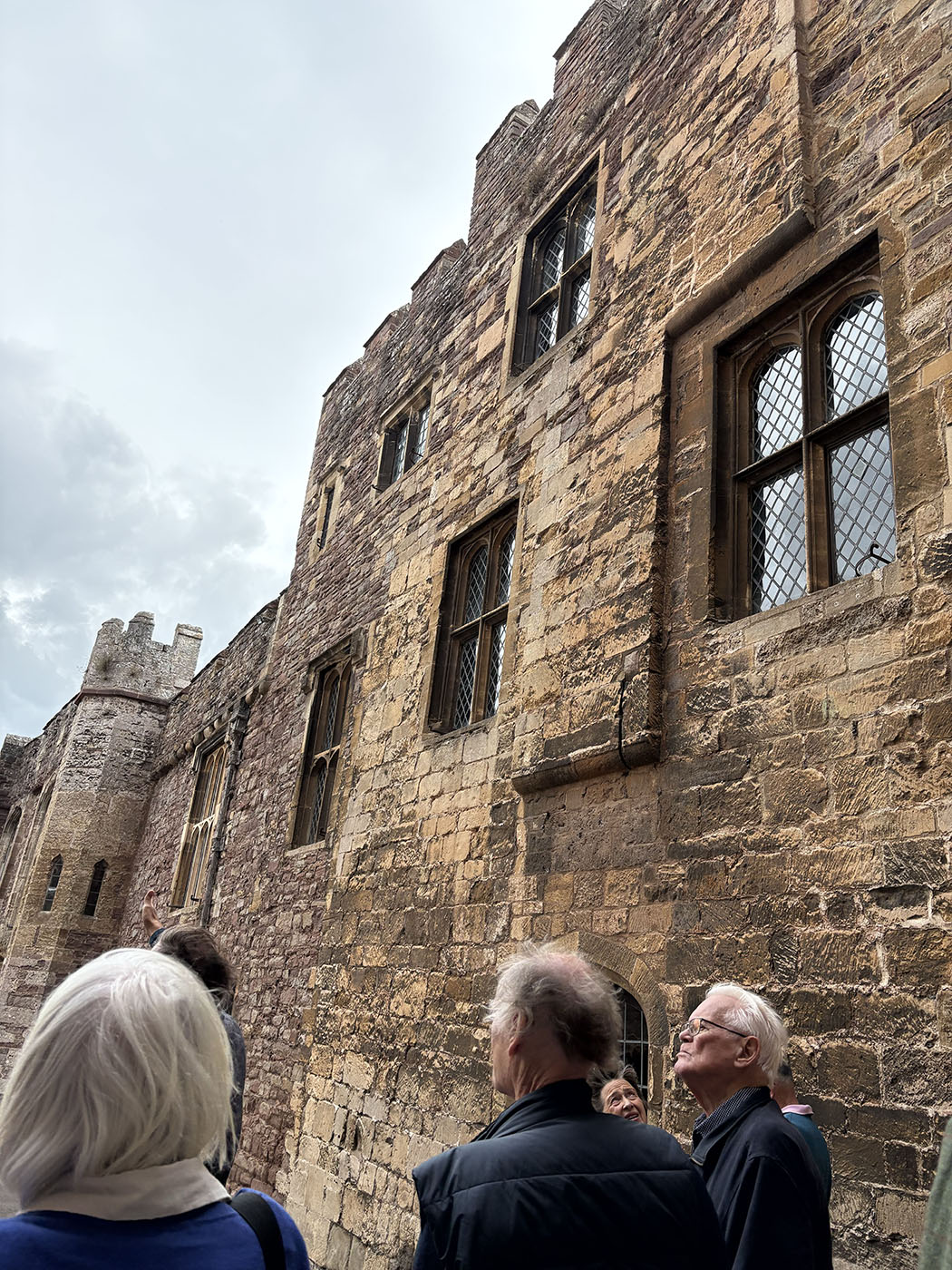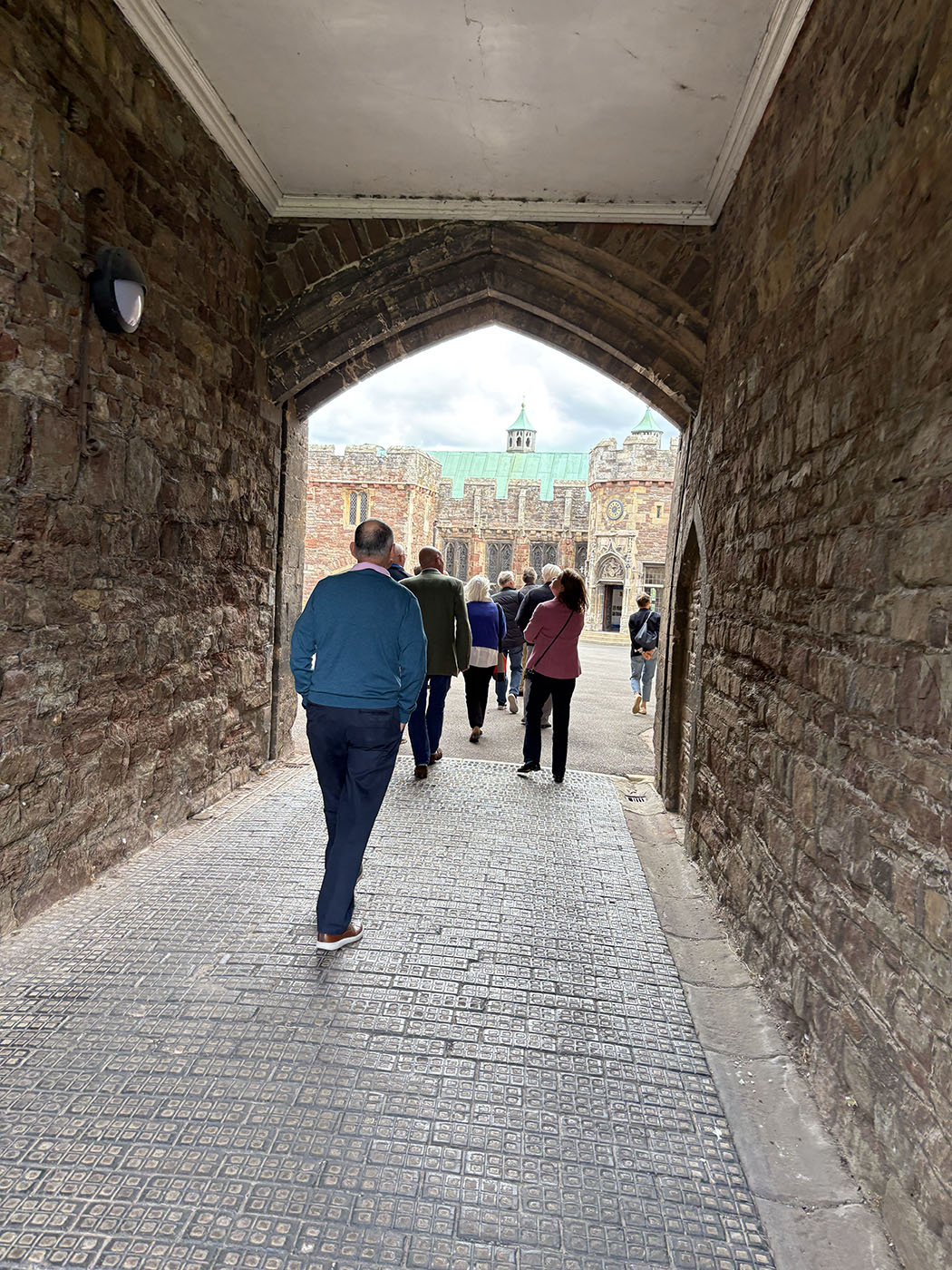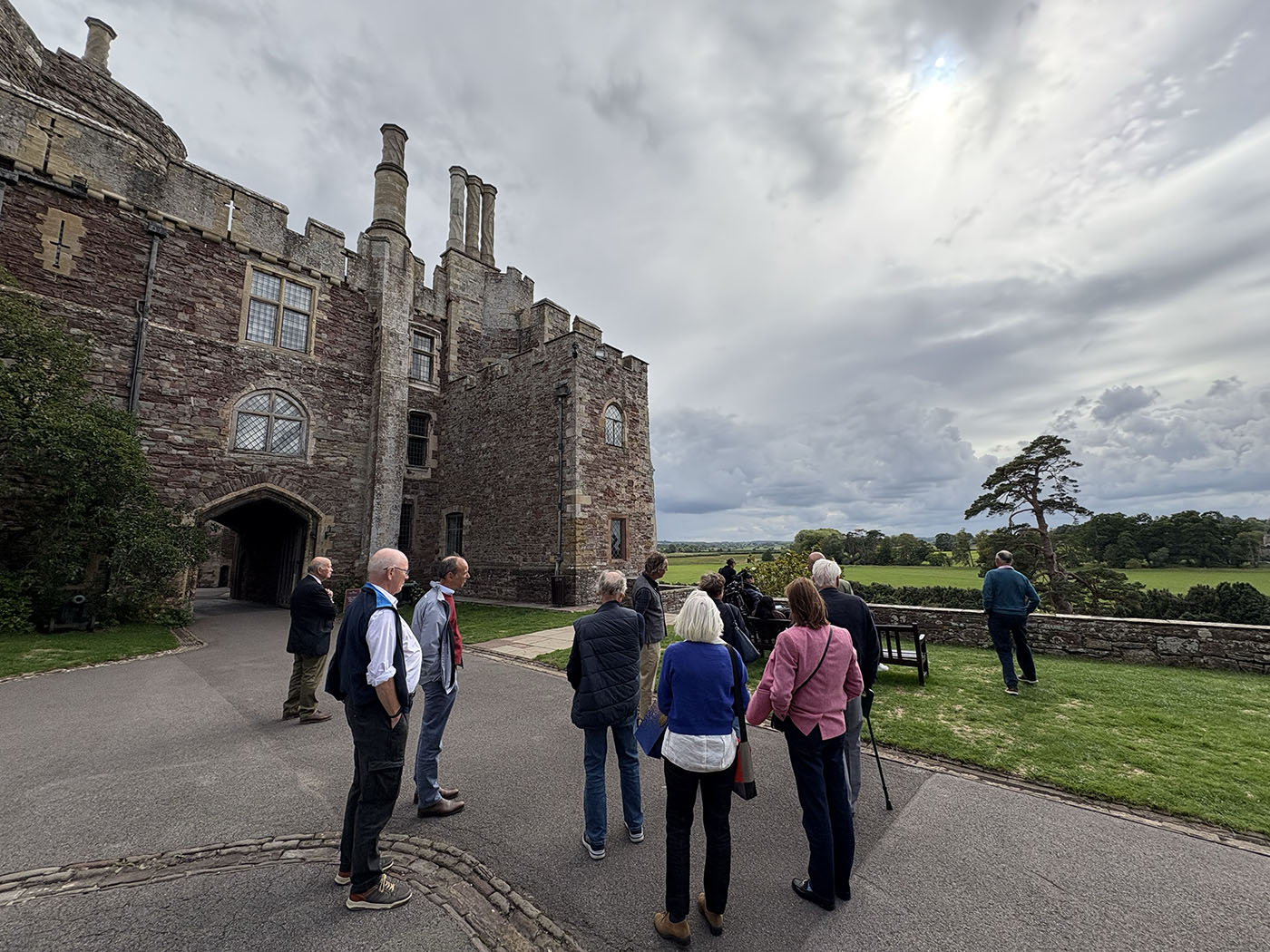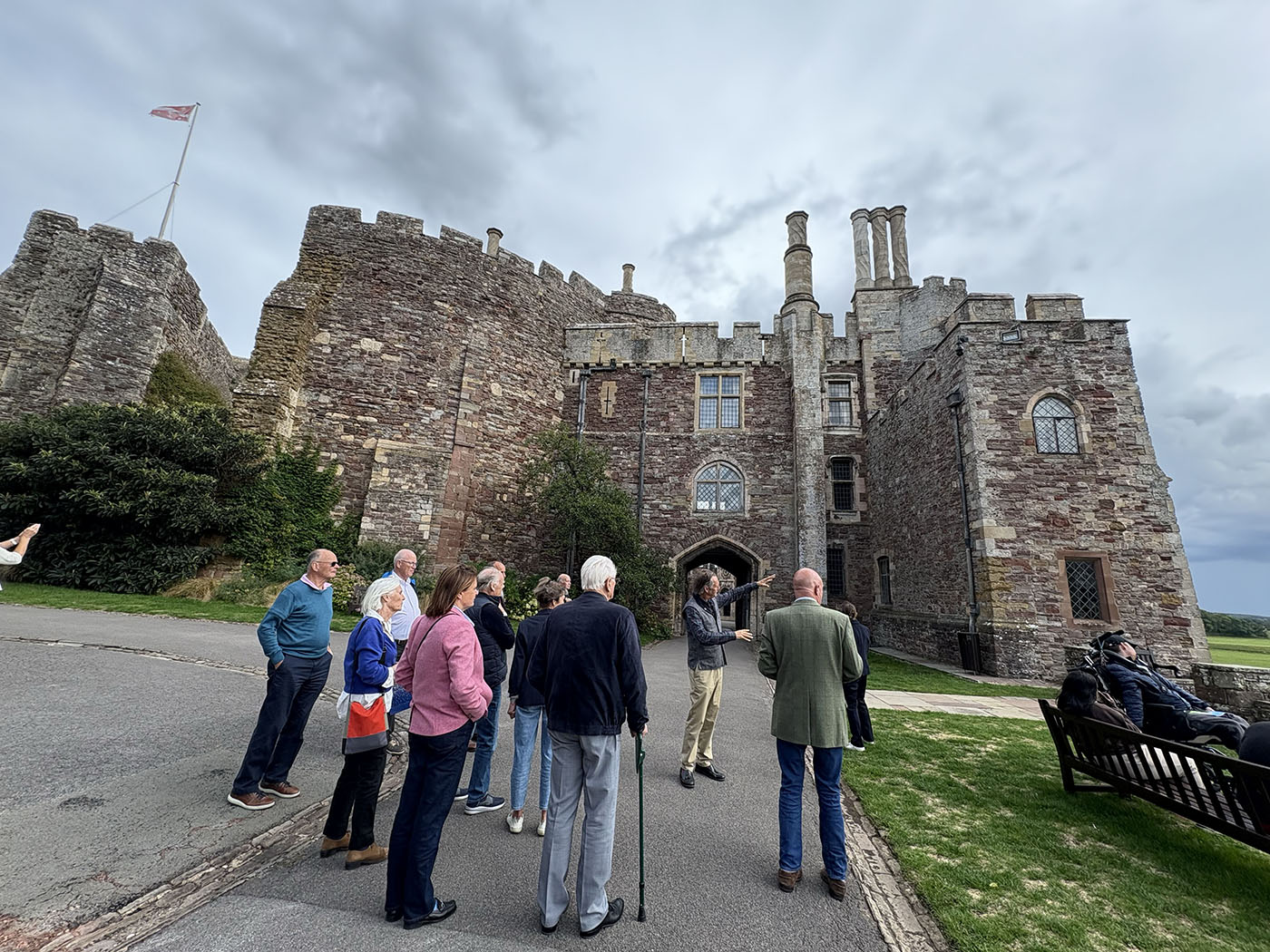Fitzhardinge Society visit to Berkeley Castle
Robert Fitzhardinge was a Saxon Nobleman who undertook two great building projects in the mid-1100s – St Augustine’s Abbey in Bristol and Berkeley Castle in Gloucestershire.
This deep-rooted connection between Berkeley Castle and Bristol Cathedral is of great interest to the Fitzhardinge Society, whose members were honoured to be invited on a private tour of the castle in September, hosted by Charles Berkeley himself, to explore and better understand our shared history.
Standing proudly above the Severn Vale, Berkeley Castle remains one of the country’s most remarkable historical treasures. It is the oldest continuously occupied castle in England still owned by the same family who are direct descendants of Robert Fitzhardinge, from whom the Berkeley family traces its lineage.
The castle’s origins date back to 1153, when Henry II confirmed Robert Fitzhardinge’s possession of Berkeley and granted him permission to construct a castle. Construction began in 1154, and Robert Fitzhardinge became the first Baron Berkeley, founding a family line that has retained the castle for nearly 900 years.
Throughout those centuries, Berkeley Castle has played a central role in English history, from the infamous murder of King Edward II in 1327, to its architectural transformation through times of war, peace and periods of royal favour and family dispute. The Berkeleys have been steadfast stewards of this extraordinary place through 28 generations, shaping its story and preserving its legacy.
On a glorious autumn day, Fitzhardinge Society members and trustees were warmly welcomed by Charles Berkeley, who generously opened his family home to share its rich stories, both historical and personal. As we gathered in the entranceway overlooking the Elizabethan gardens, Charles drew our attention to the striking Scots pine, believed to have grown from a seed or cutting taken from the Battle of Culloden site in 1746, where the 4th Earl of Berkeley commanded a regiment. Planted between 1748 and 1753, the tree became a favourite childhood hiding spot for Charles and his brother who enjoyed playing hide and seek during their winters at the castle.
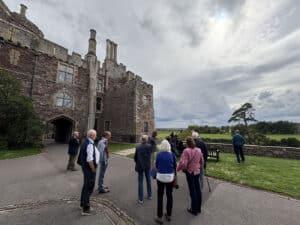
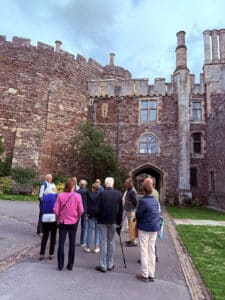
 Beyond the gardens, we looked out onto the Berkeley Estate which stretches across ancient deer parkland. Charles lives with his family in a farmhouse on the estate, while his mother, Gina Berkeley, remains the castle’s current resident.
Beyond the gardens, we looked out onto the Berkeley Estate which stretches across ancient deer parkland. Charles lives with his family in a farmhouse on the estate, while his mother, Gina Berkeley, remains the castle’s current resident.
Before carefully ascending the historic ‘trip steps’, designed to trip up intruders, Charles pointed out the clock tower in the courtyard, recalling childhood games of climbing it with his brother.


 We were intrigued to visit the room where Edward II is believed to have been murdered, and we peered into the depths of the gruesome dungeon pit, which is located adjacent to a guest bedroom. Charles amusingly recalled an occasion when a party guest had endured a sleepless night, despite firmly bolting the bedroom door, kept awake by a furtive imagination linked to the proximity to the deep dungeon pit.
We were intrigued to visit the room where Edward II is believed to have been murdered, and we peered into the depths of the gruesome dungeon pit, which is located adjacent to a guest bedroom. Charles amusingly recalled an occasion when a party guest had endured a sleepless night, despite firmly bolting the bedroom door, kept awake by a furtive imagination linked to the proximity to the deep dungeon pit.
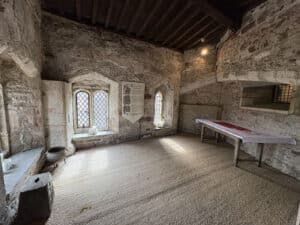
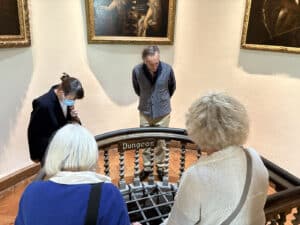
 In the peaceful Catholic Chapel, which is currently open to the public throughout the month of September, Charles reminisced about Sunday Mass during his childhood winters, always held at 10 o’clock sharp, and where he and his brother often had a role to play in the service. The chapel was last in use to host his daughter’s christening in 2010.
In the peaceful Catholic Chapel, which is currently open to the public throughout the month of September, Charles reminisced about Sunday Mass during his childhood winters, always held at 10 o’clock sharp, and where he and his brother often had a role to play in the service. The chapel was last in use to host his daughter’s christening in 2010.

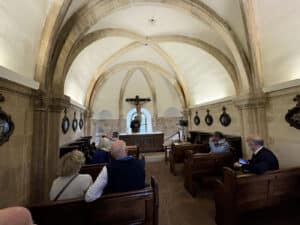
The castle houses an exceptional collection of furniture, paintings, portraits, tapestries, weapons and artifacts accumulated by the Berkeley family over centuries. In addition to the items on display, the archive room, located in an underground bunker, houses over 20,000 documents, including the original Charter.

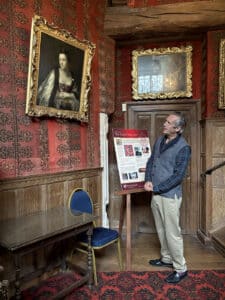
Throughout the tour, Charles highlighted many of his personal favourites, from ship models to murals. A striking oil painting of the ship Tyger, commanded by Charles Lord Berkeley of Stratton in 1681, and who sadly died onboard in 1682, captured our attention because its date is poignantly close to that of Bristol Cathedral’s organ, built in 1685 by Renatus Harris.

Among the famous figures in Berkeley Castle’s history is Dr Edward Jenner, pioneer of the smallpox vaccine, and Charles explained how Dr Jenner had inoculated local children on the Berkeley state, free of charge. A portrait of him hangs in the castle, alongside the story of how, in 1784, Dr Jenner launched Gloucestershire’s first hydrogen balloon from the castle grounds. The unmanned balloon reportedly startled farmworkers when it landed ten miles away near Kingscote.
Down in the castle kitchens, once responsible for feeding a Victorian household of 60, we admired decorative plates bearing the Fitzhardinge family crest. Also on the kitchen wall is a painting of the Great Berkeley Poaching Affray of 1816, a grim chapter in the estate’s history when widespread poverty and strict game laws forced local men into poaching. A violent confrontation on the Berkeley Estate resulted in the death of gamekeeper William Ingram, and three of the young poachers are said to have hidden that night in the farmhouse now occupied by Charles and his family. Most of those involved were apprehended during the following weeks, resulting in two men being hanged and nine others transported to Australia.

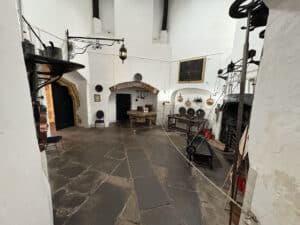
Before leaving the kitchen, Charles pointed out the intricate ceiling, recalling how the spiderweb design had captured his imagination as a young boy.



In the Great Hall, we stood surrounded by rich tapestries and paintings telling the story of the Berkeleys, Warwick and Lyle families, and various periods of loss and reclamation of the castle due to inheritance disputes.

One remarkable tale is that of Mary Cole, who married the 5th Earl of Berkeley and bore him 13 children, only to discover the marriage certificate was a forgery. Her long and determined legal battle, known as the Berkeley Peerage Case, resulted in her sixth son eventually inheriting the estate. A portrait of the formidable Mary Cole hangs prominently in the long drawing room.
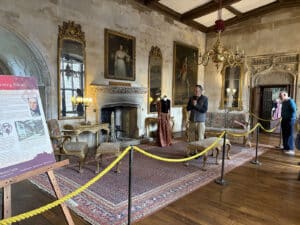
Charles himself is the 27th generation of the Berkeley family to call the castle home. He shared the interesting story of how his father first opened the castle to the public on Easter Day in 1958, unsure whether anyone would visit. In fact, over 6,000 people came through the gates in the first three months, paying an entrance fee of half a crown.
Now a popular tourist destination, Berkeley Castle is also a film and television favourite, featured in Wolf Hall, Poldark, The Other Boleyn Girl, The White Princess and The Famous Five. Charles recalled watching the Two Ronnies, dressed as beefeaters, filming a comedy sketch in the castle grounds during the 1980s.
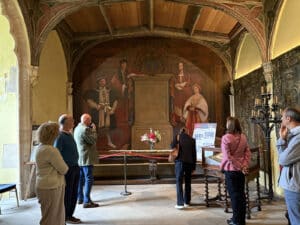

The visit concluded with Stephen Parsons MBE, Chair of Bristol Cathedral Trust, presenting Charles with a framed Honorary Lifetime Membership award, which he received with enormous pride.


The visit was not only a memorable day for Fitzhardinge Society members, but a wonderful reconnection with our shared history. Robert Fitzharding, the original lord of Berkeley, is also the founding benefactor of Bristol Cathedral. His legacy lives on in both places: in the enduring walls of Berkeley Castle and the sacred stones of Bristol Cathedral.
As we departed, Charles expressed his wish to bring his team to visit Bristol Cathedral, a request we are delighted to accommodate in the very near future.
“We are incredibly grateful to Charles for his generous hospitality and for sharing not only the extraordinary history of his family home, but also his warm and personal memories that made the visit so uniquely special.” Stephen Parsons MBE, Chair of Trustees
“Thank you for arranging such a splendid visit to Berkeley Castle. We were treated to a very special guided tour by a charming host, full of fascinating family stories and interesting history. The history of the Berkeley family is closely intertwined with the history of Bristol and with the Cathedral. As a Bristolian born and bred I find this endlessly absorbing and the visit added something further to my understanding.” John Cottrell, Fitz member.
“What a fantastic visit. We really feel privileged to have been part of this exclusive tour.” Geoff & Bernice Gollop, Fitz members.
Please scroll on to view a selection of photos from the recent Fitz visit, plus one particularly special photo dating back to 1963, when the Bristol Cathedral Choristers visited Berkeley Castle.

